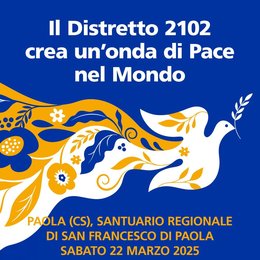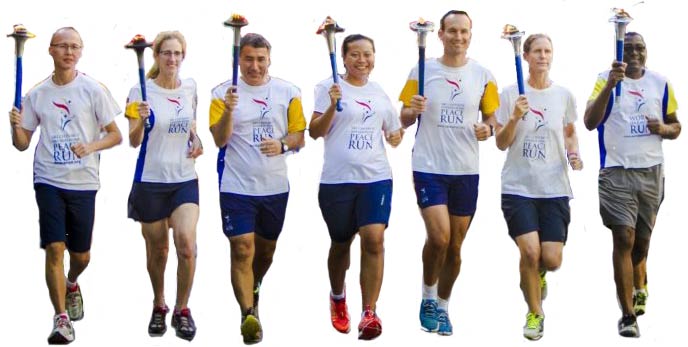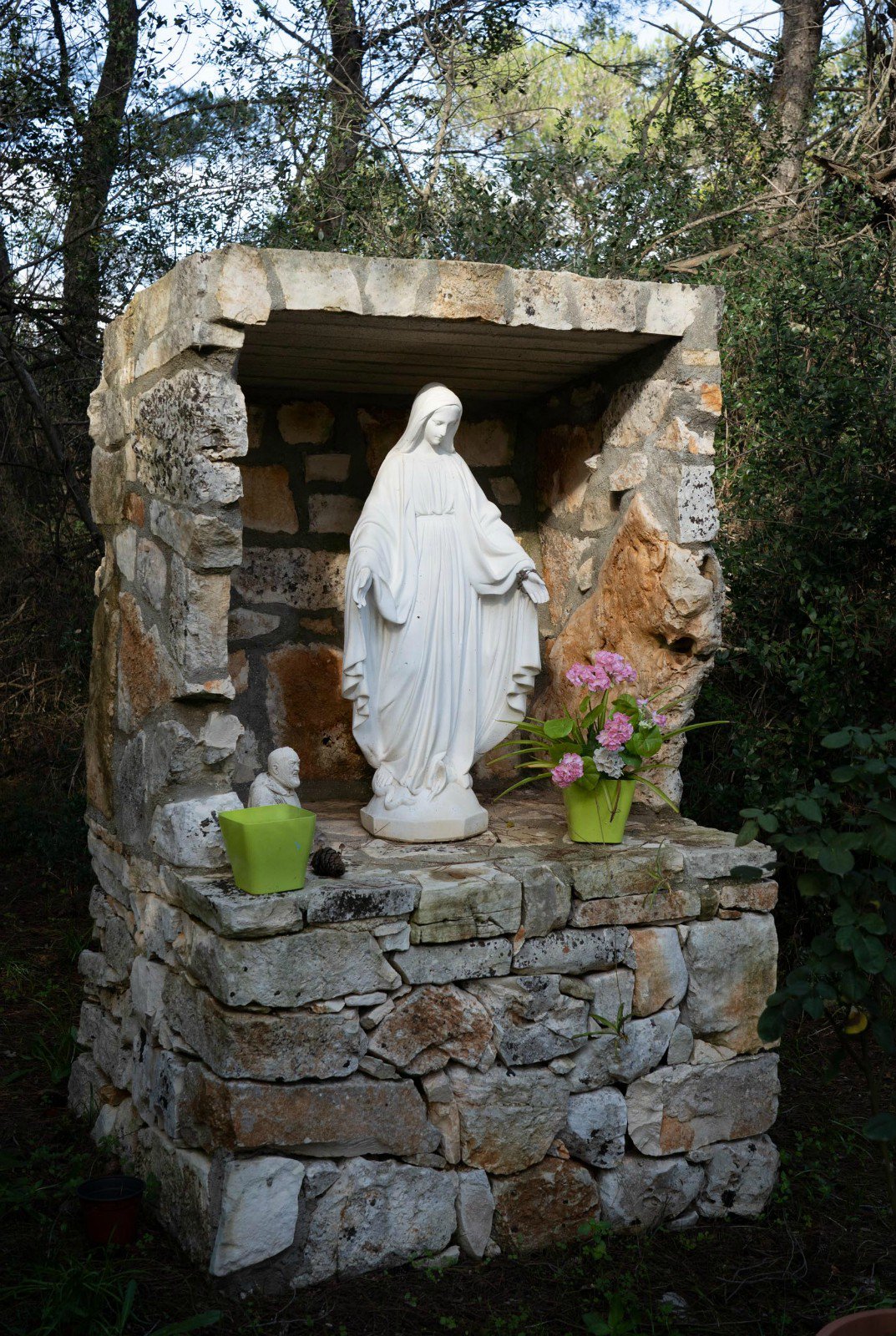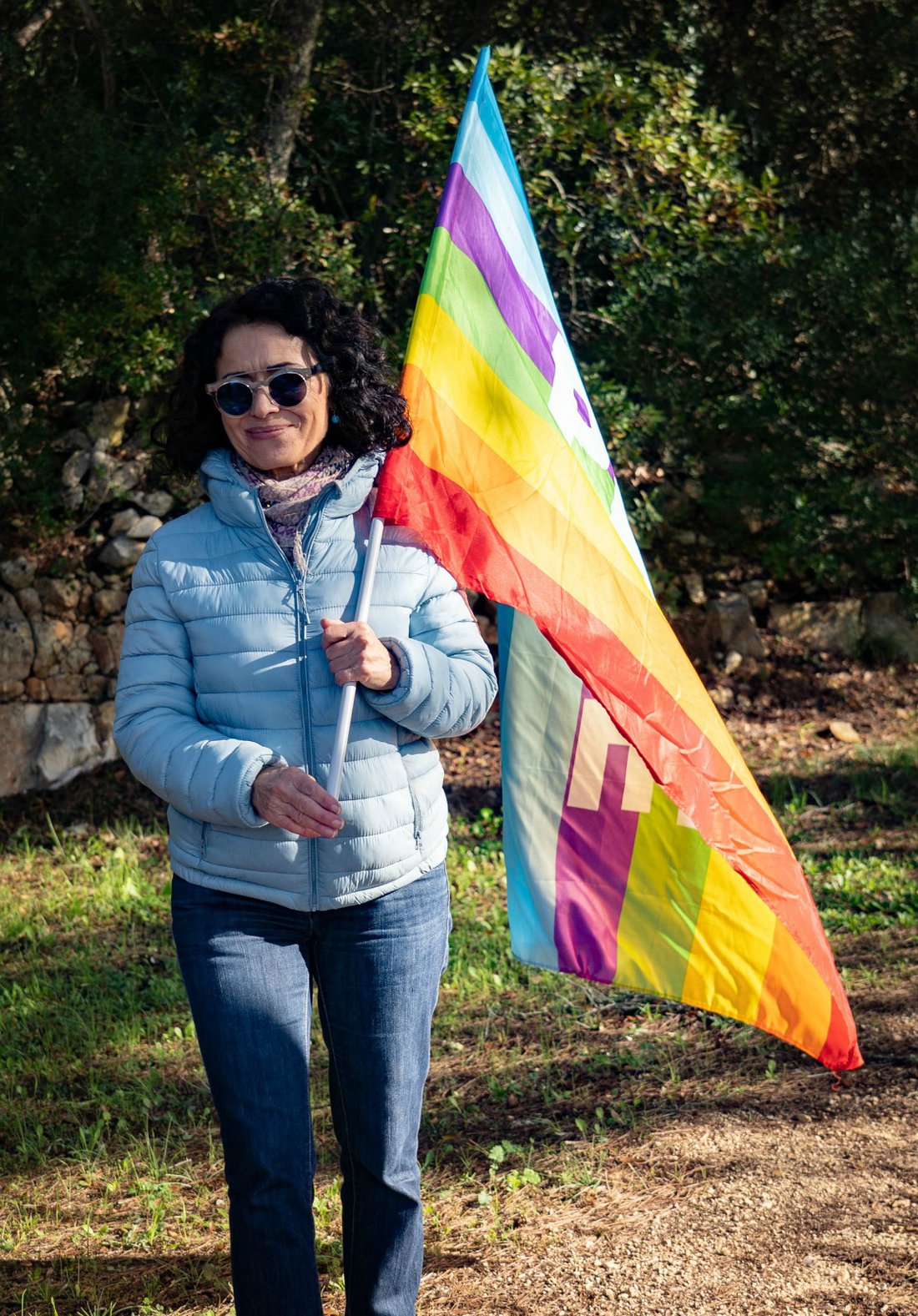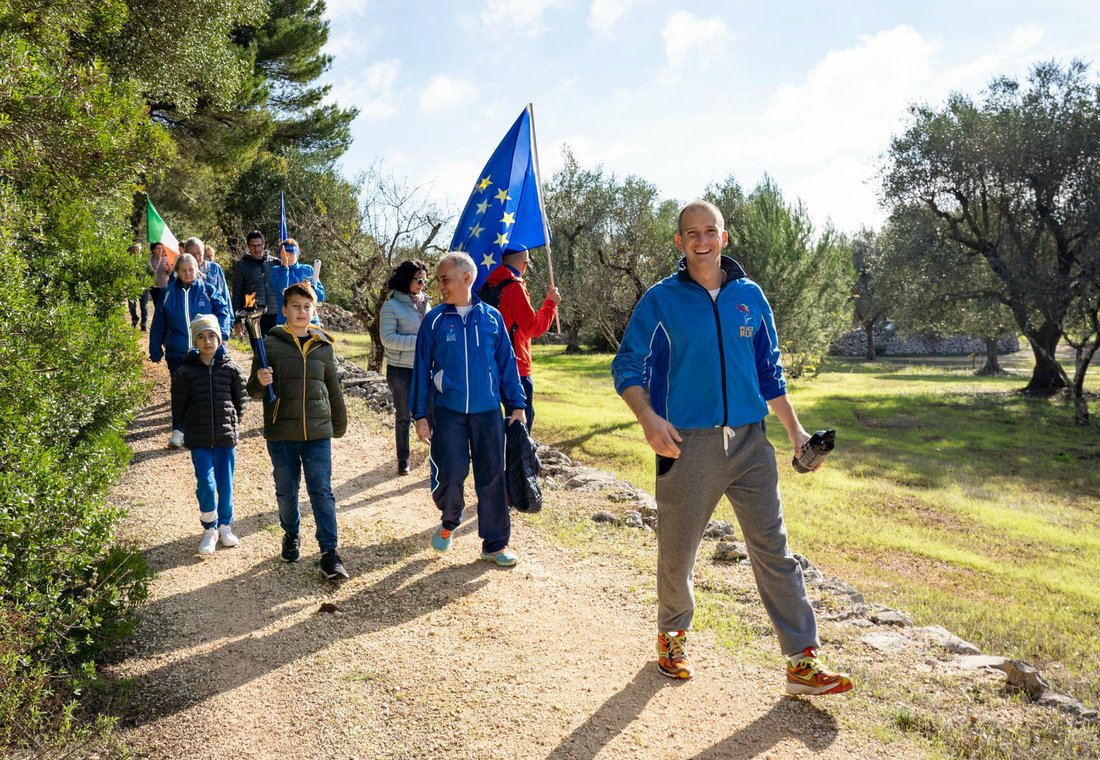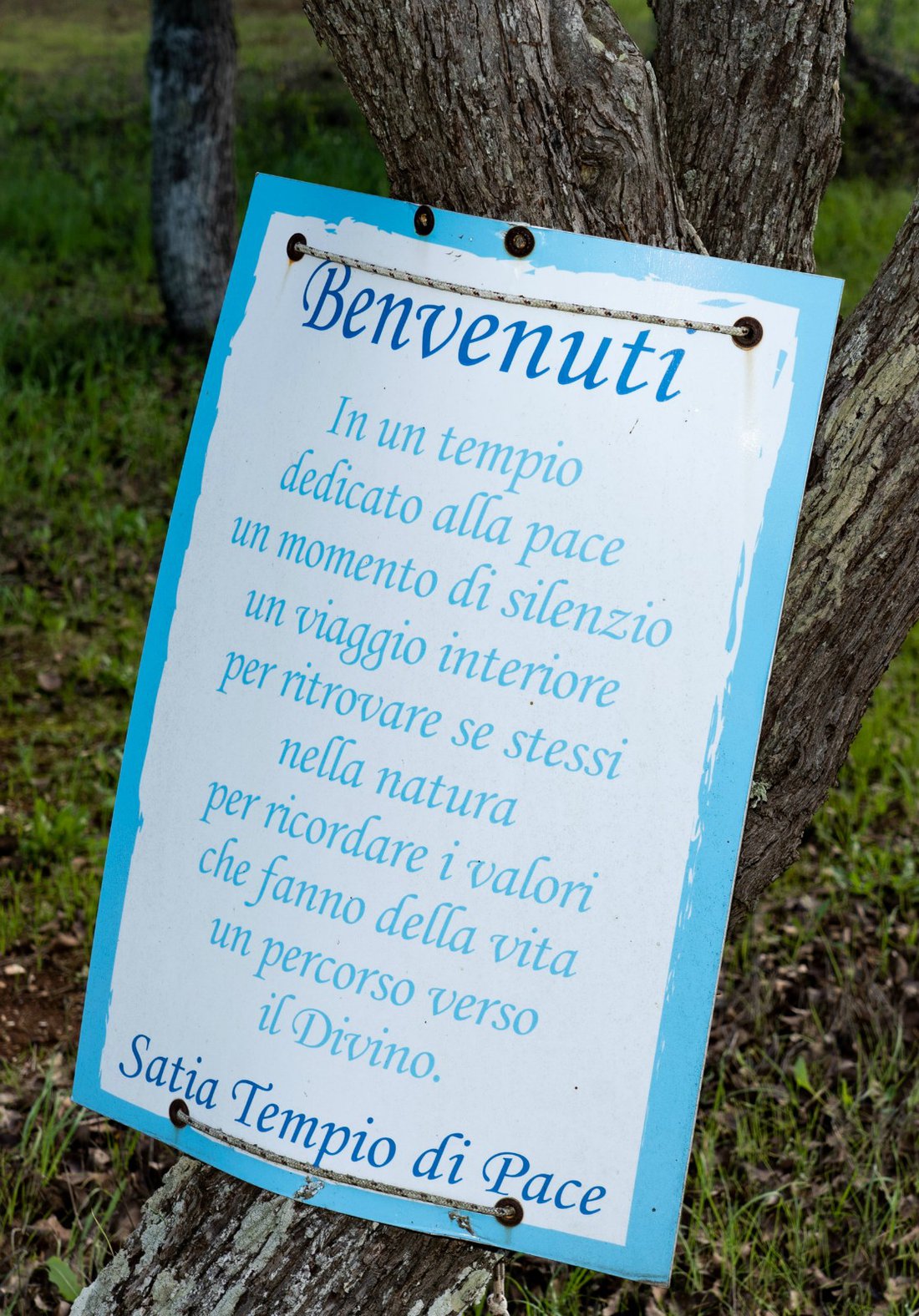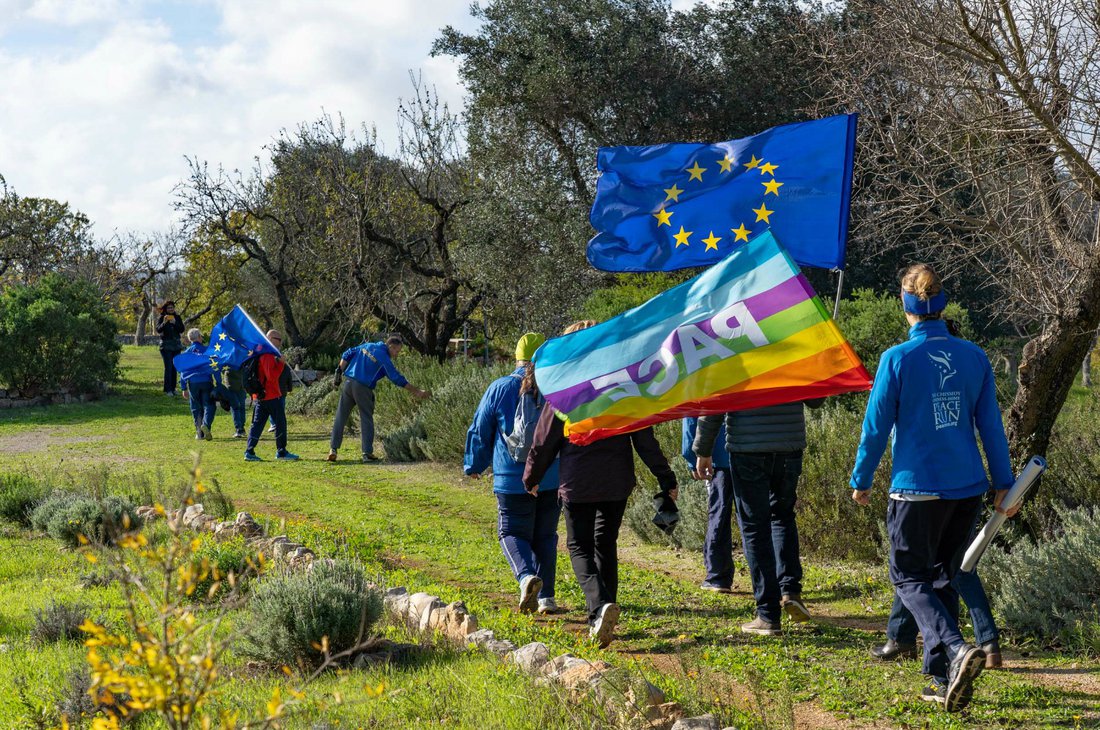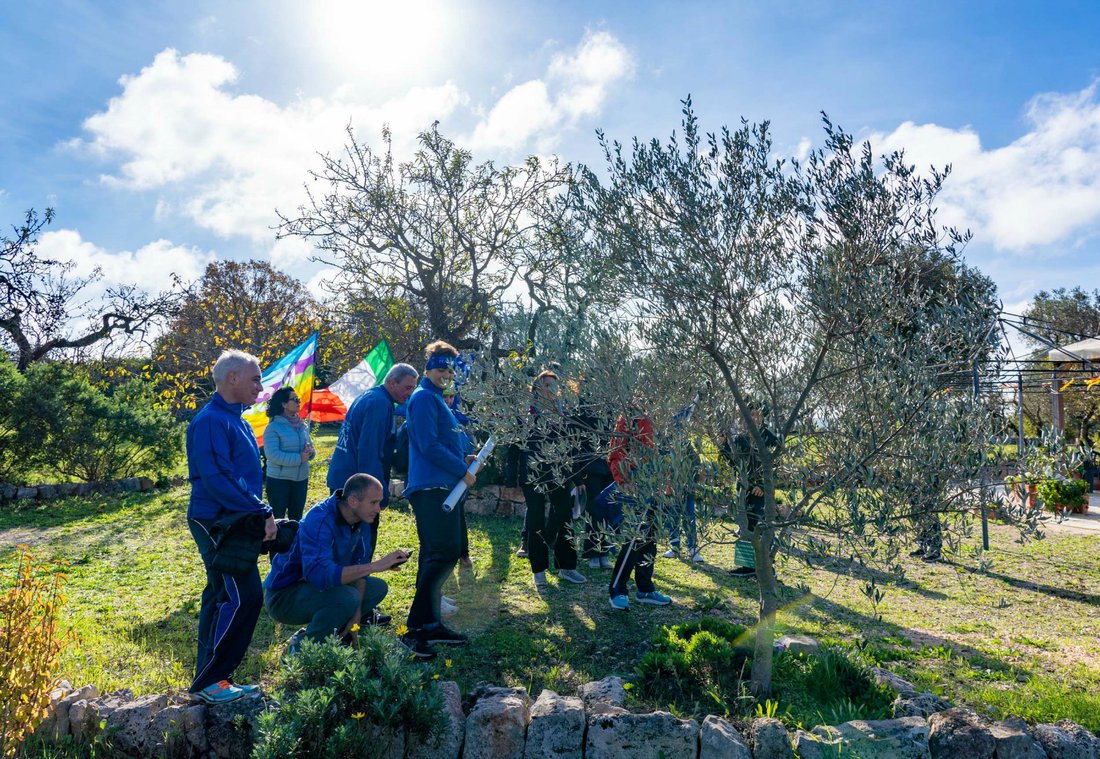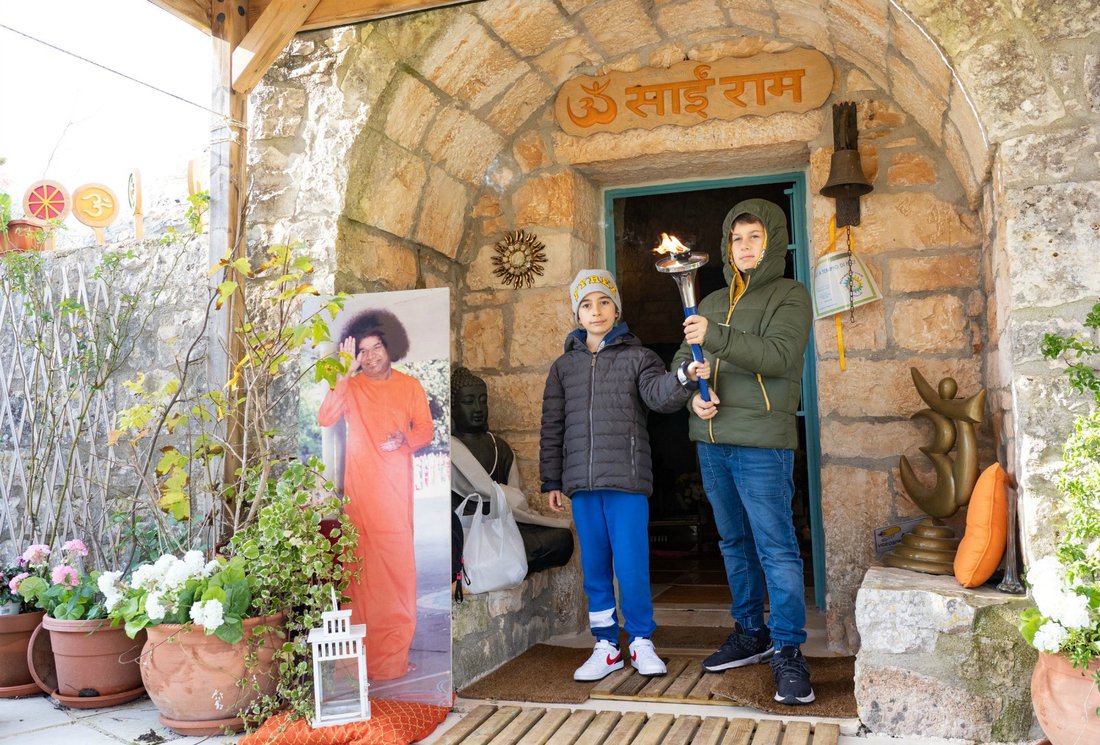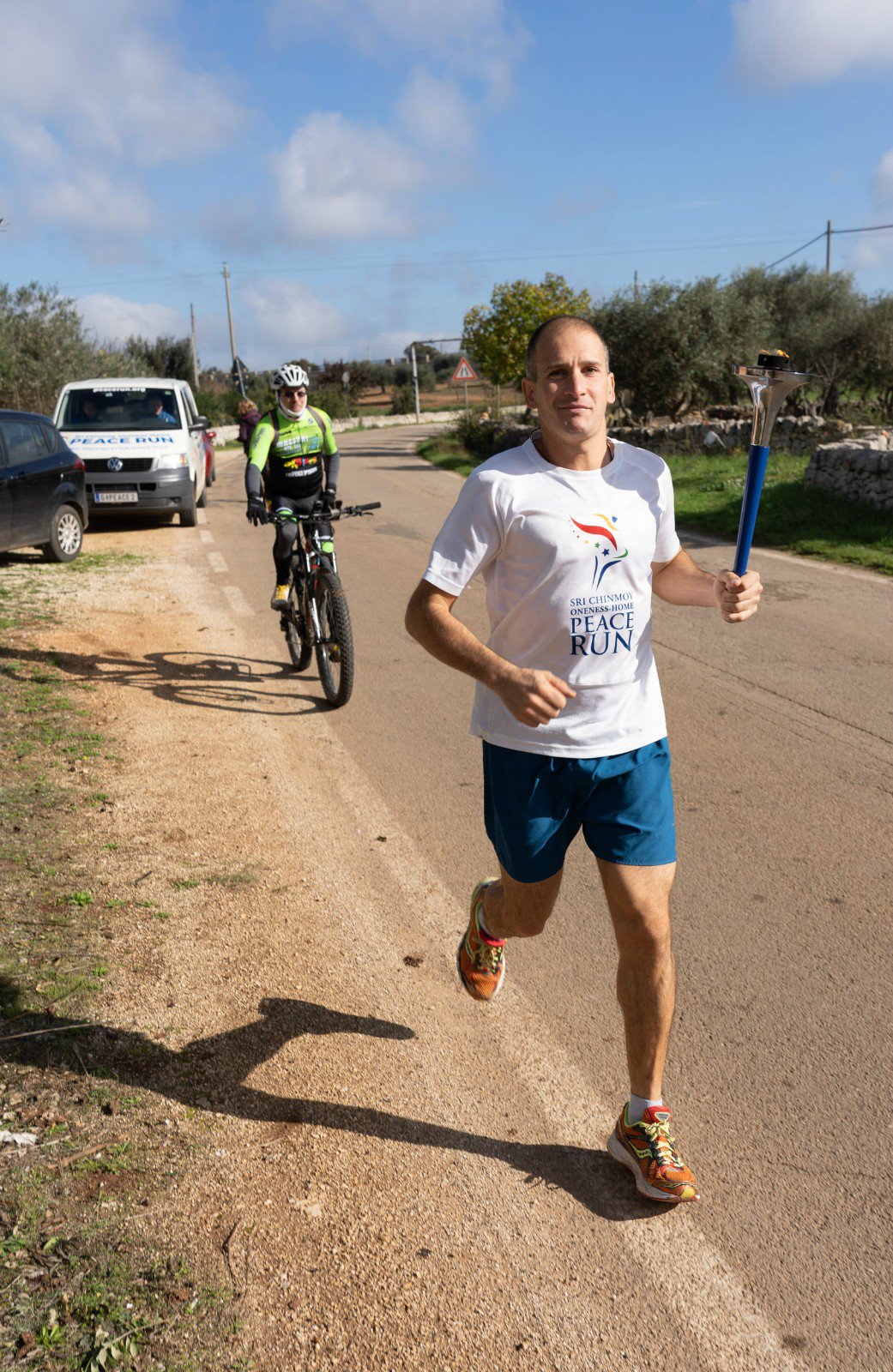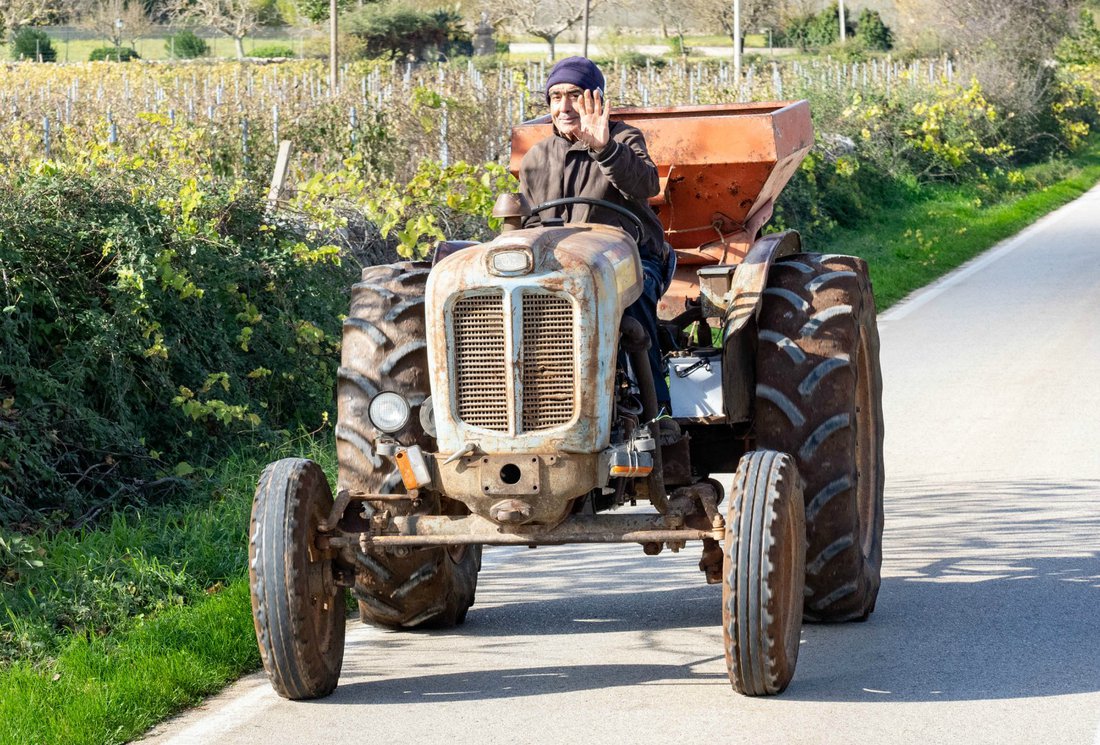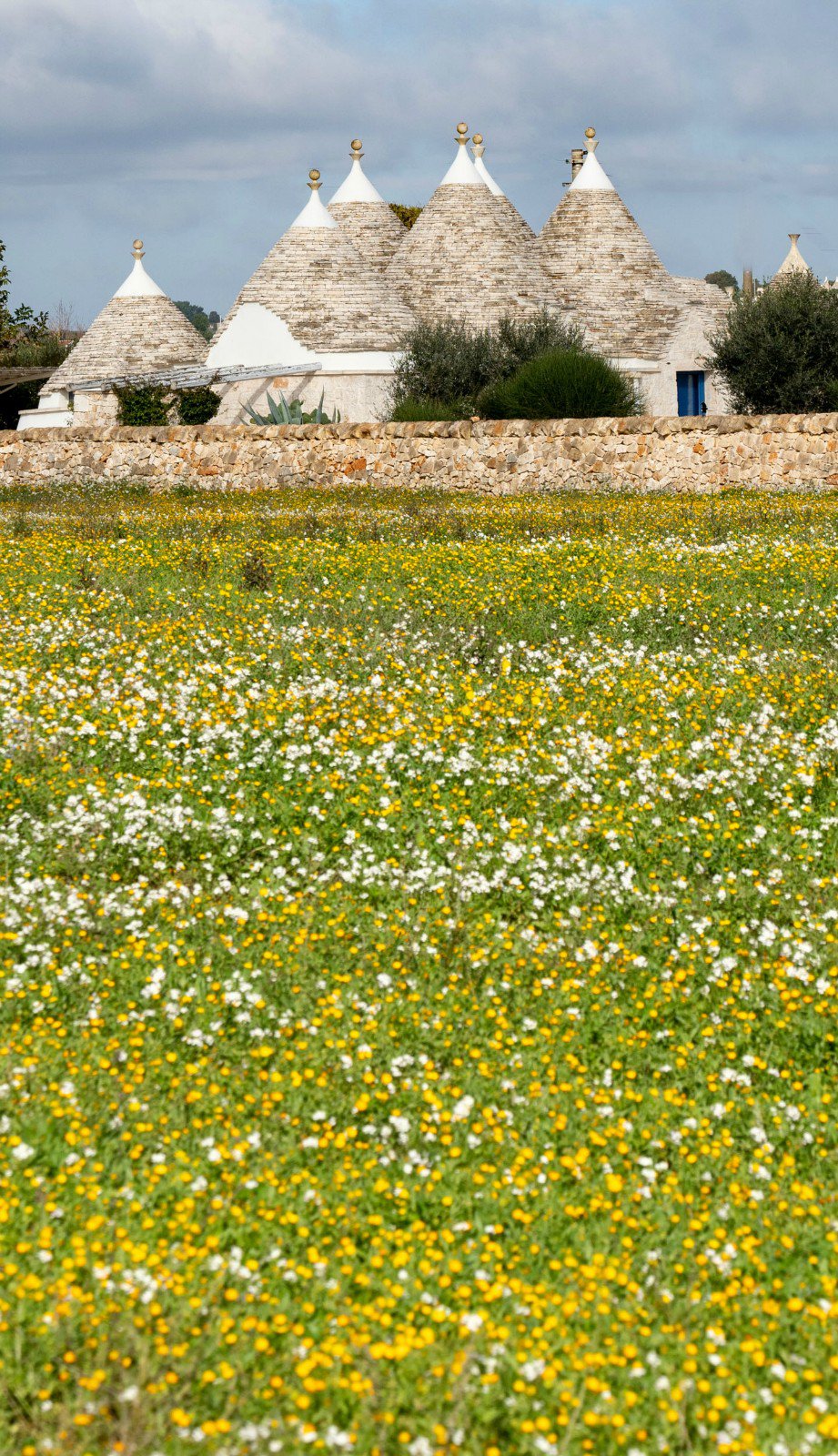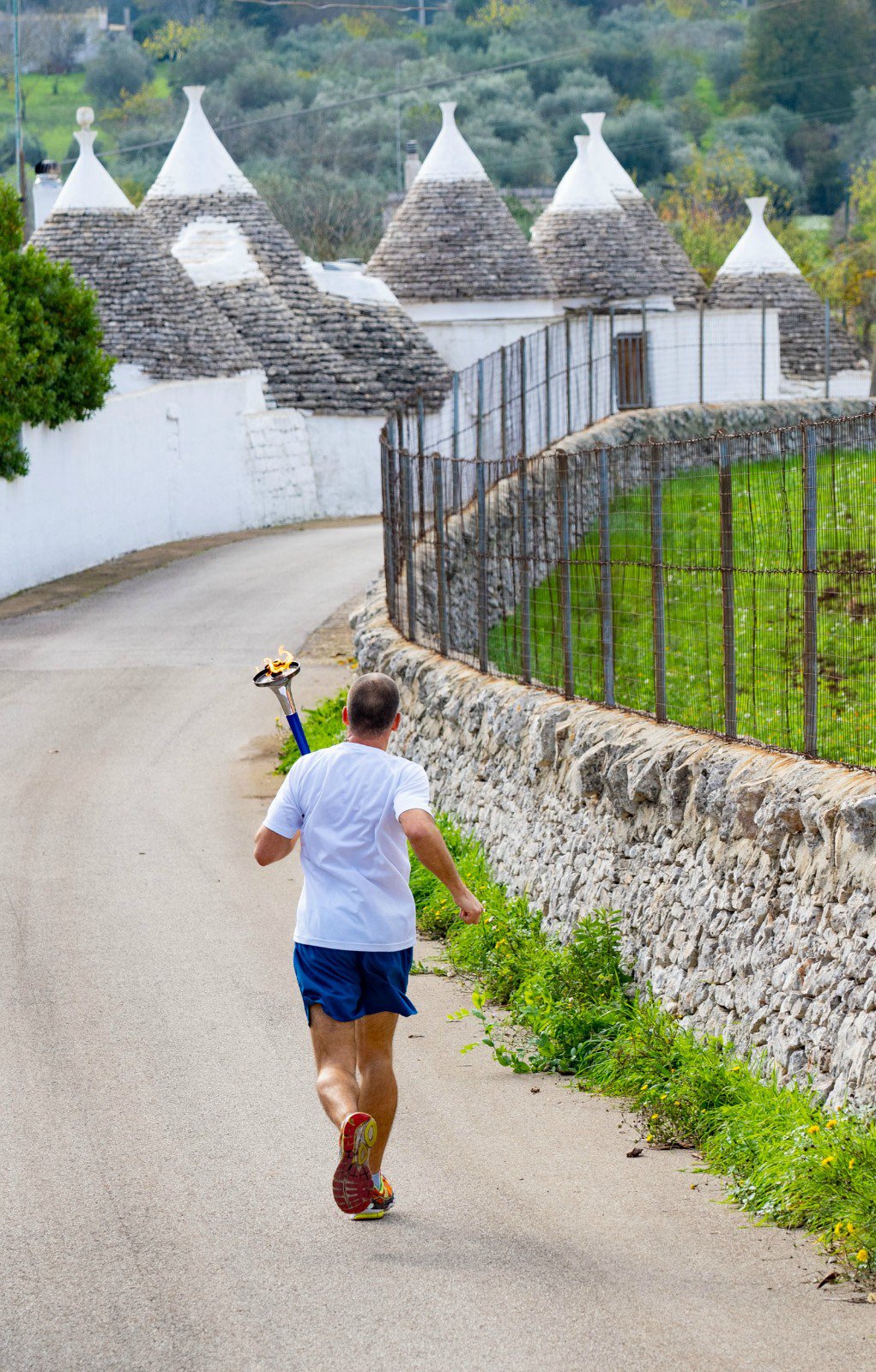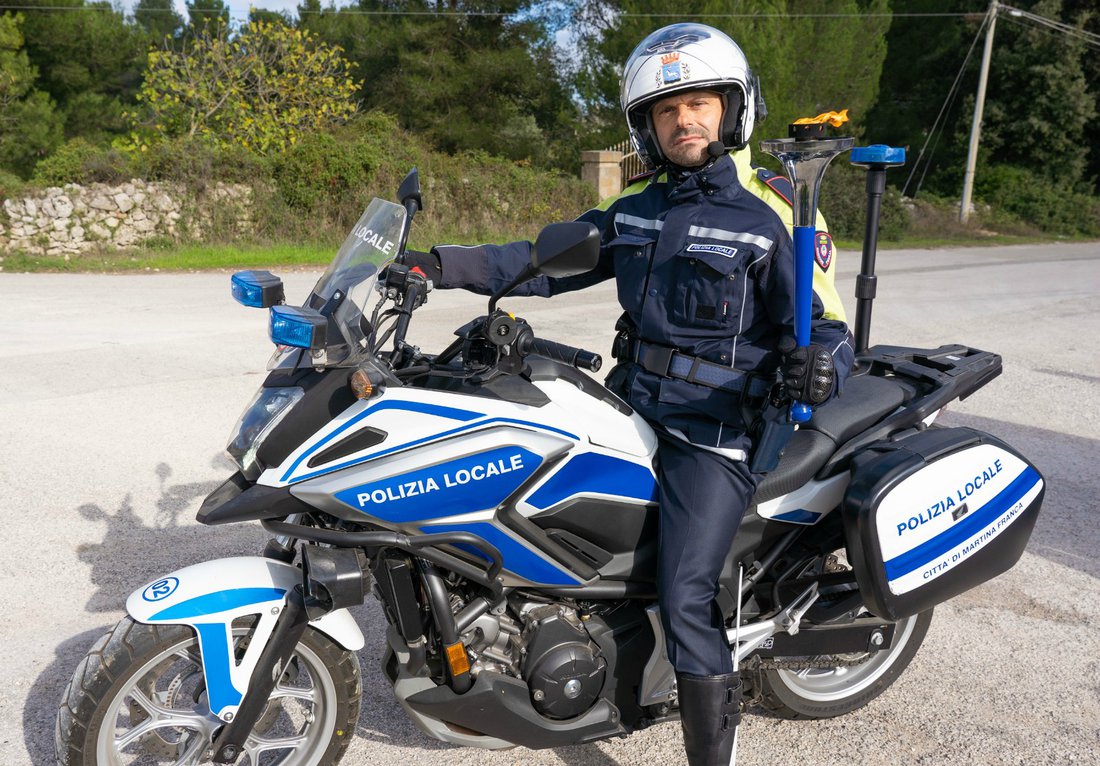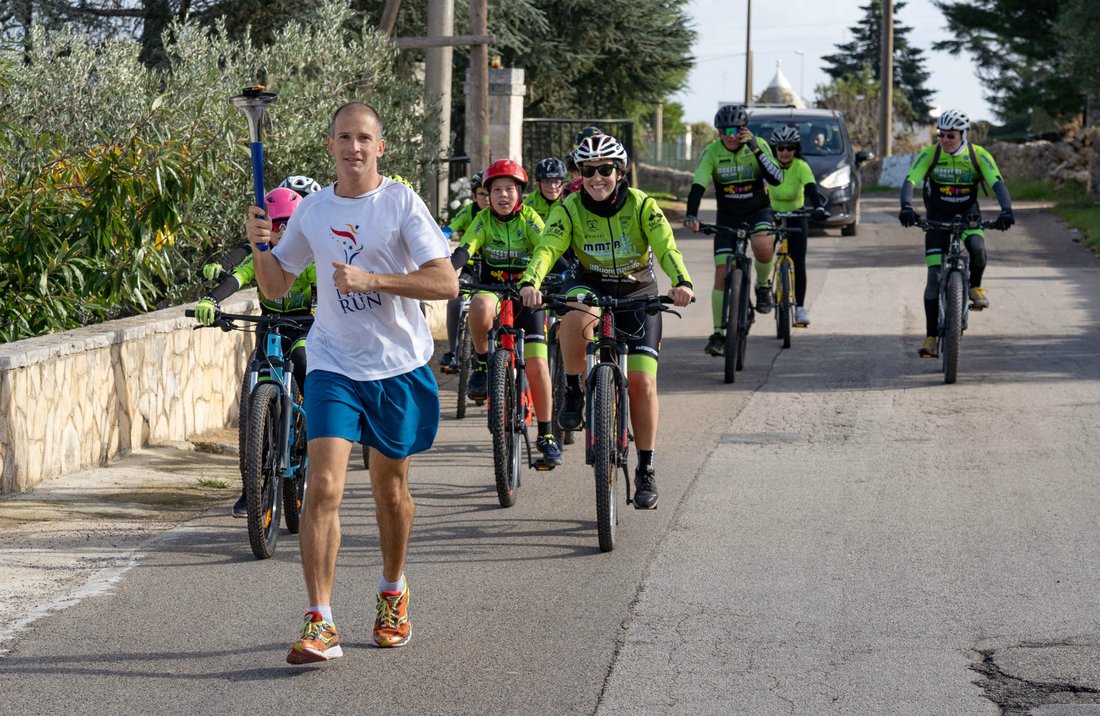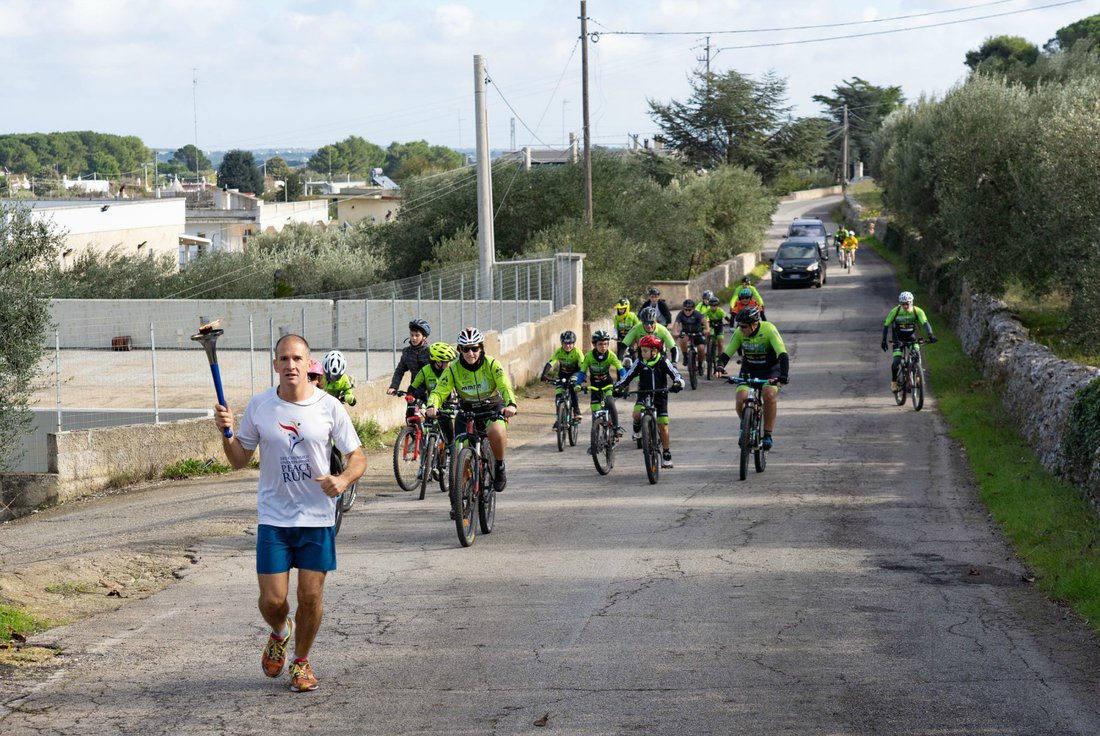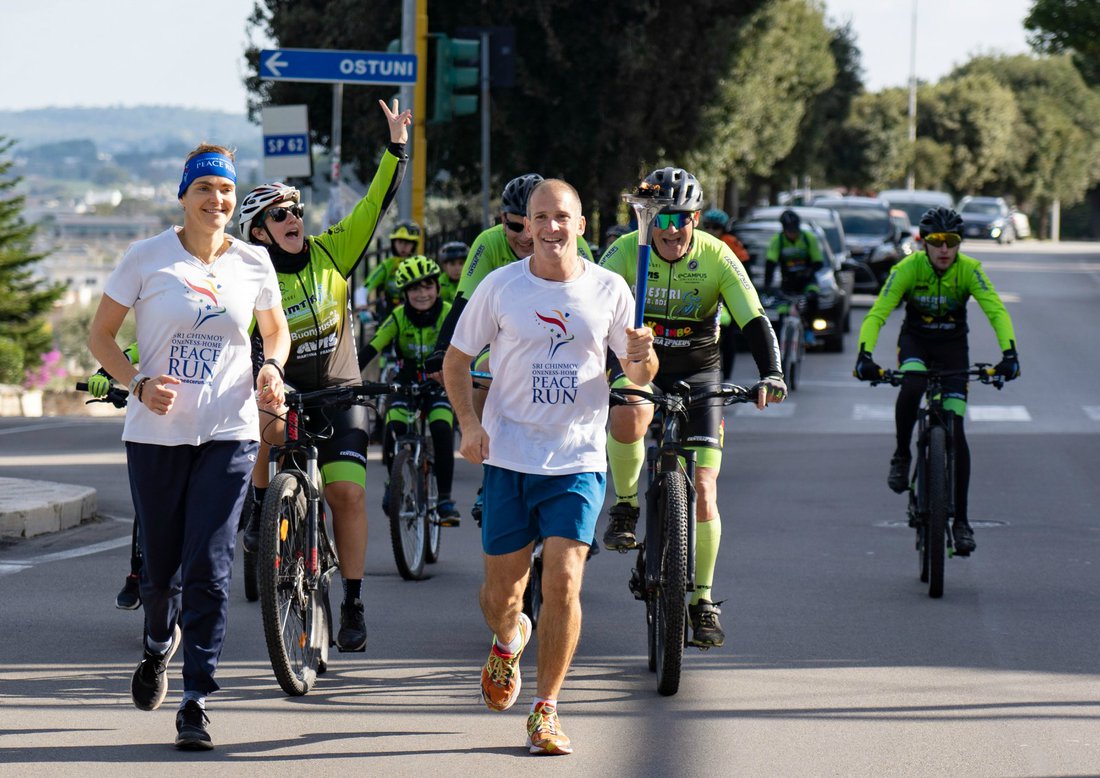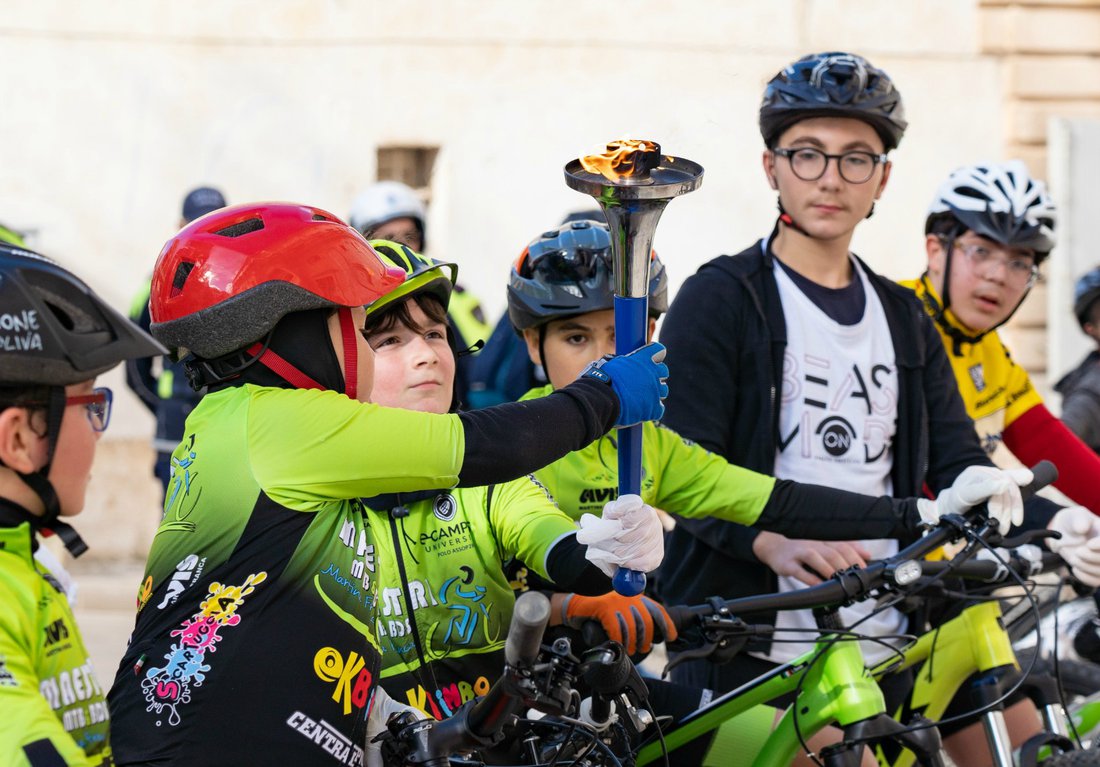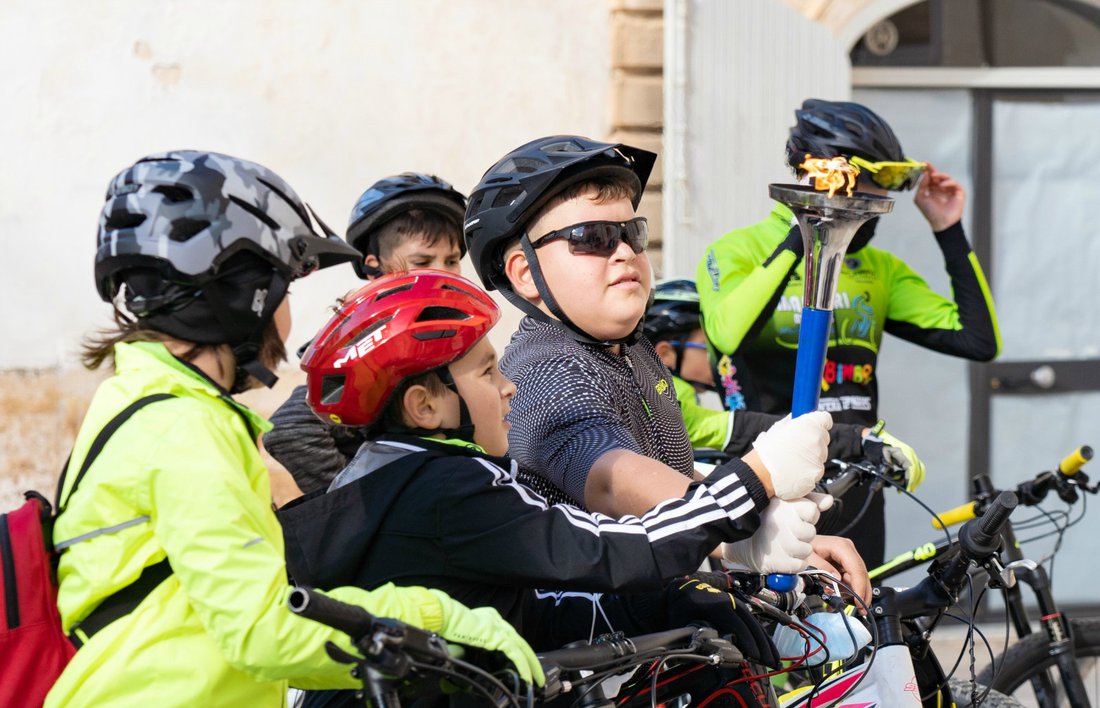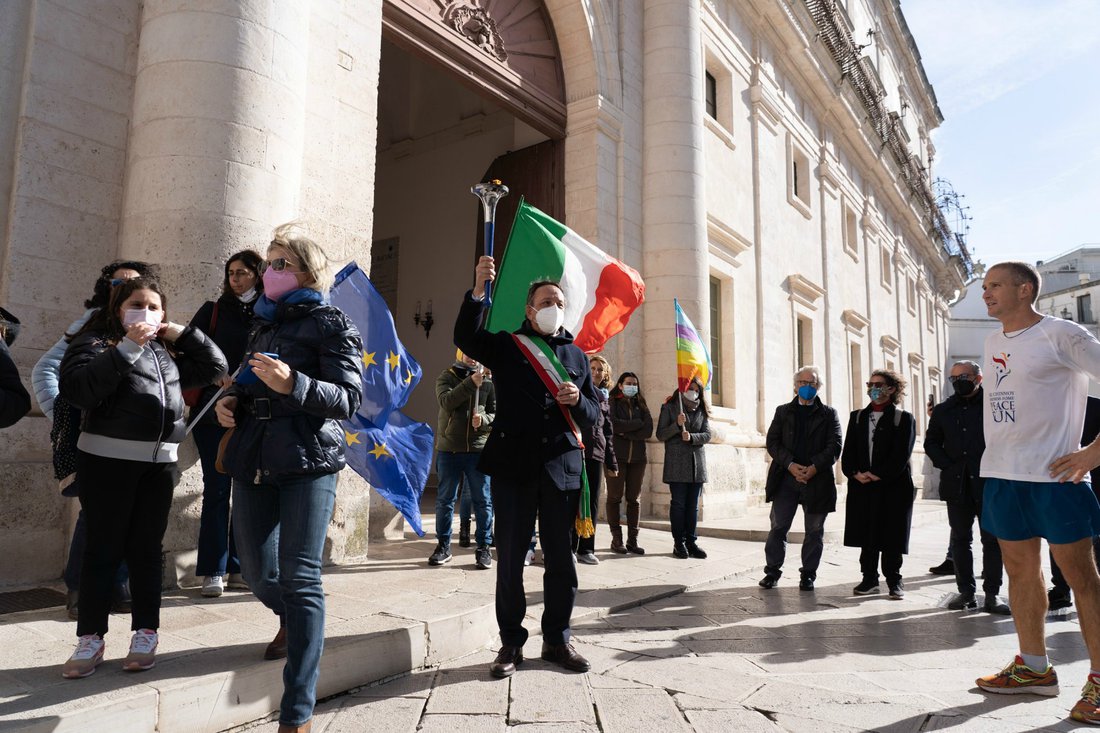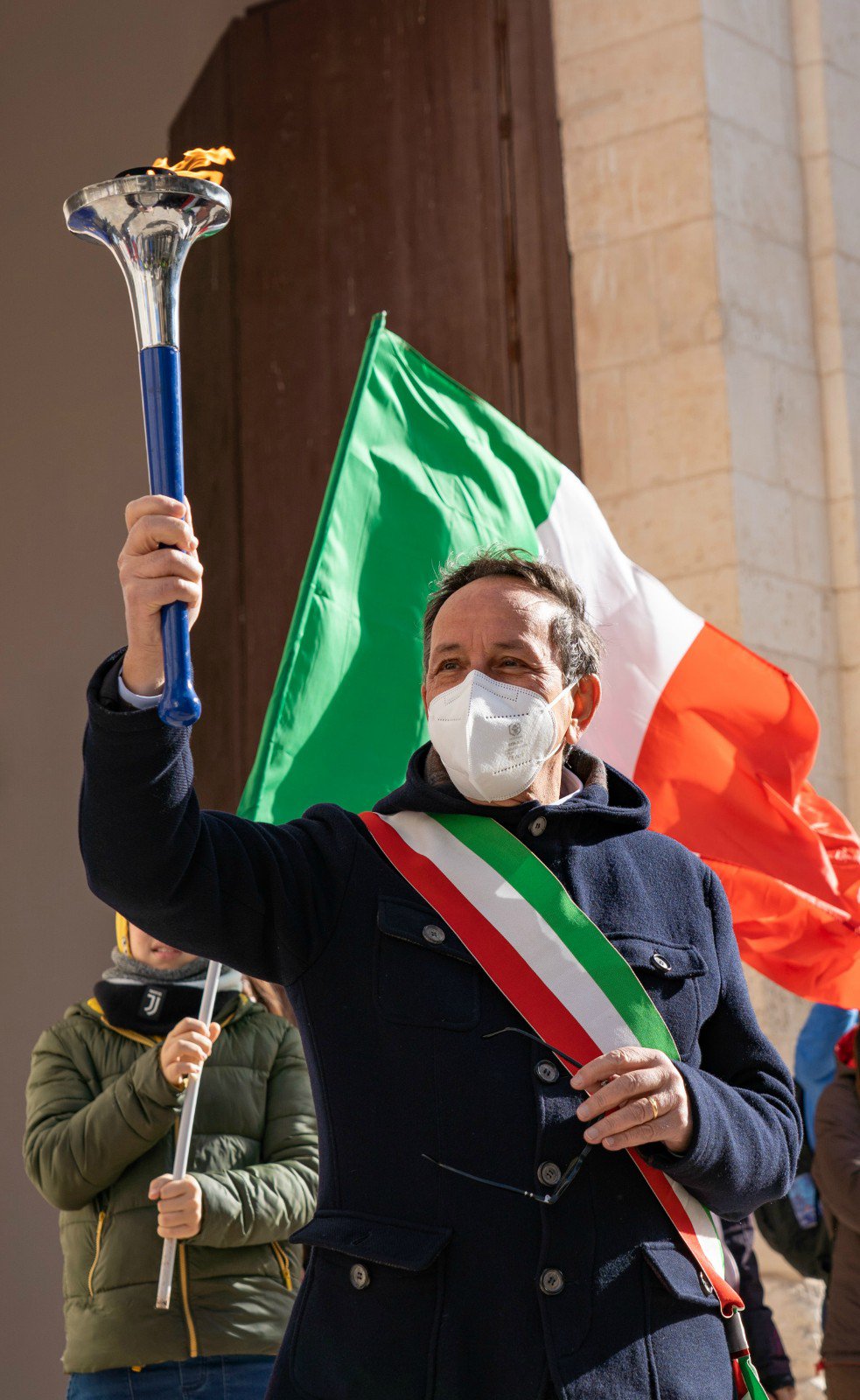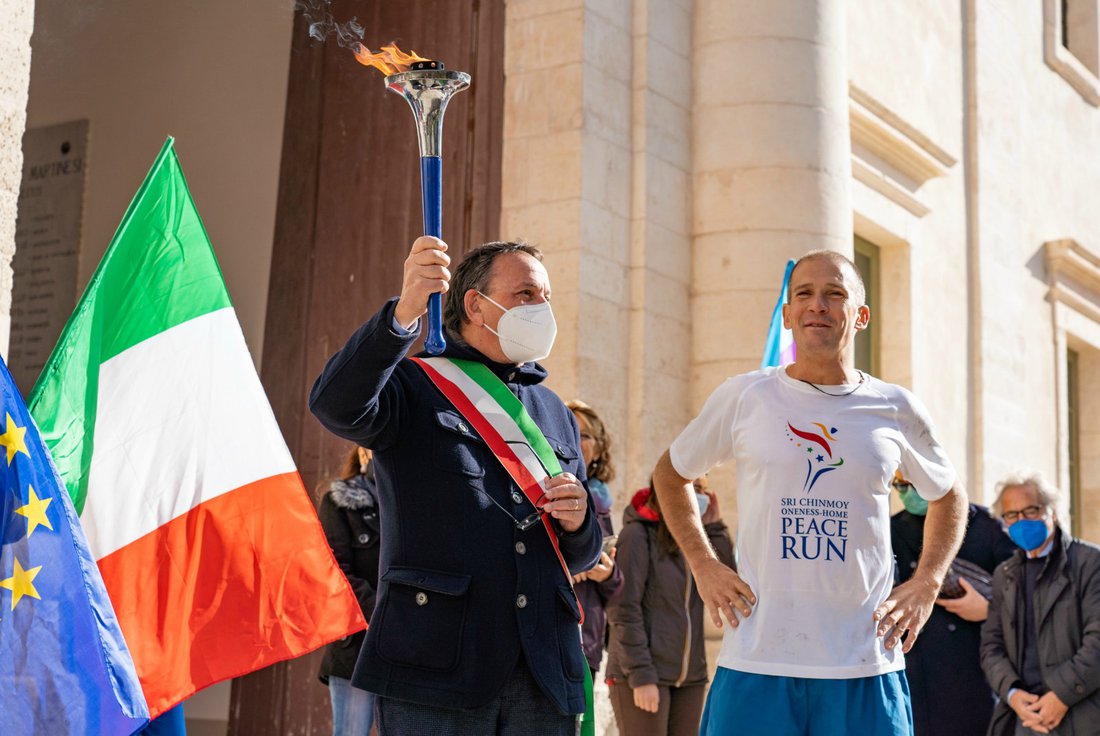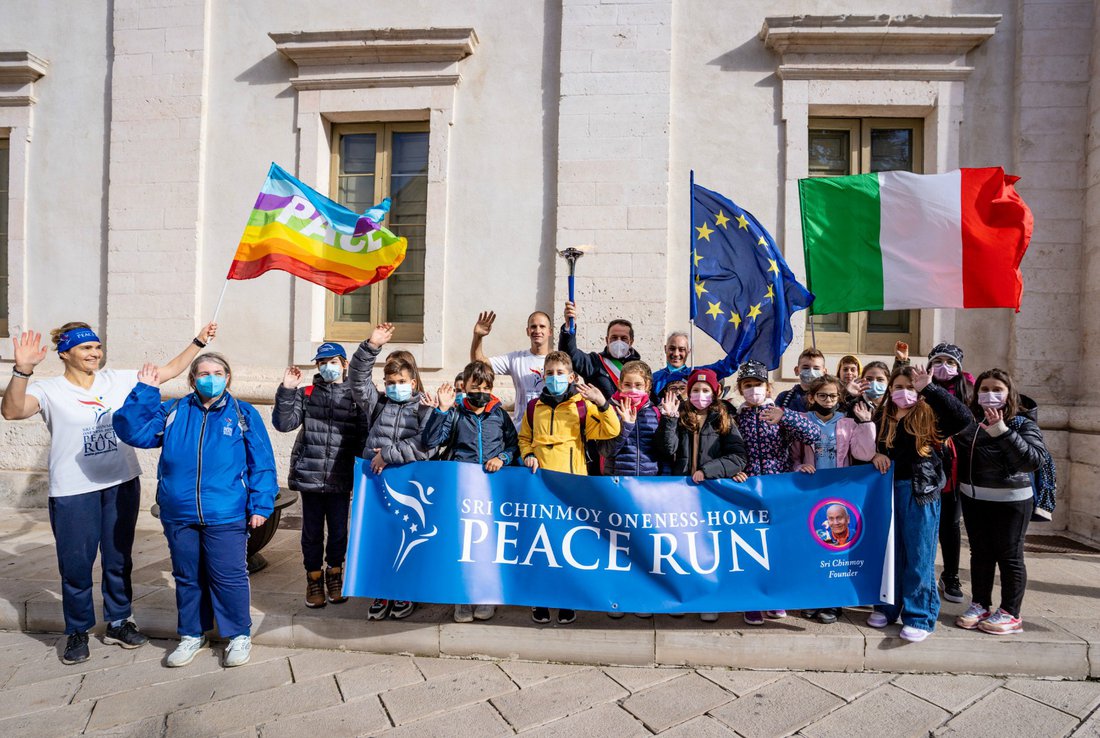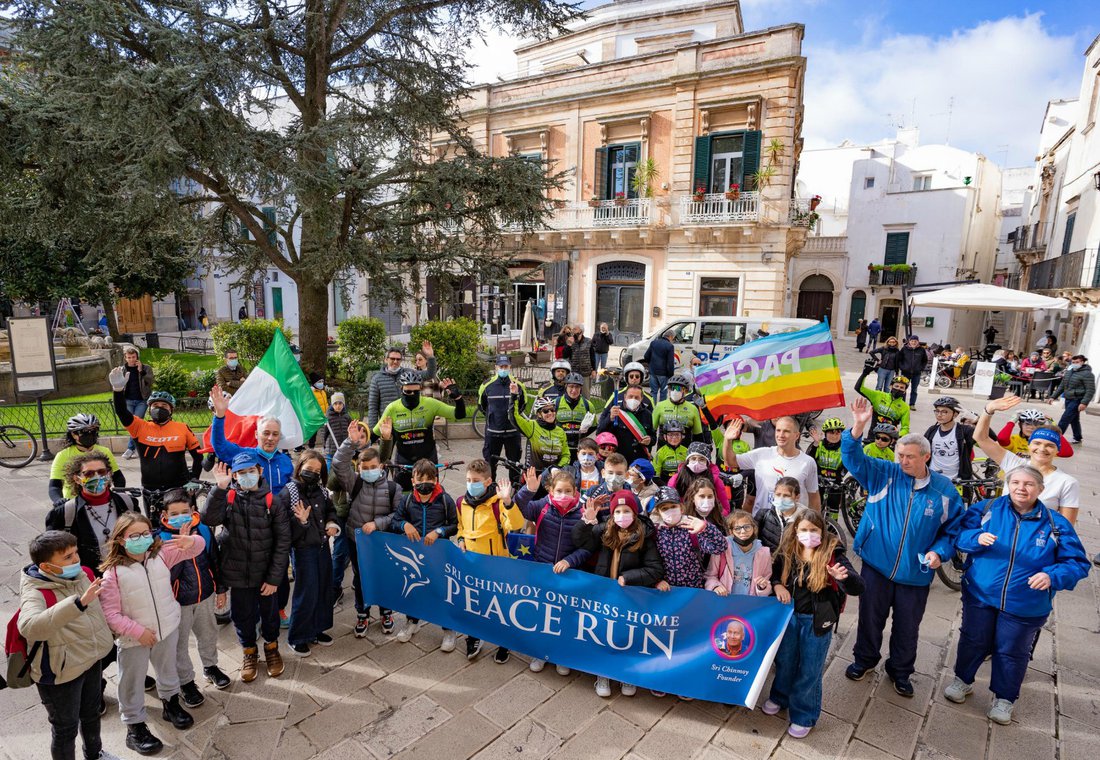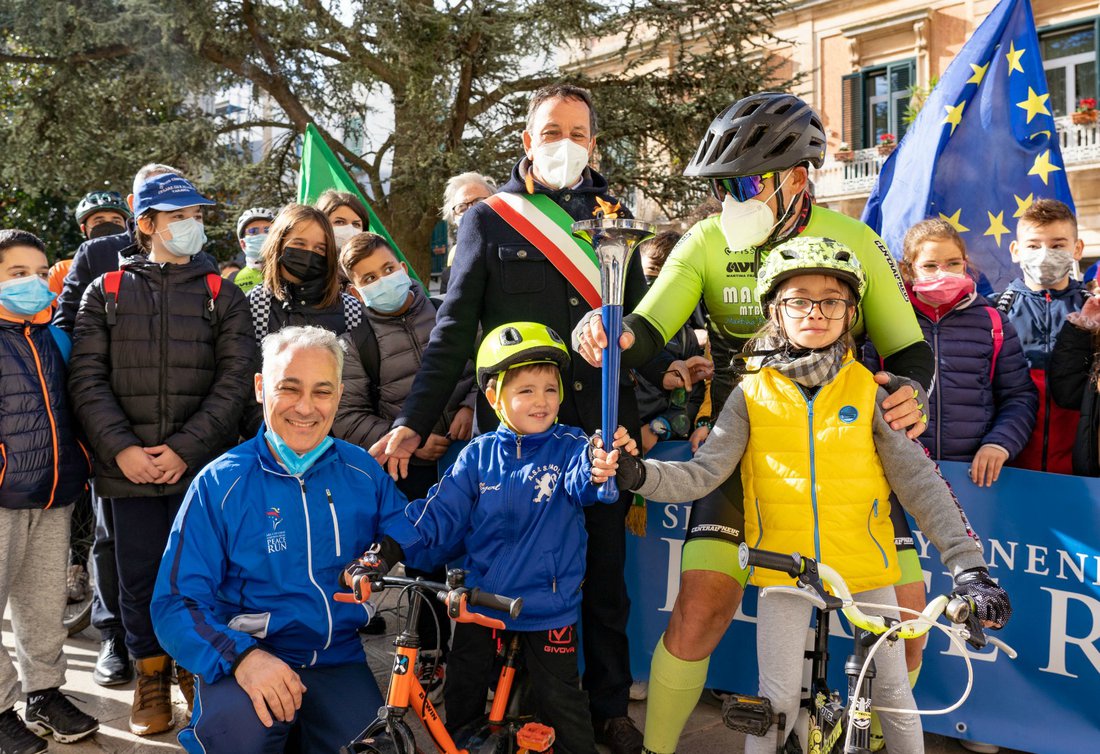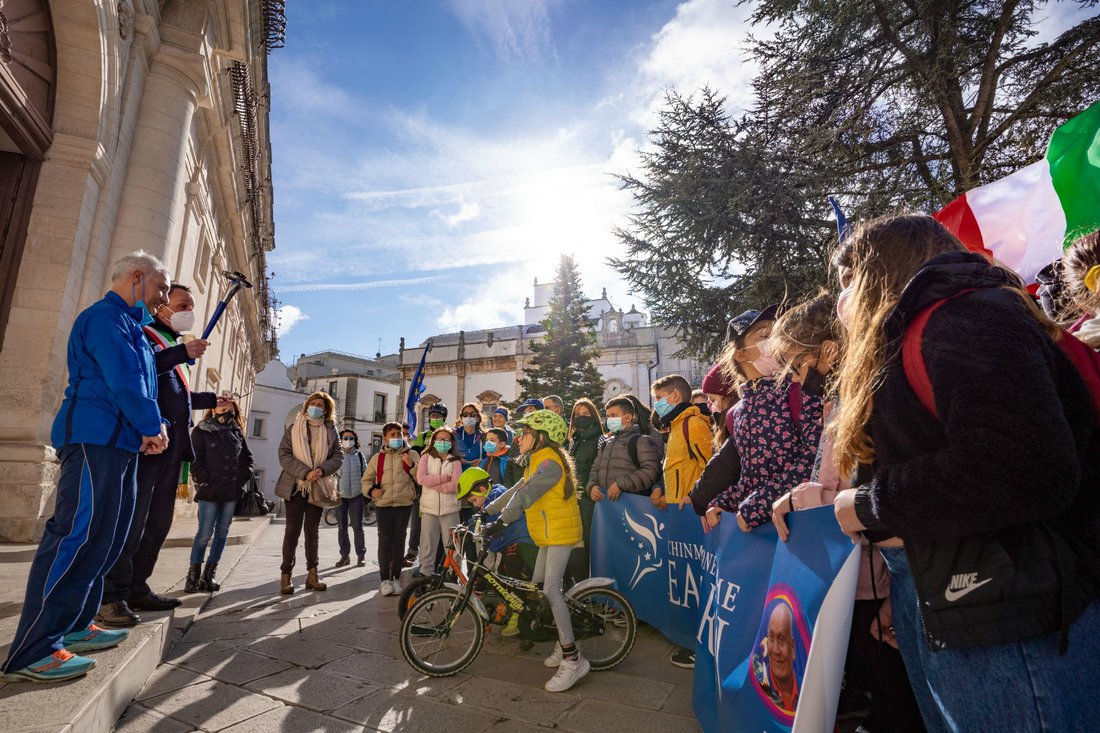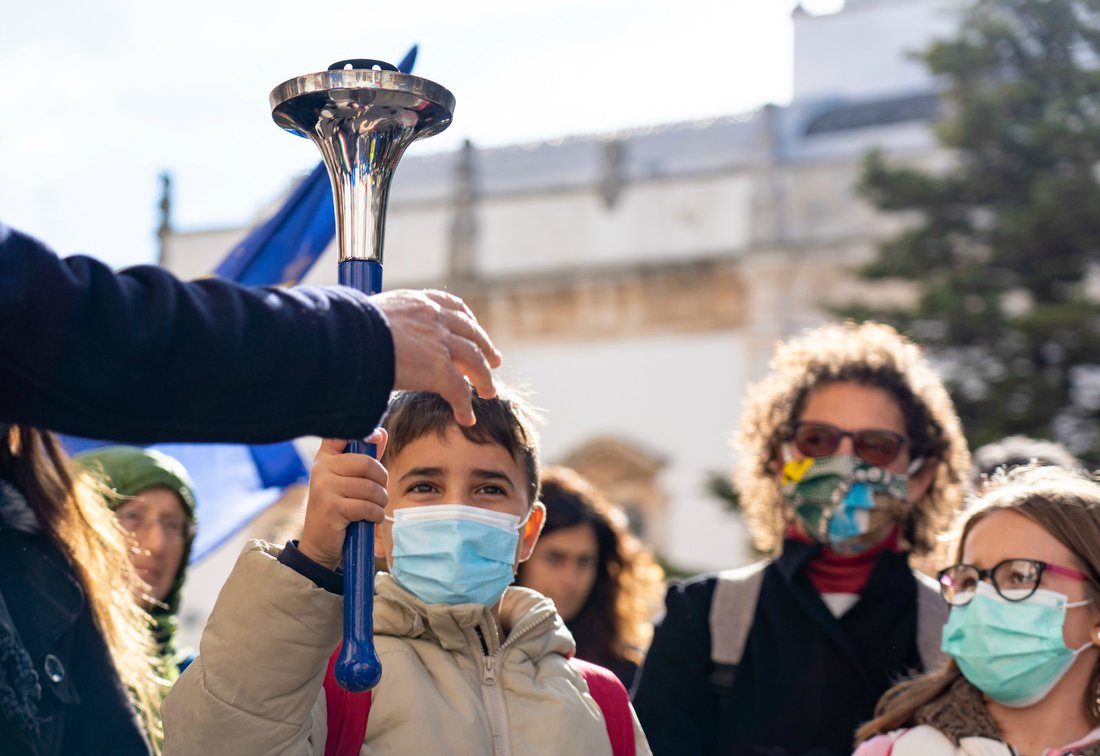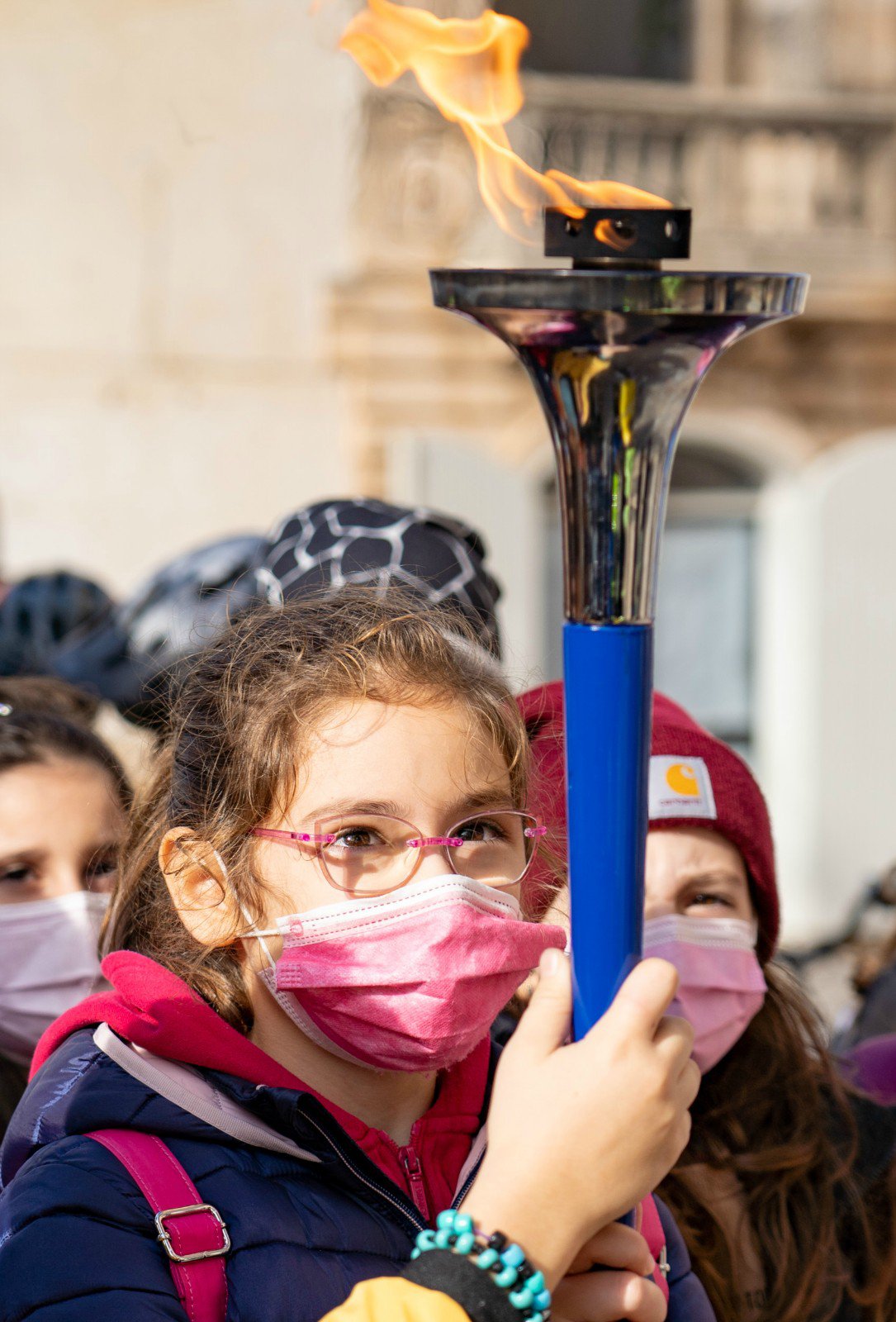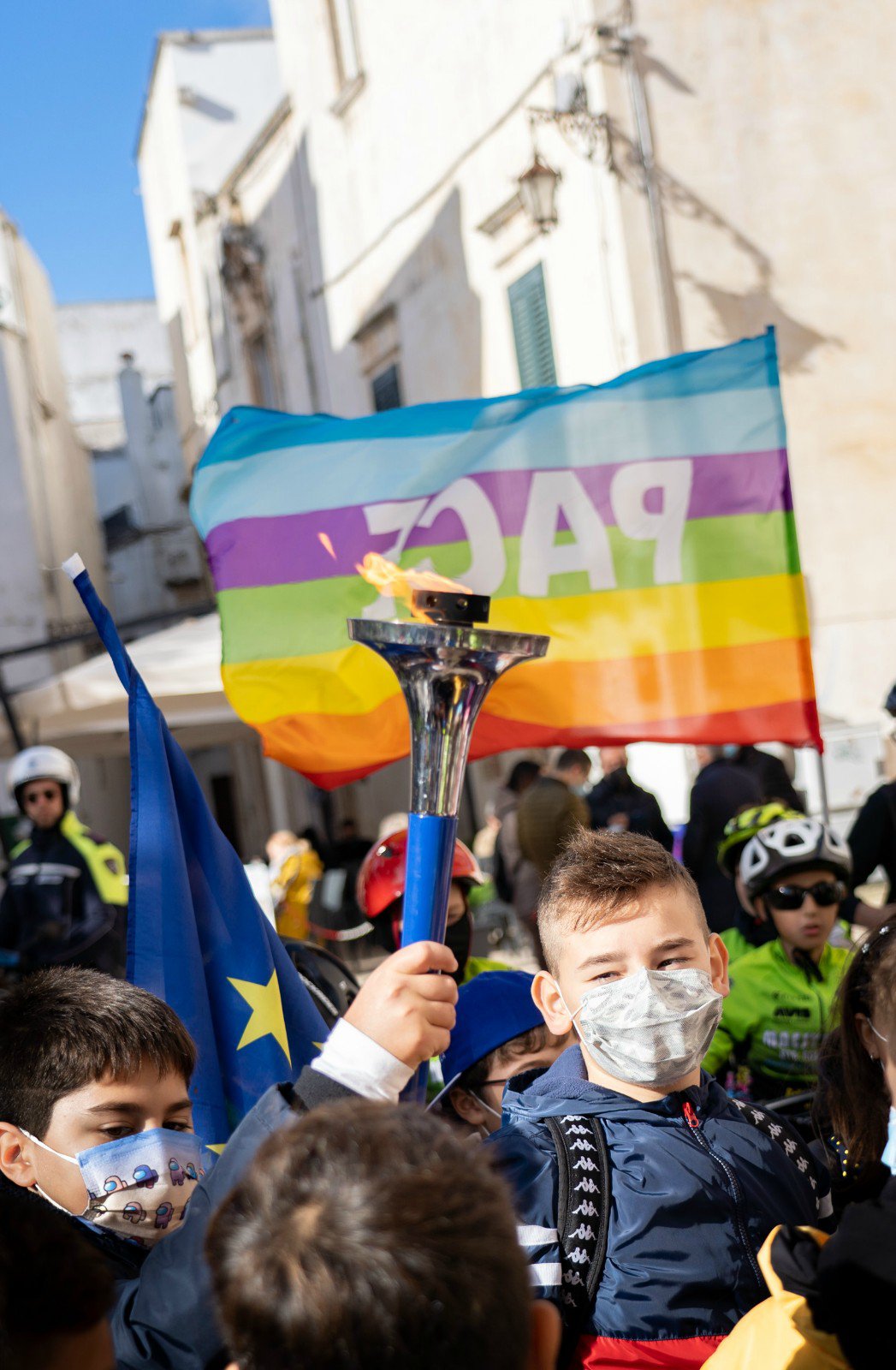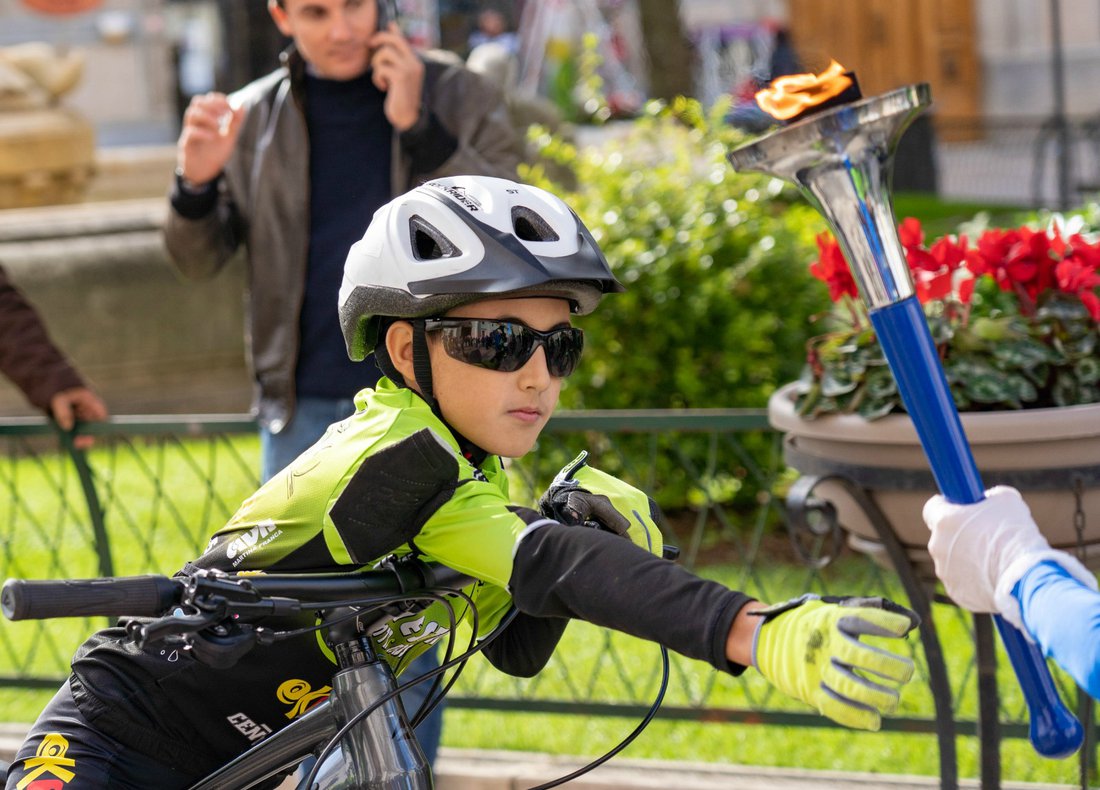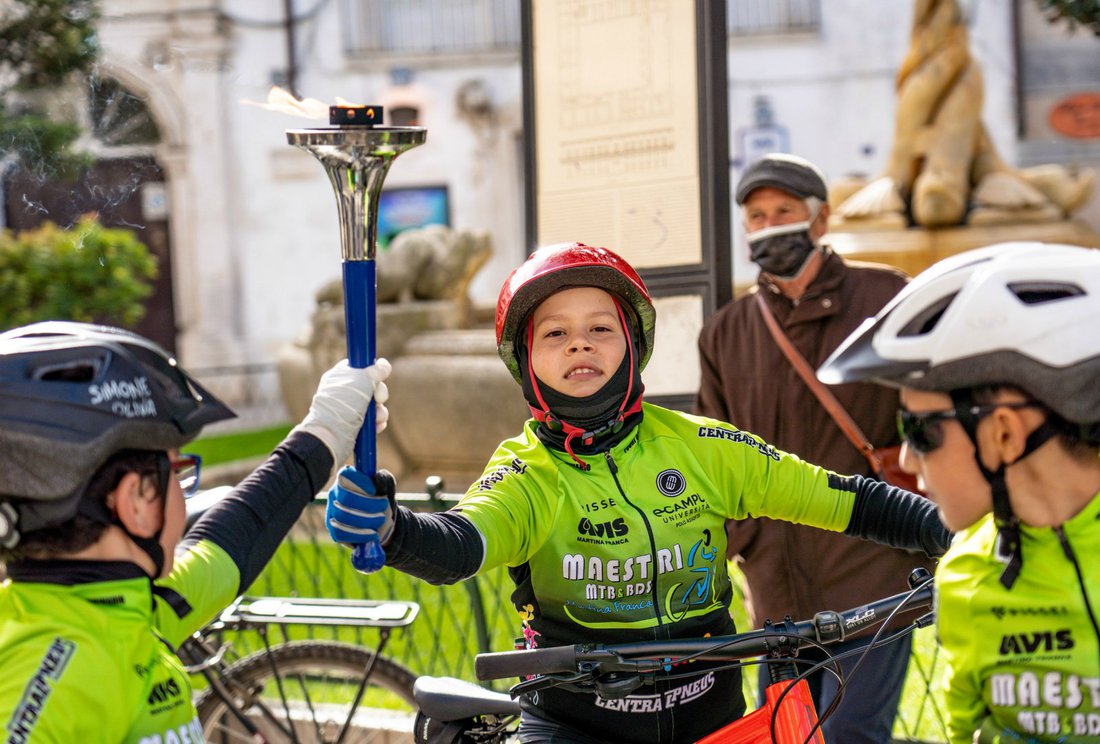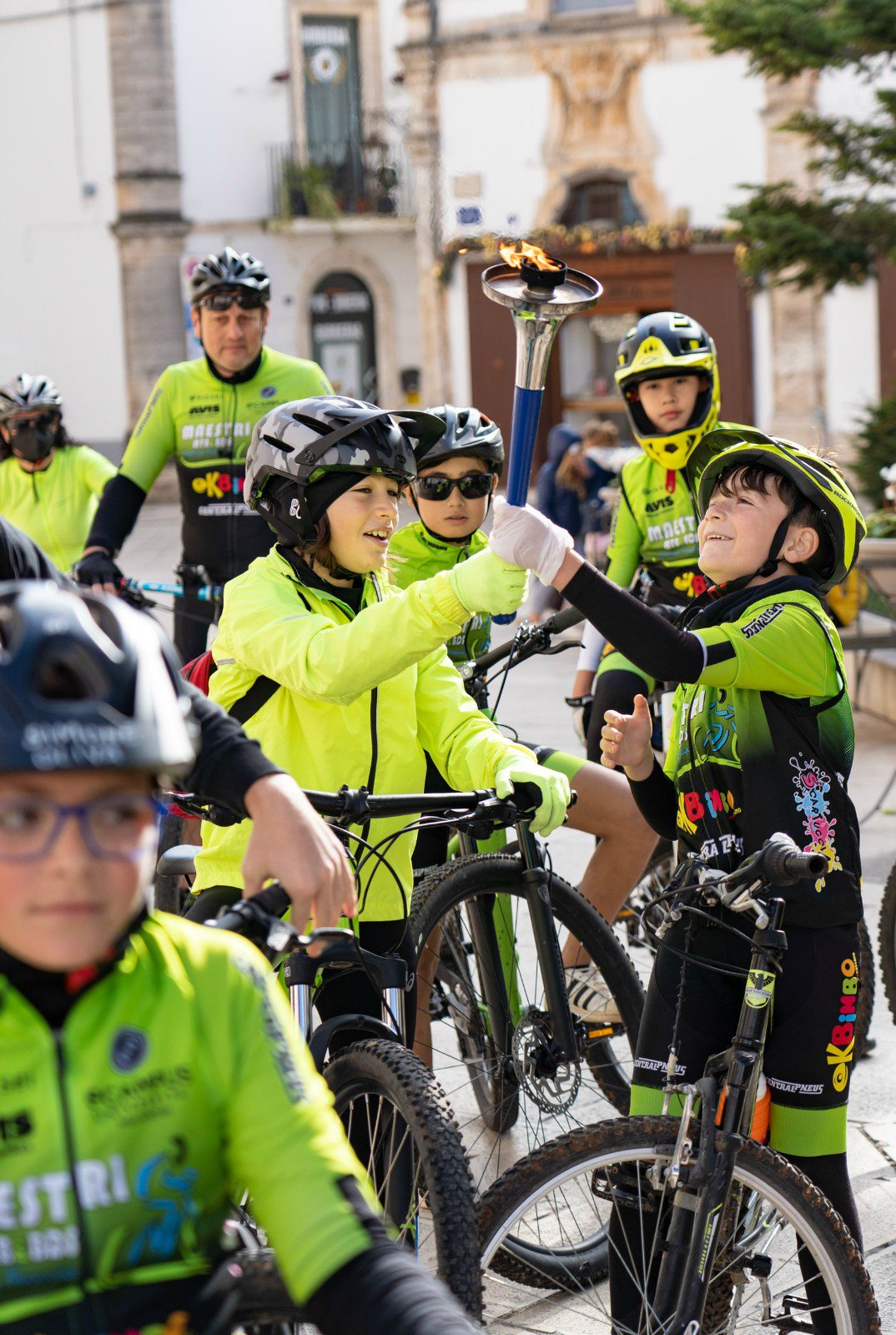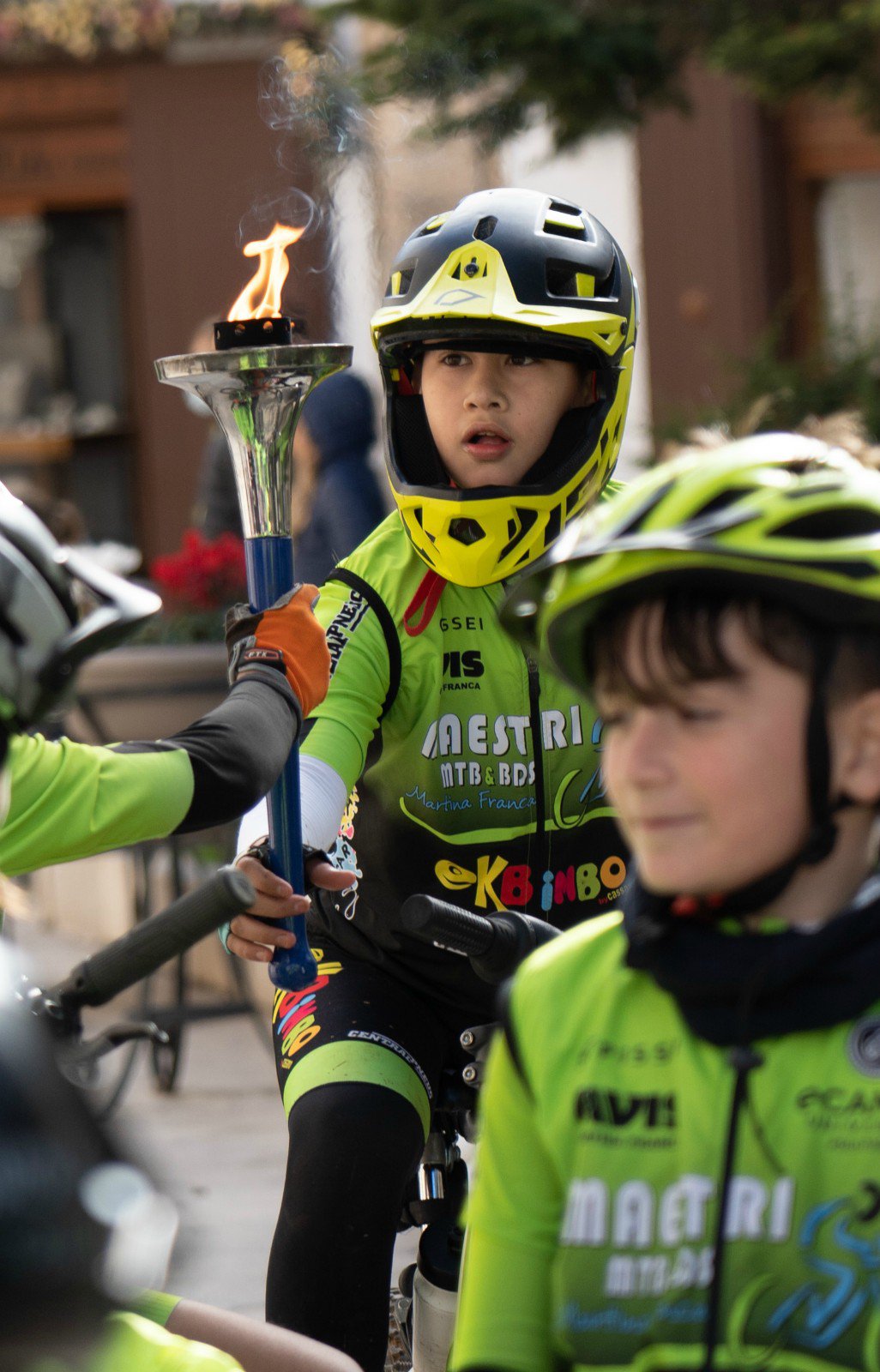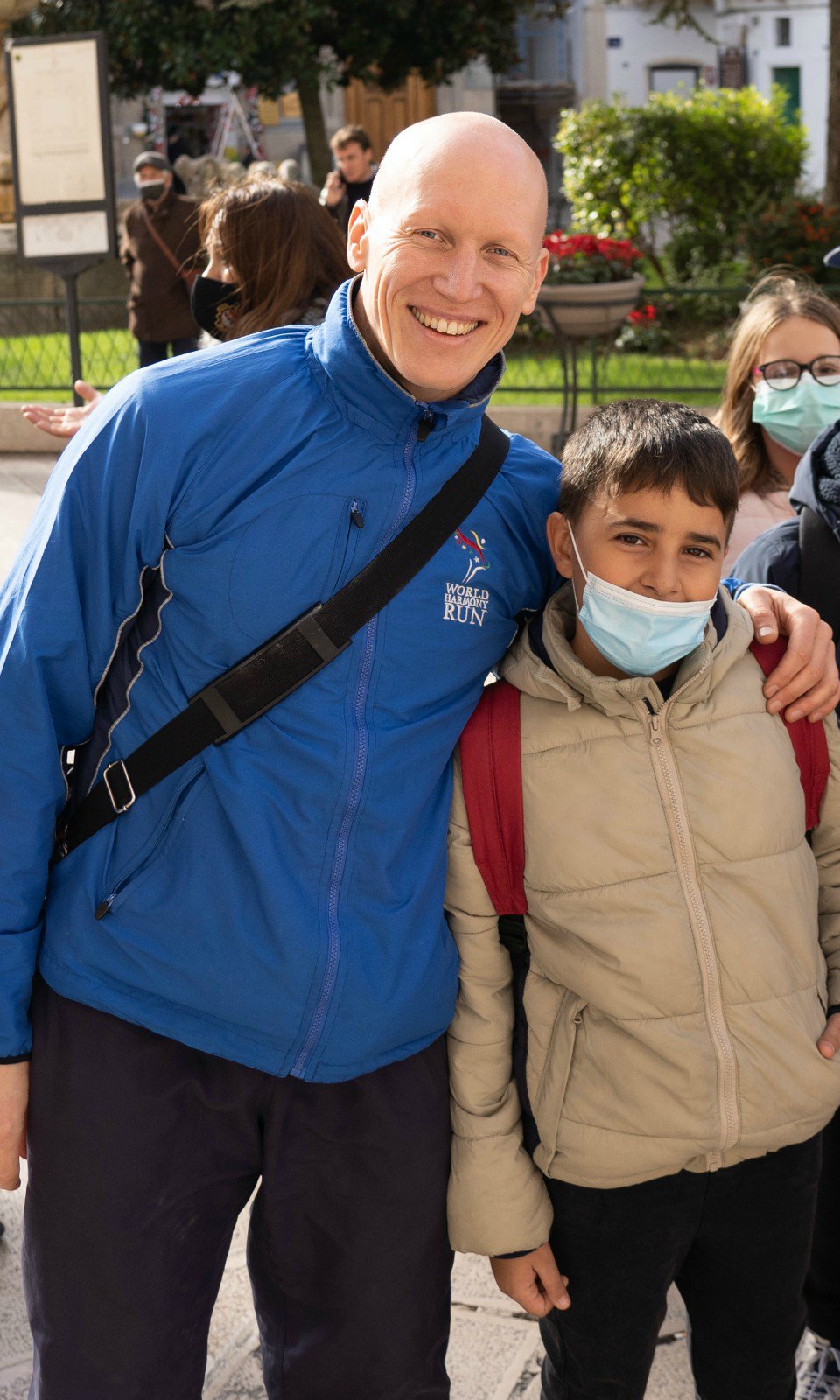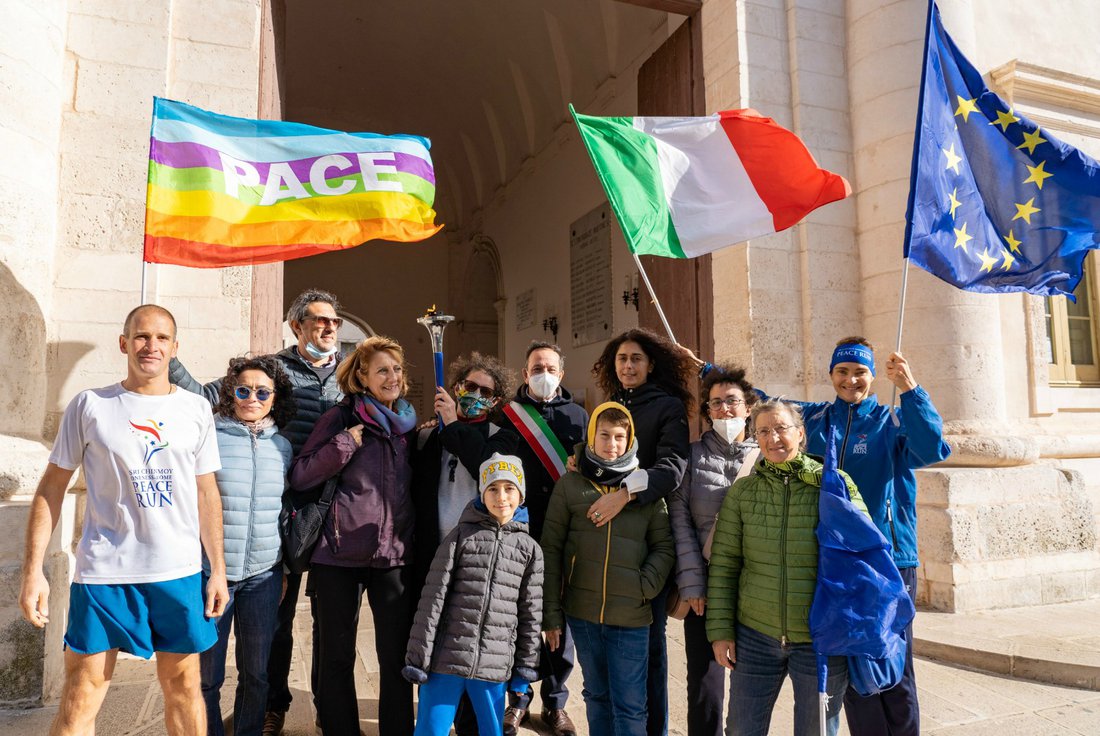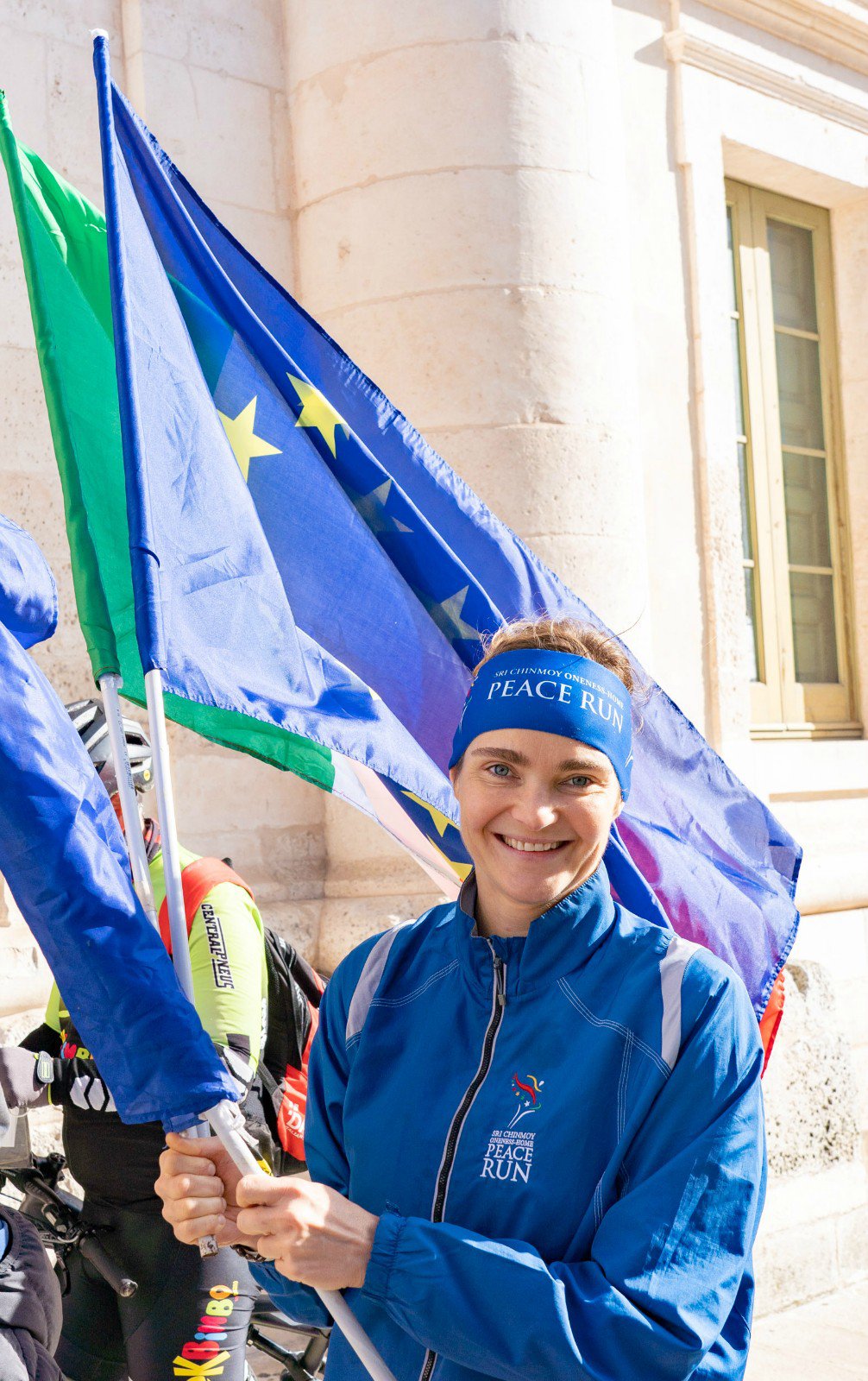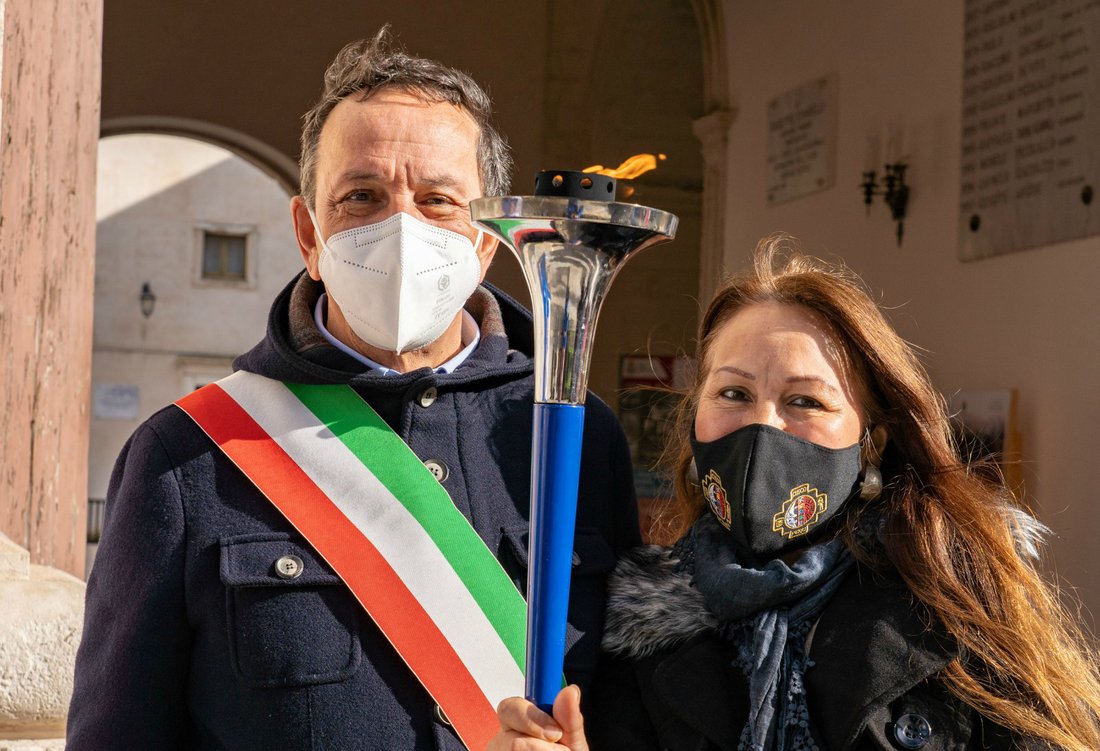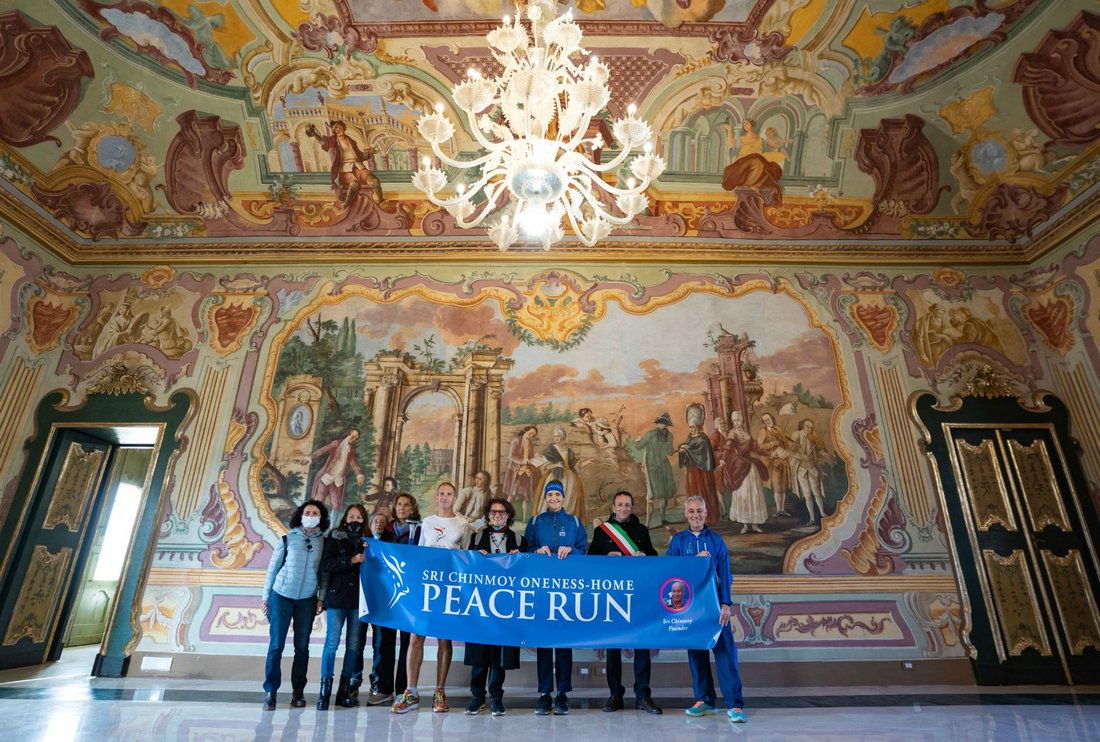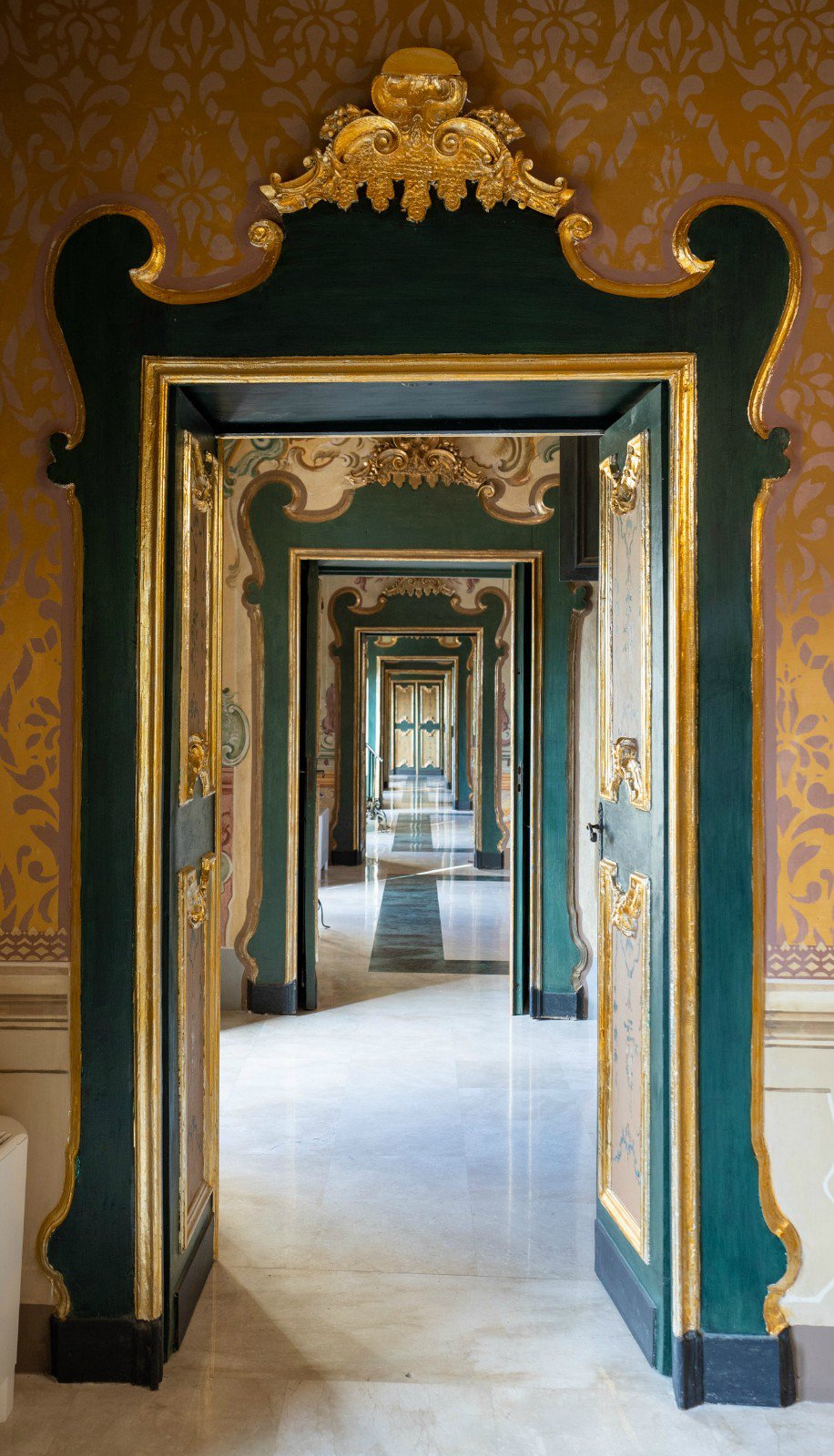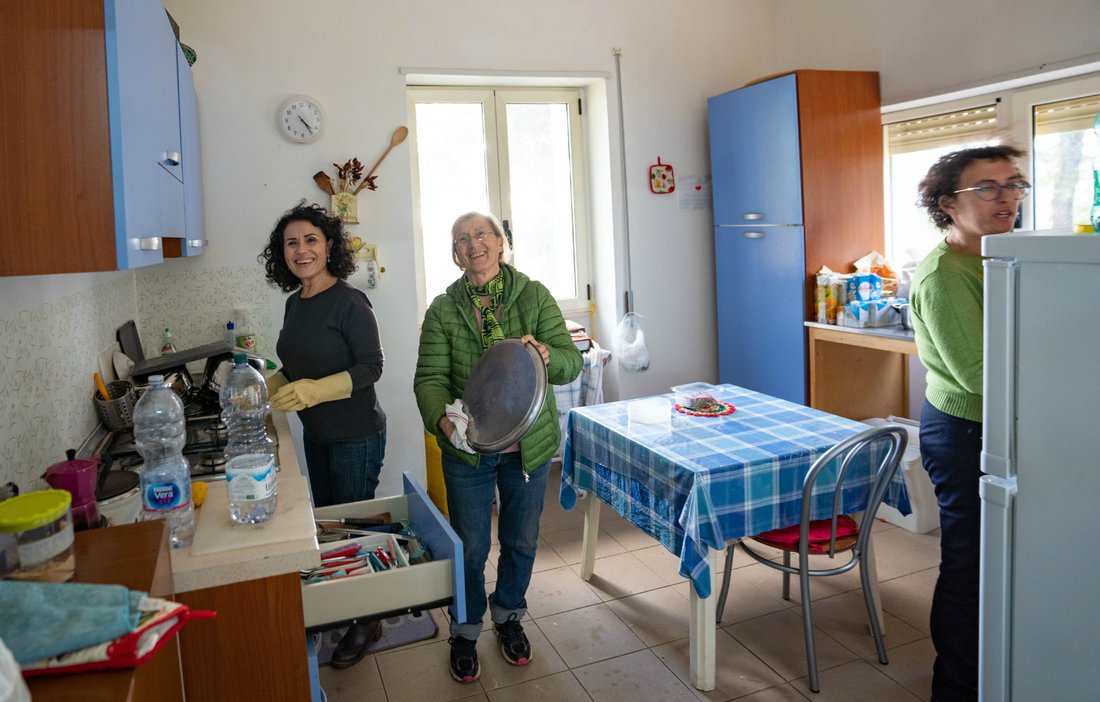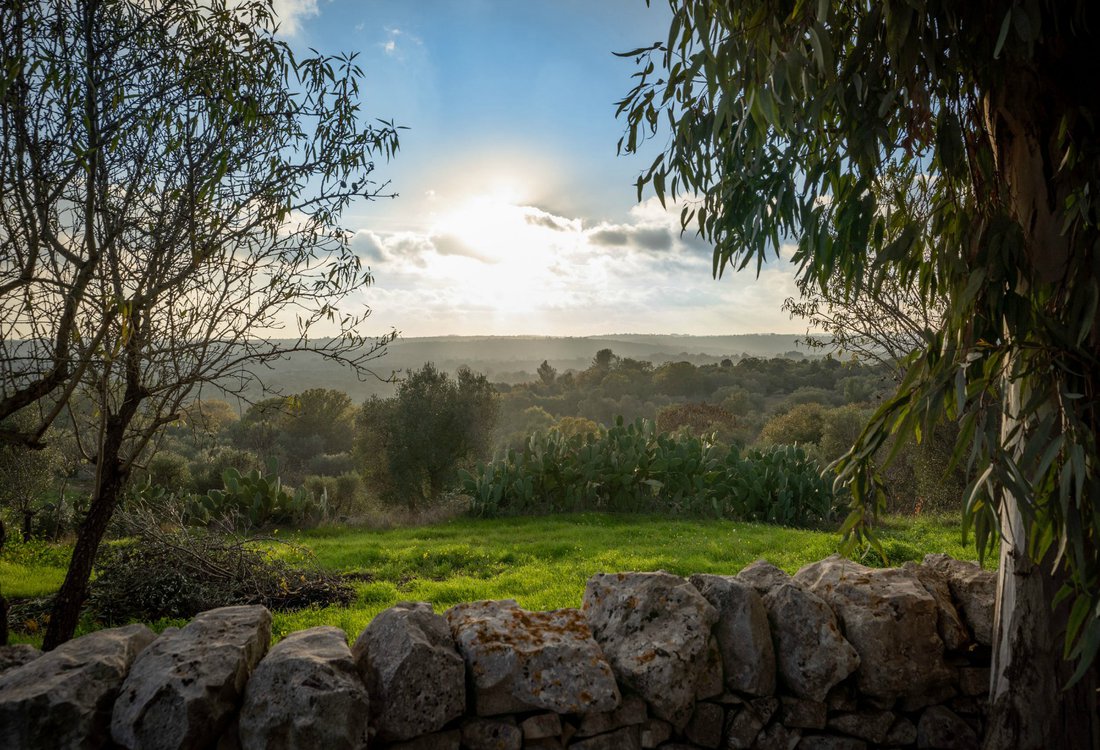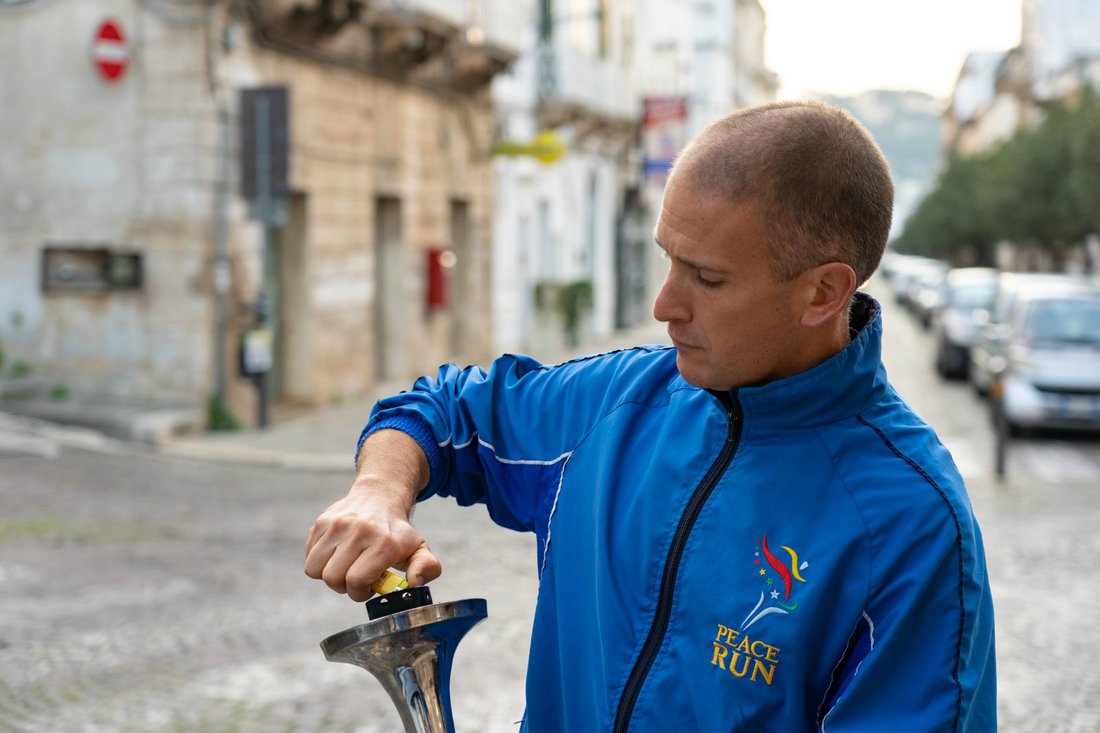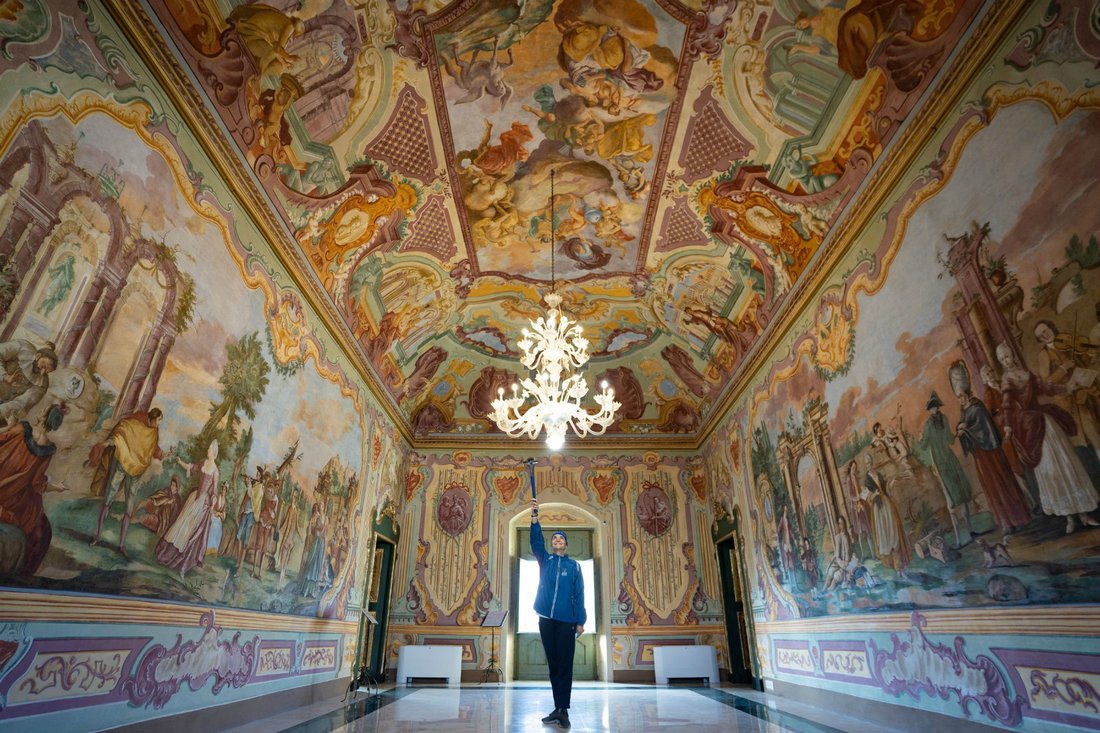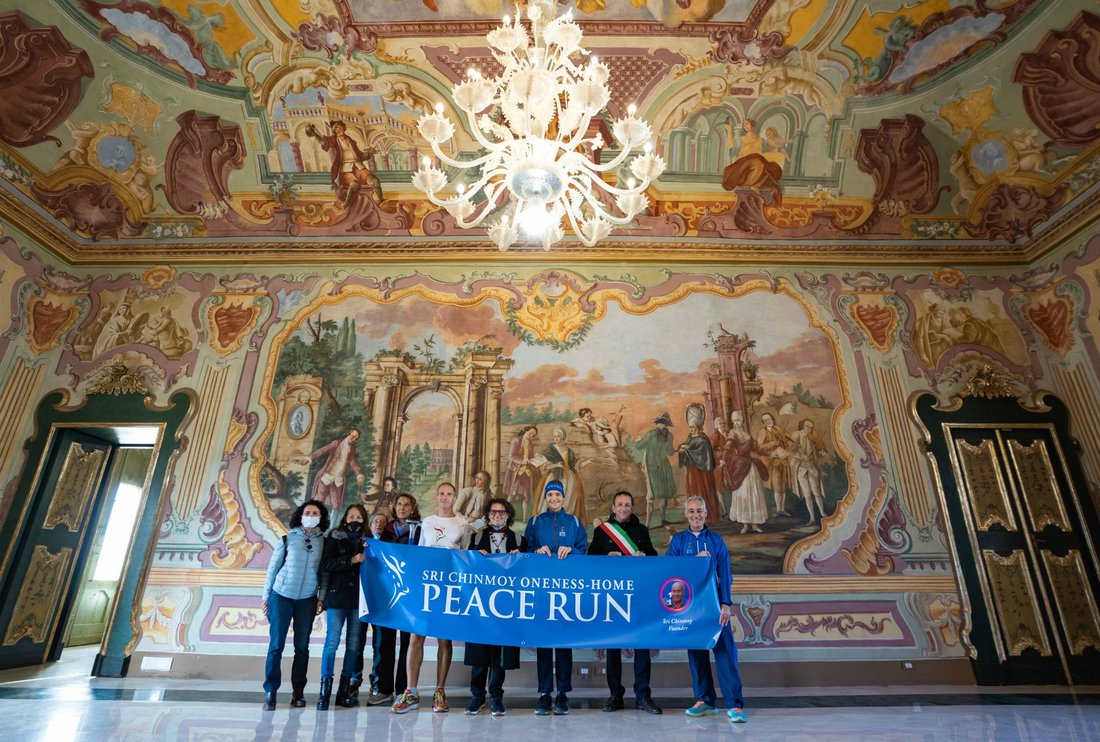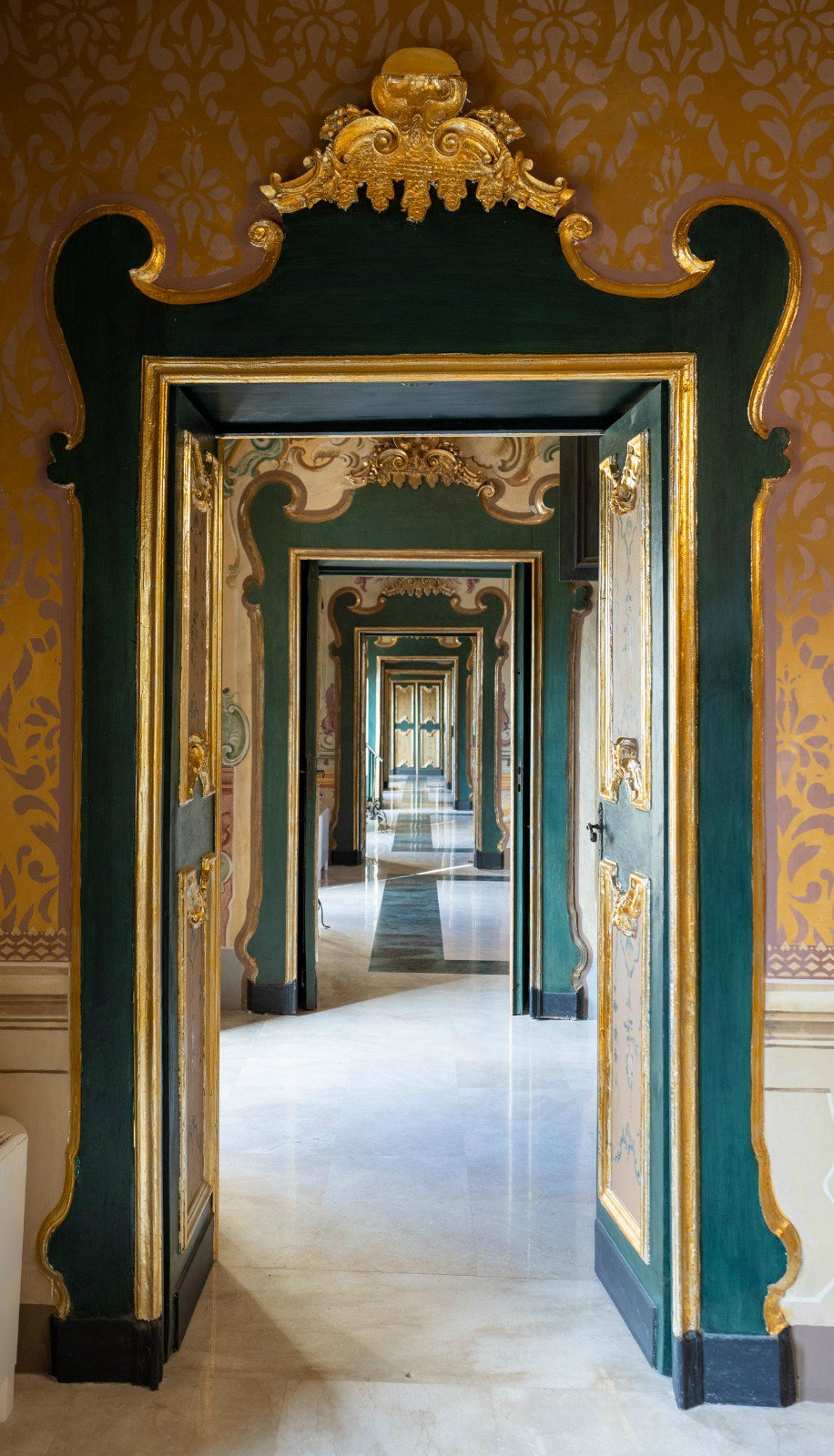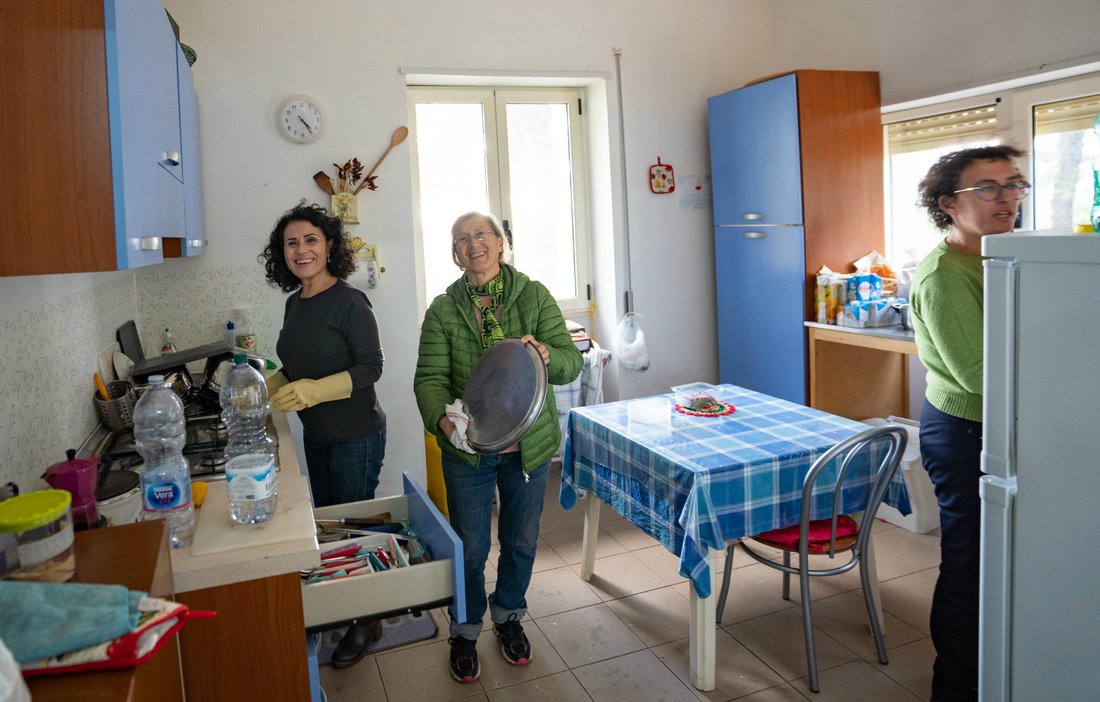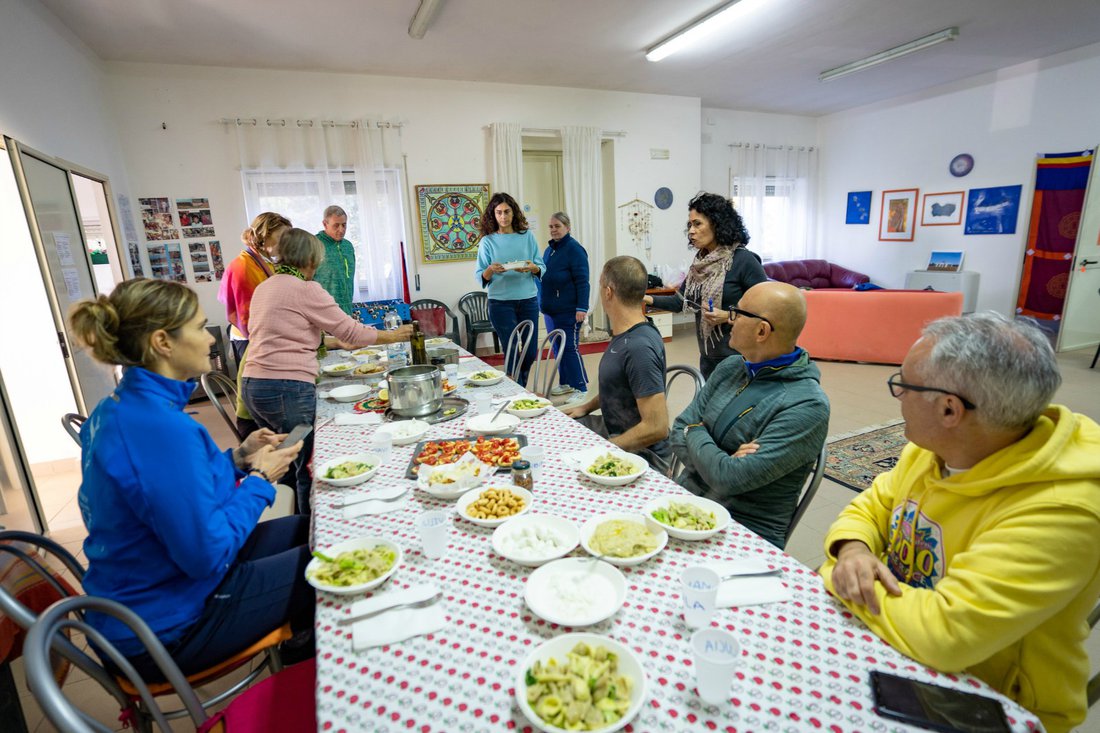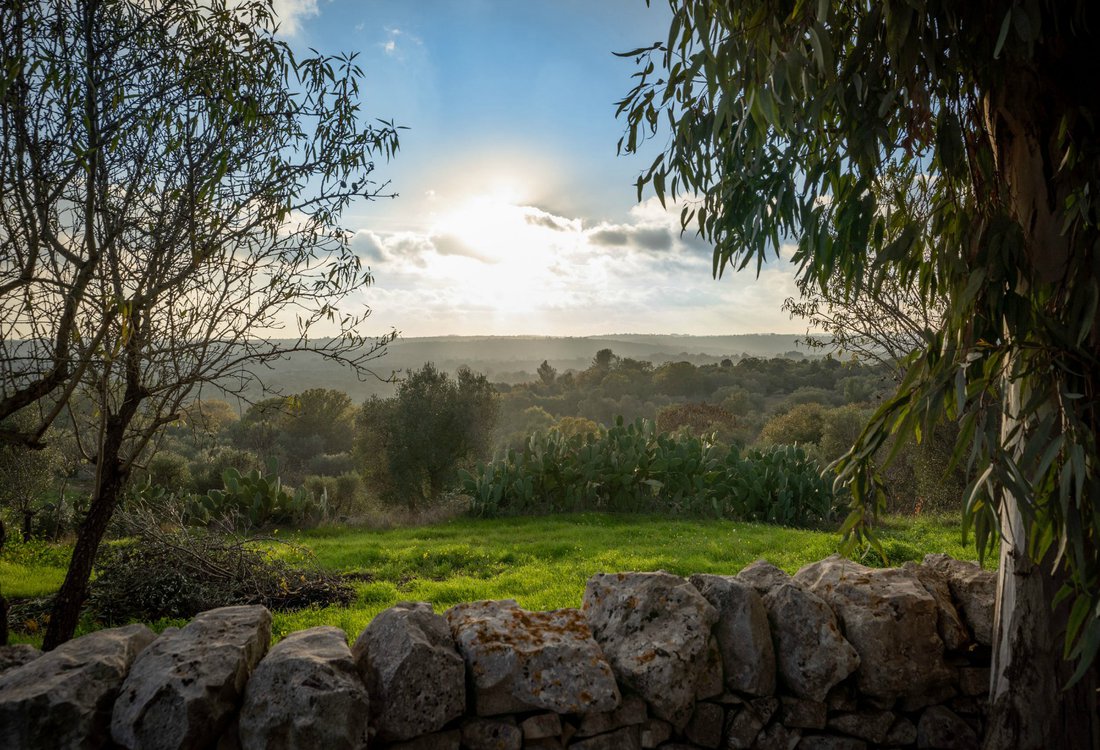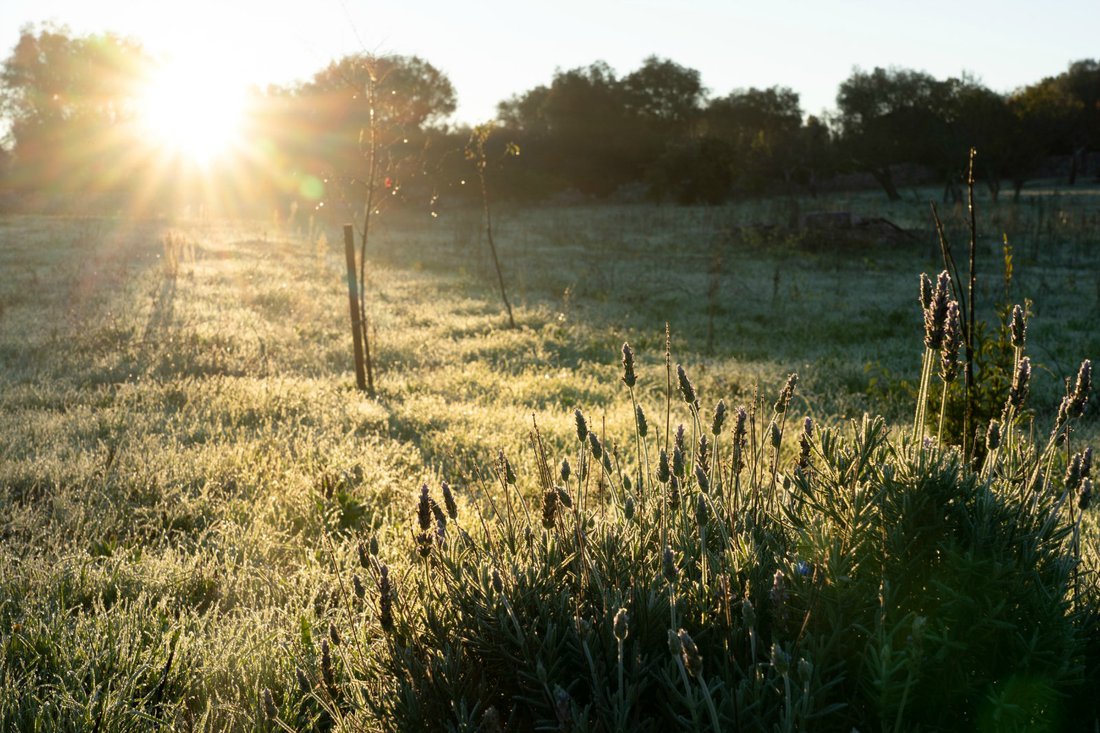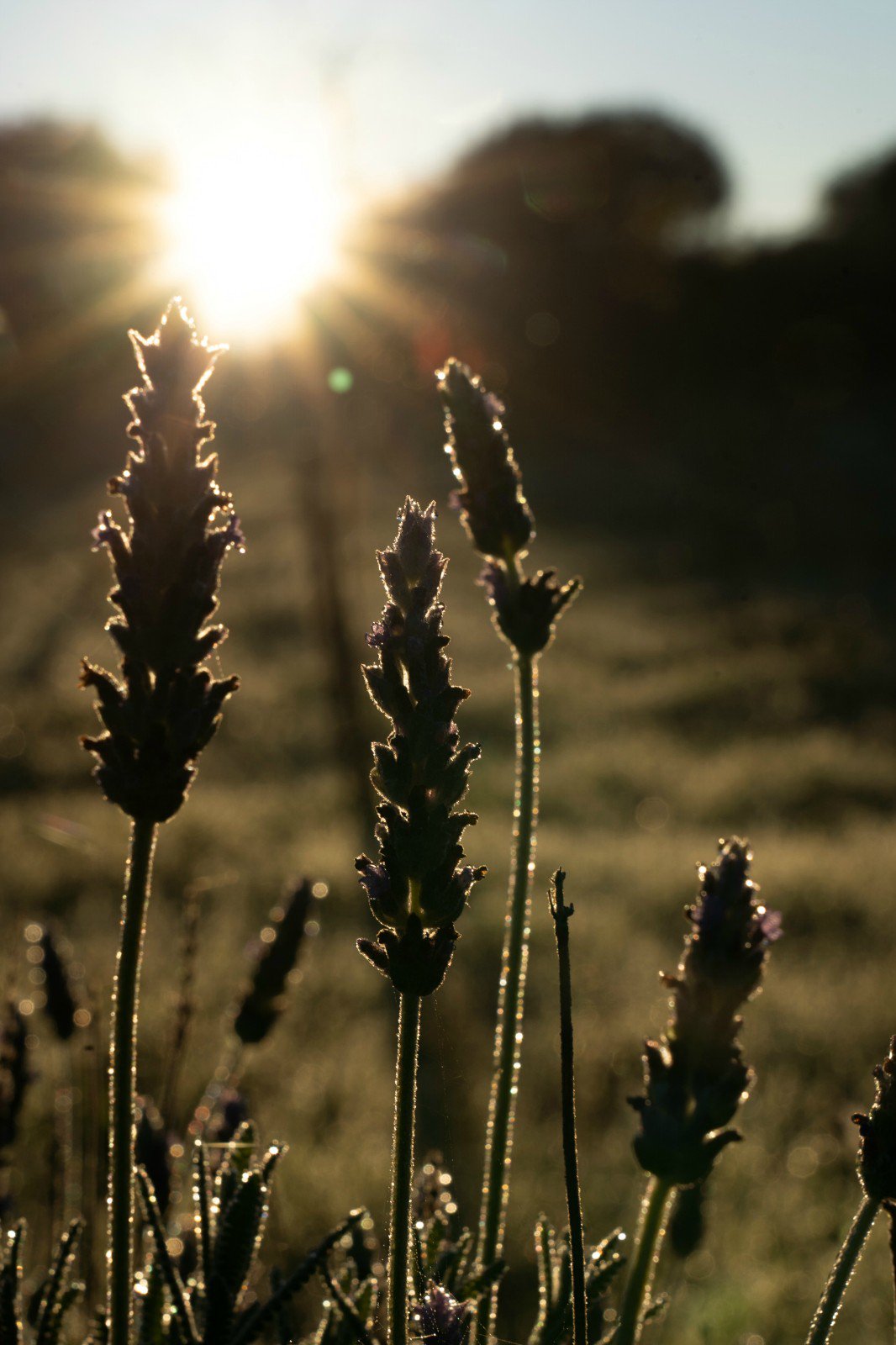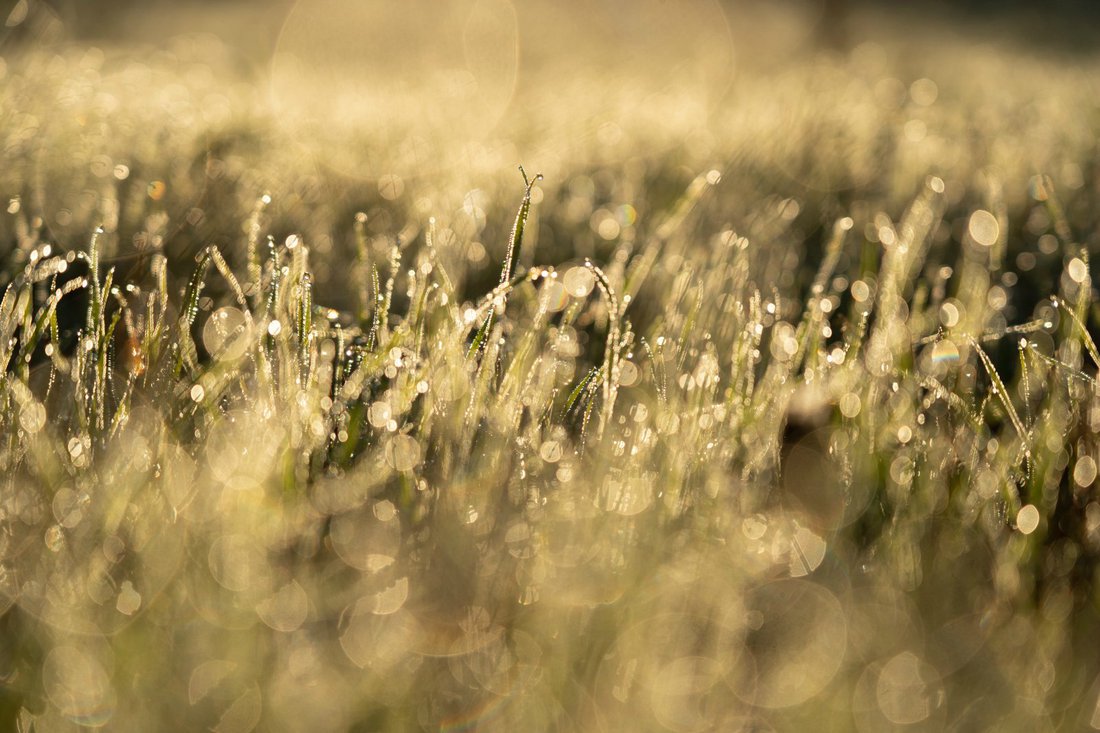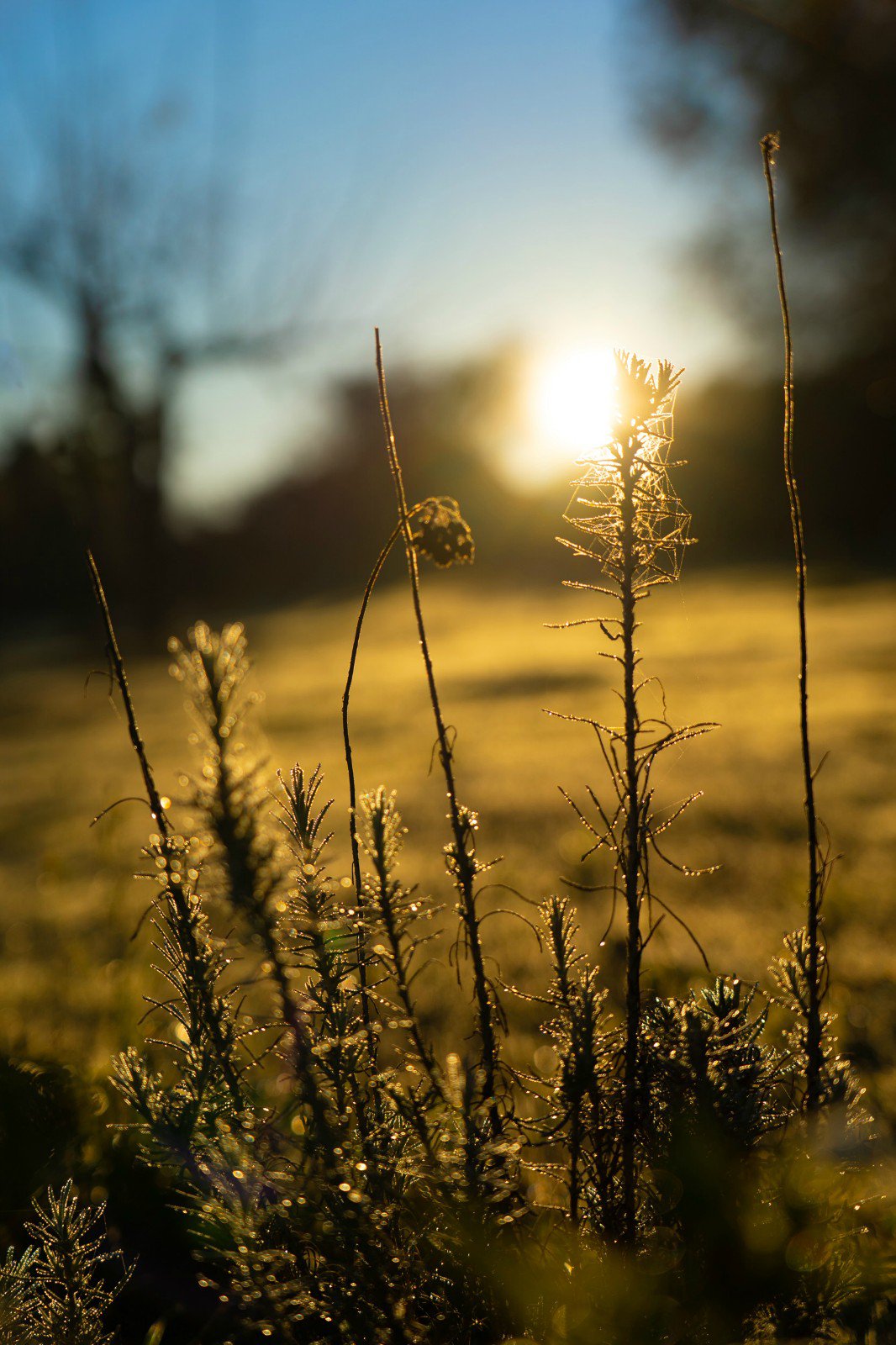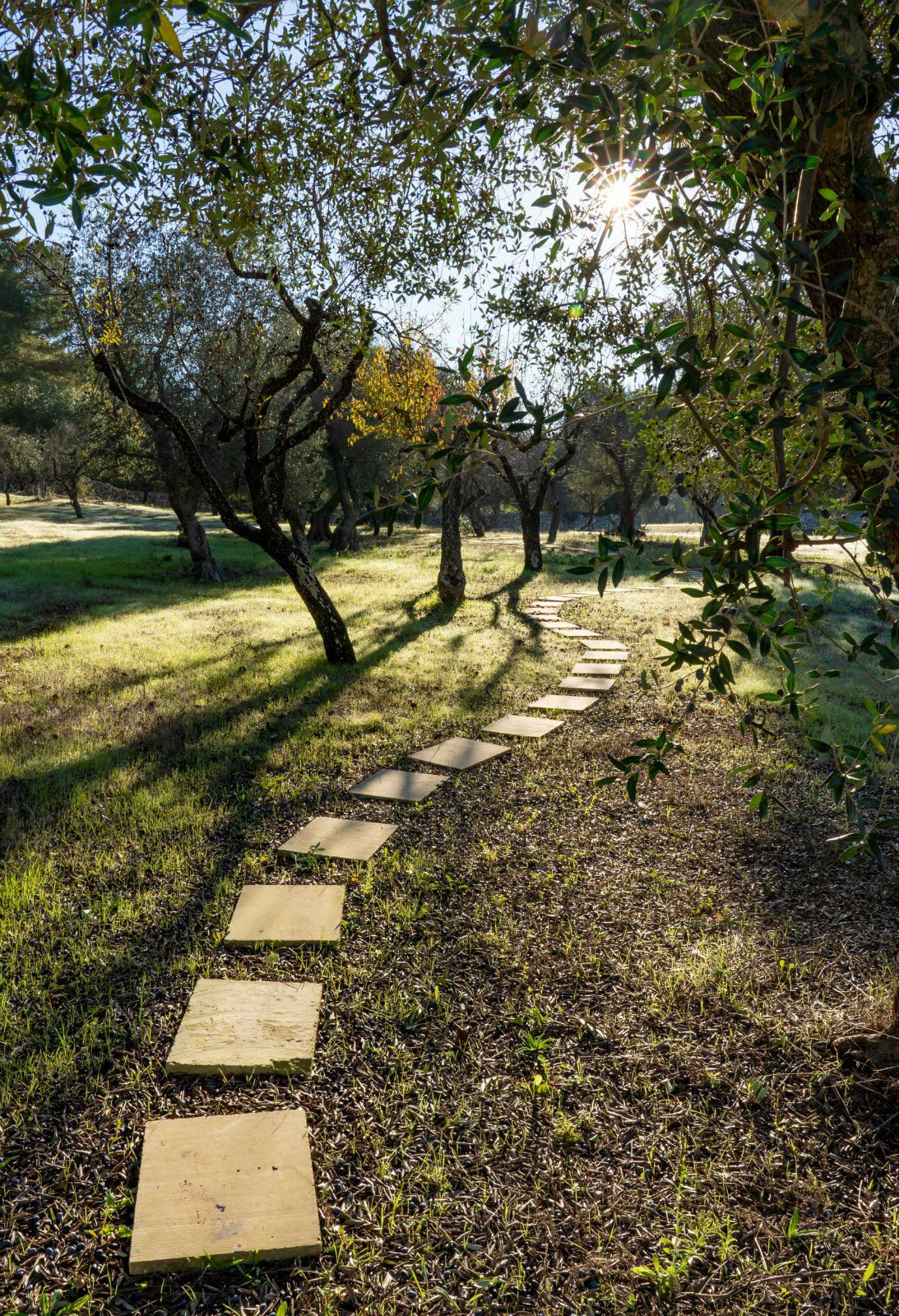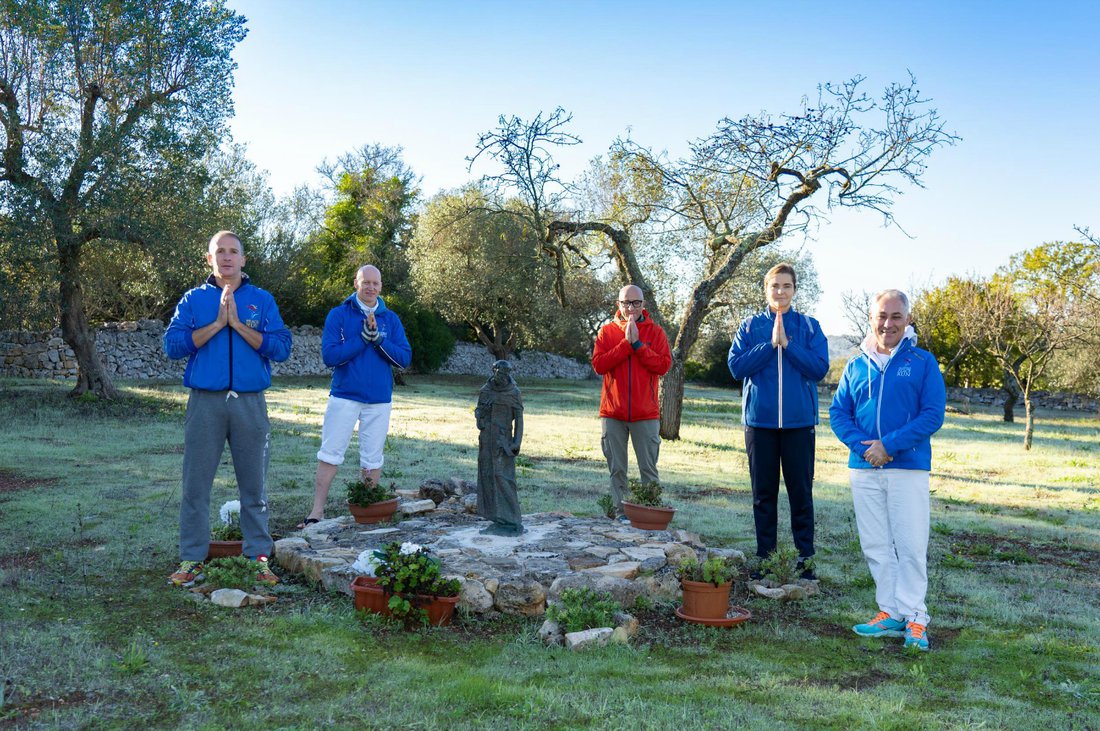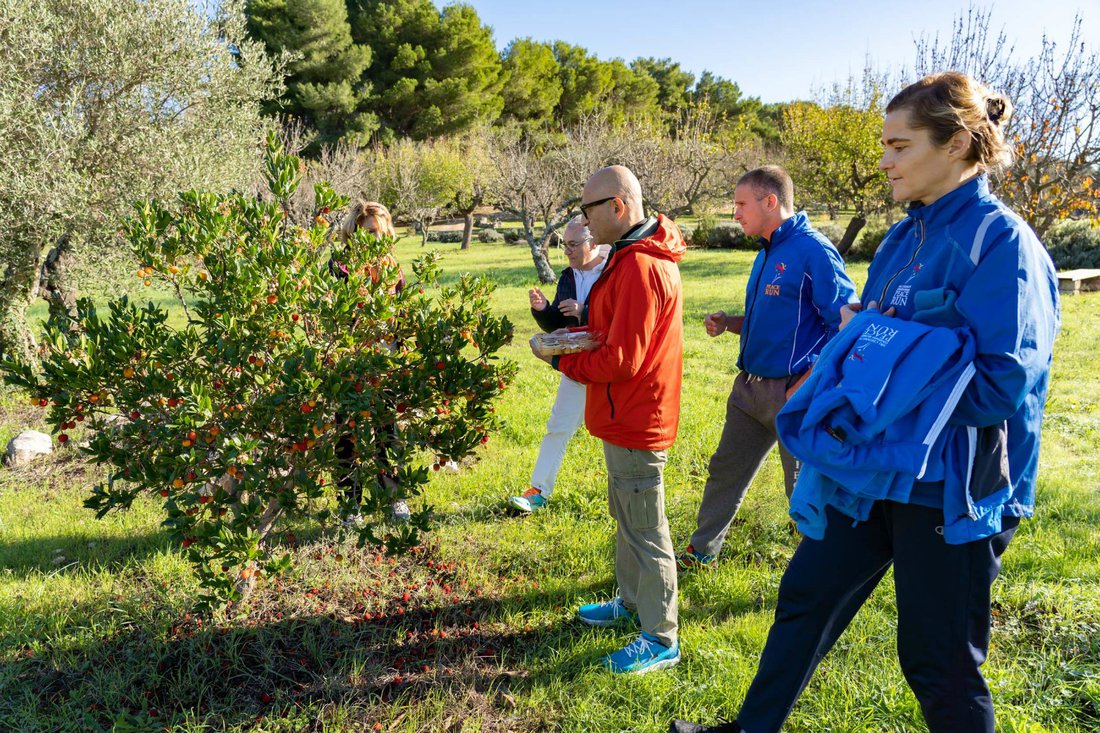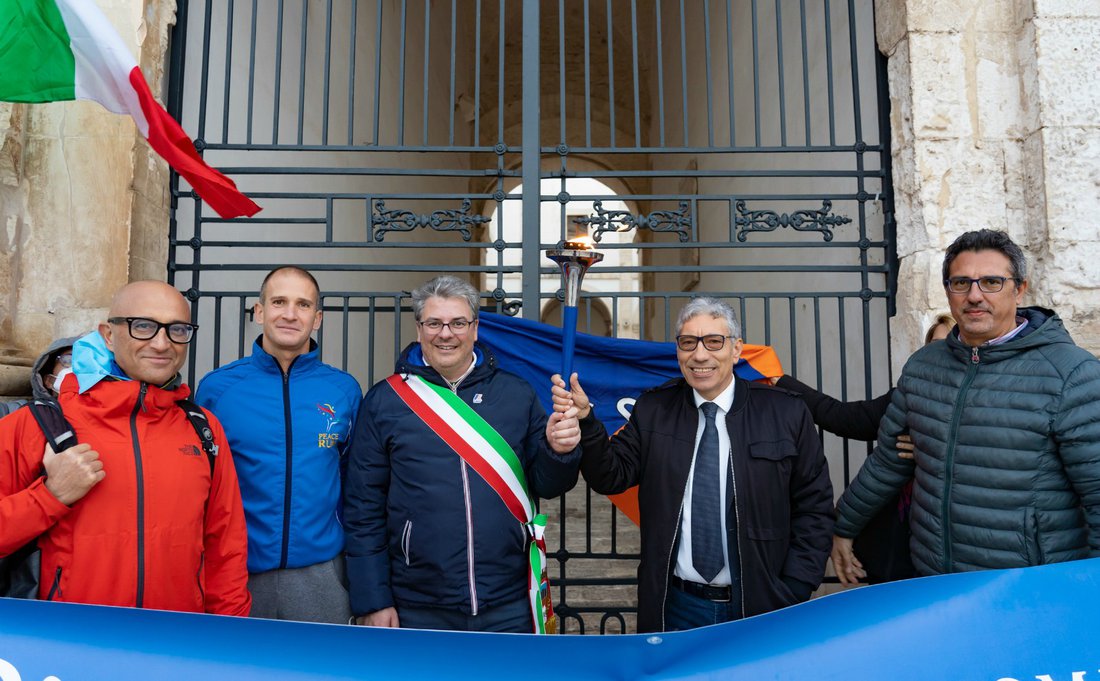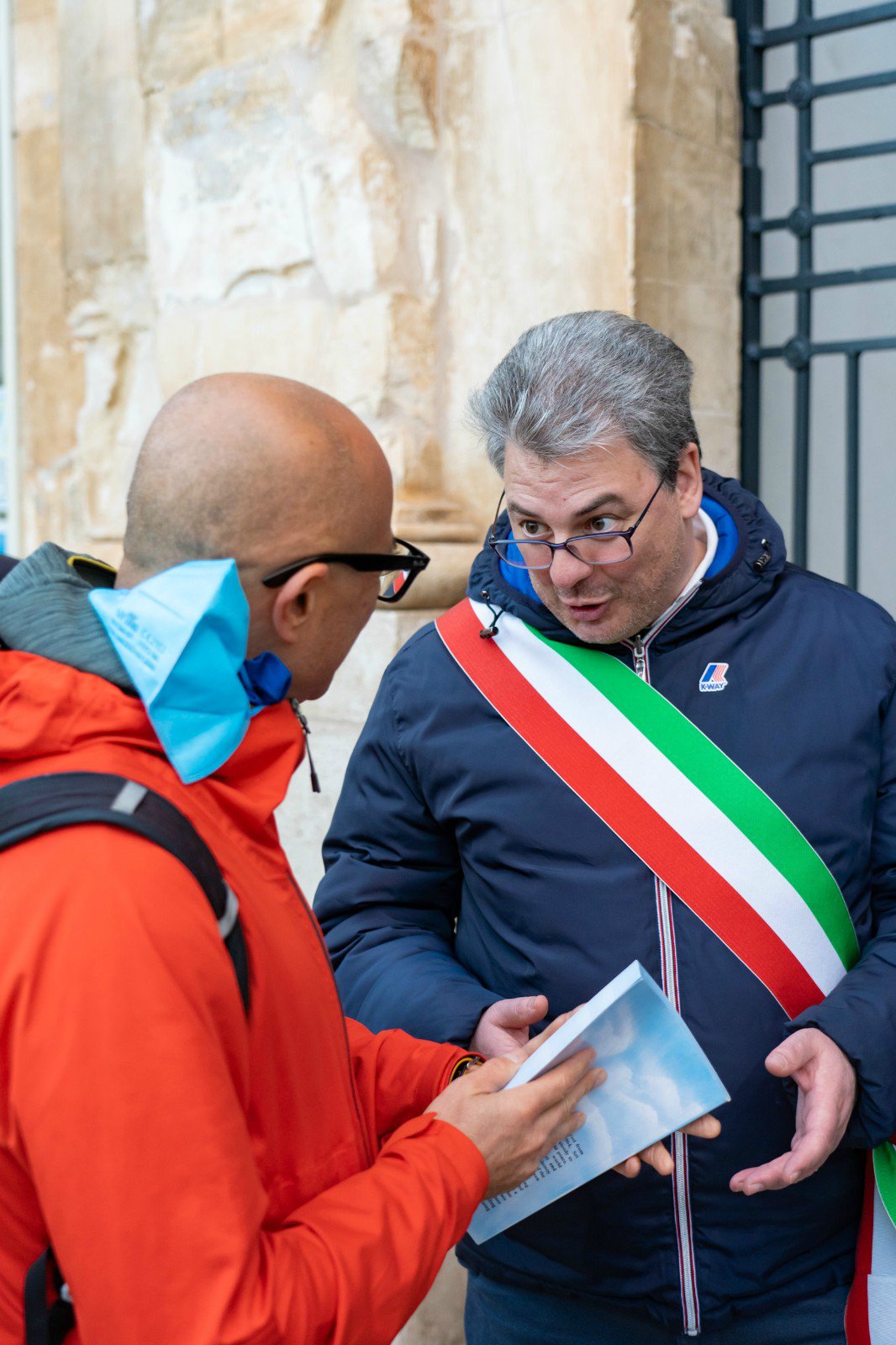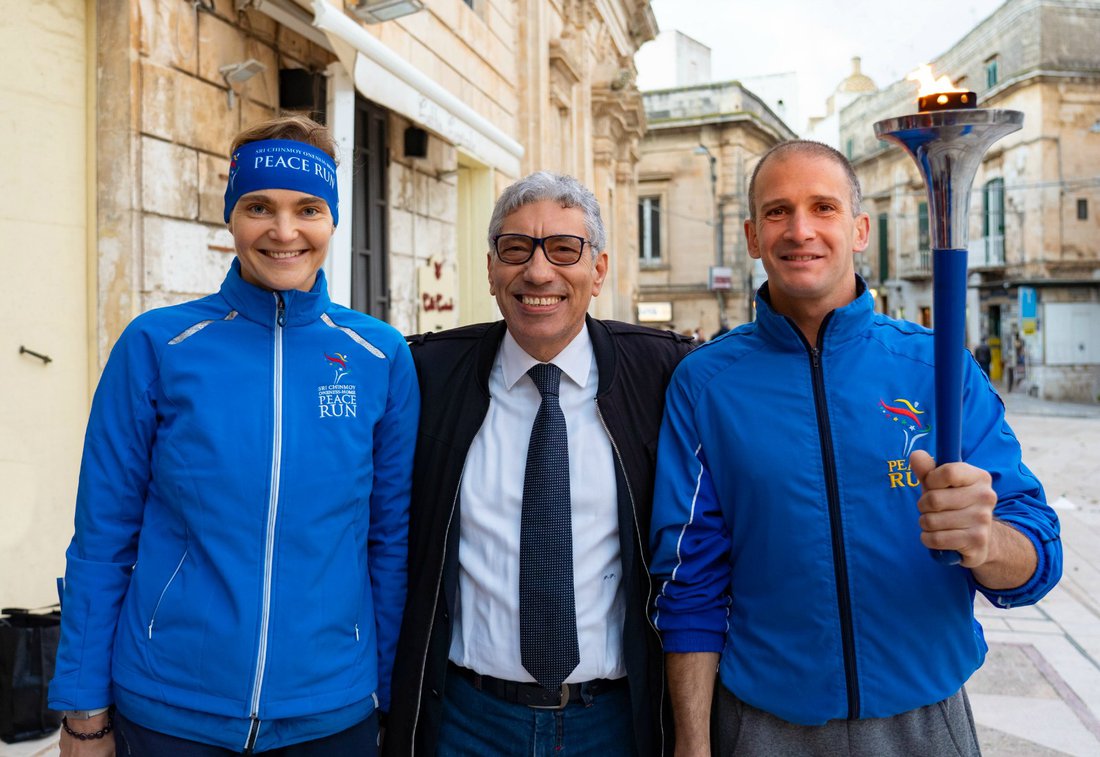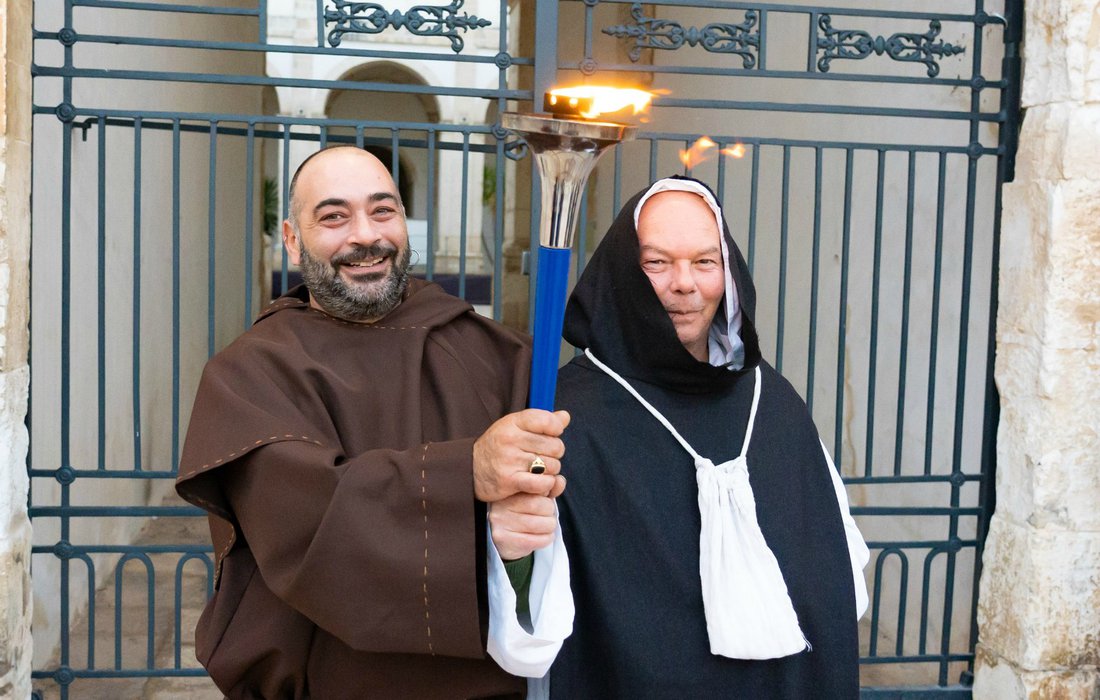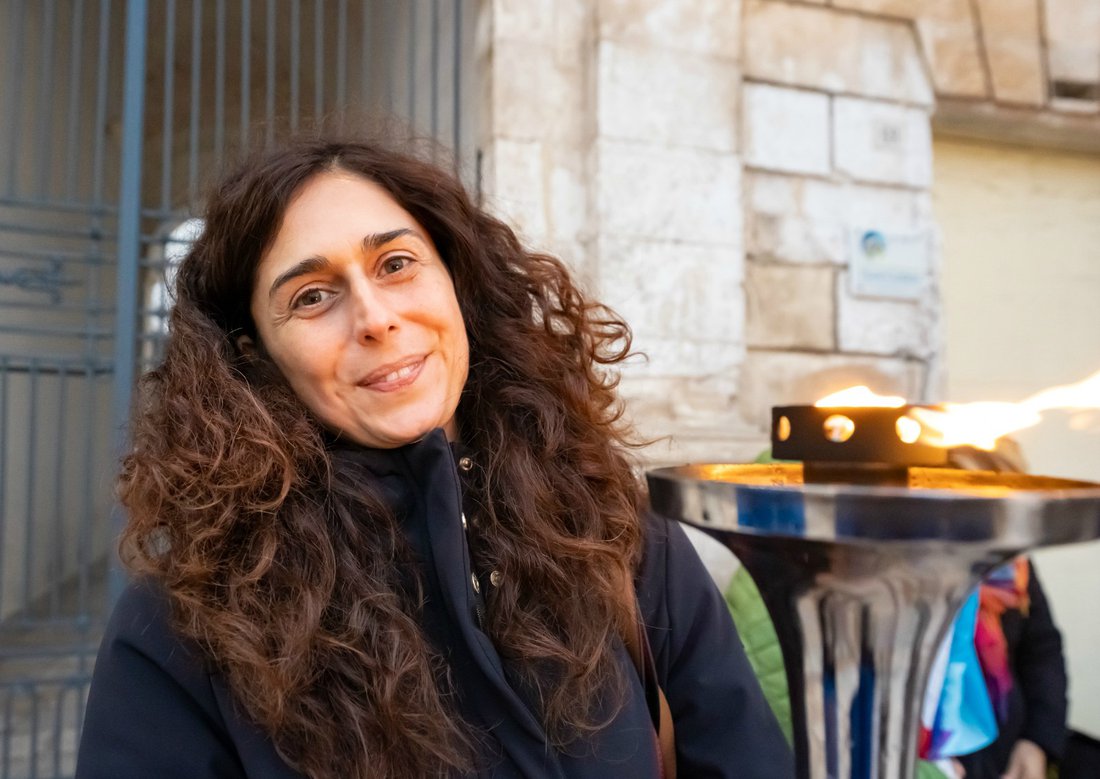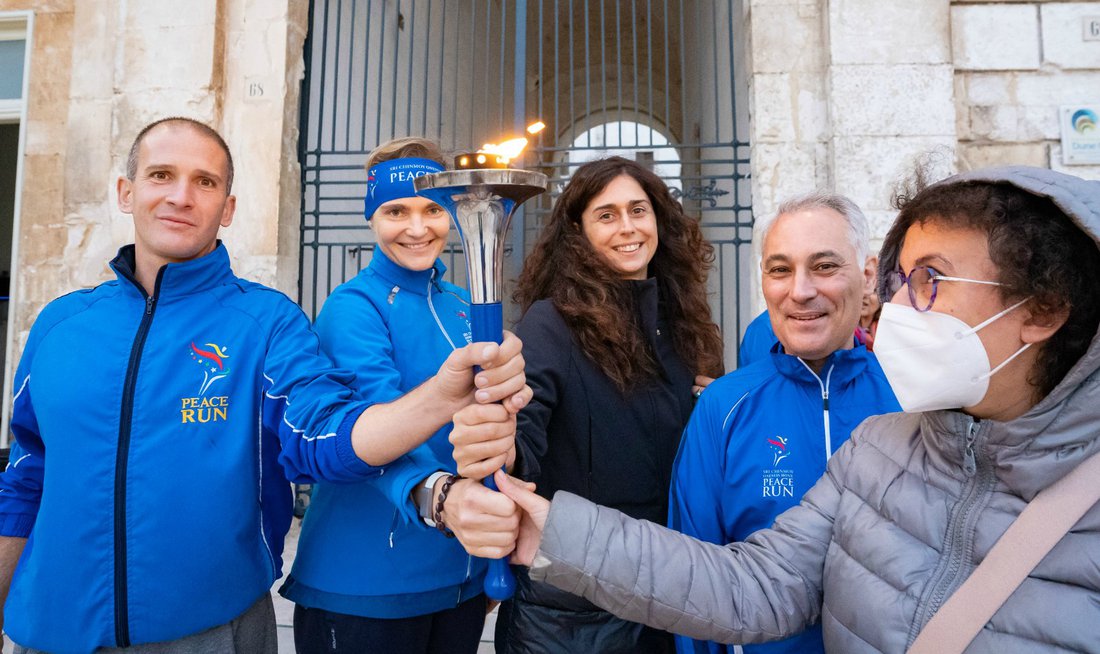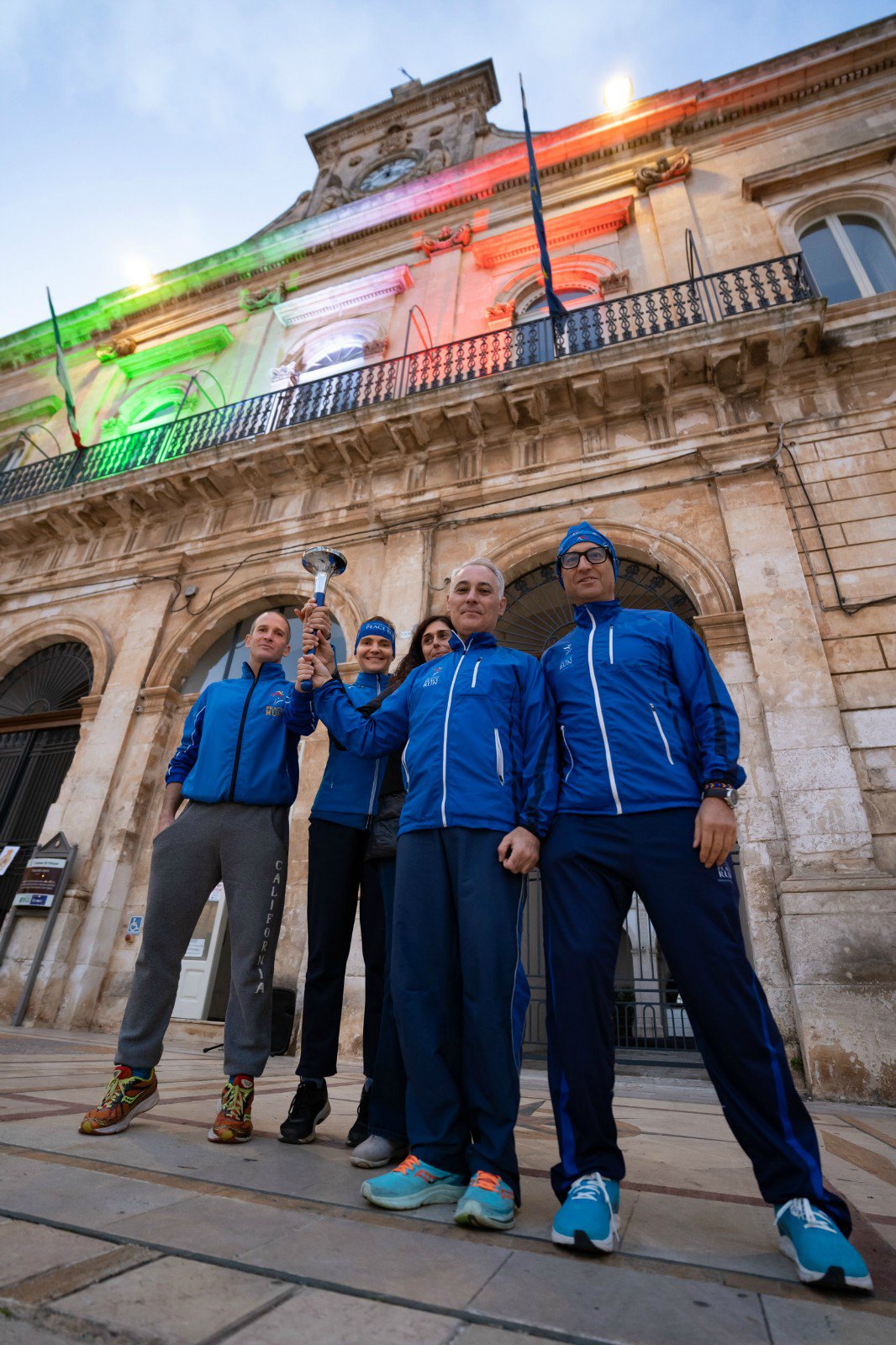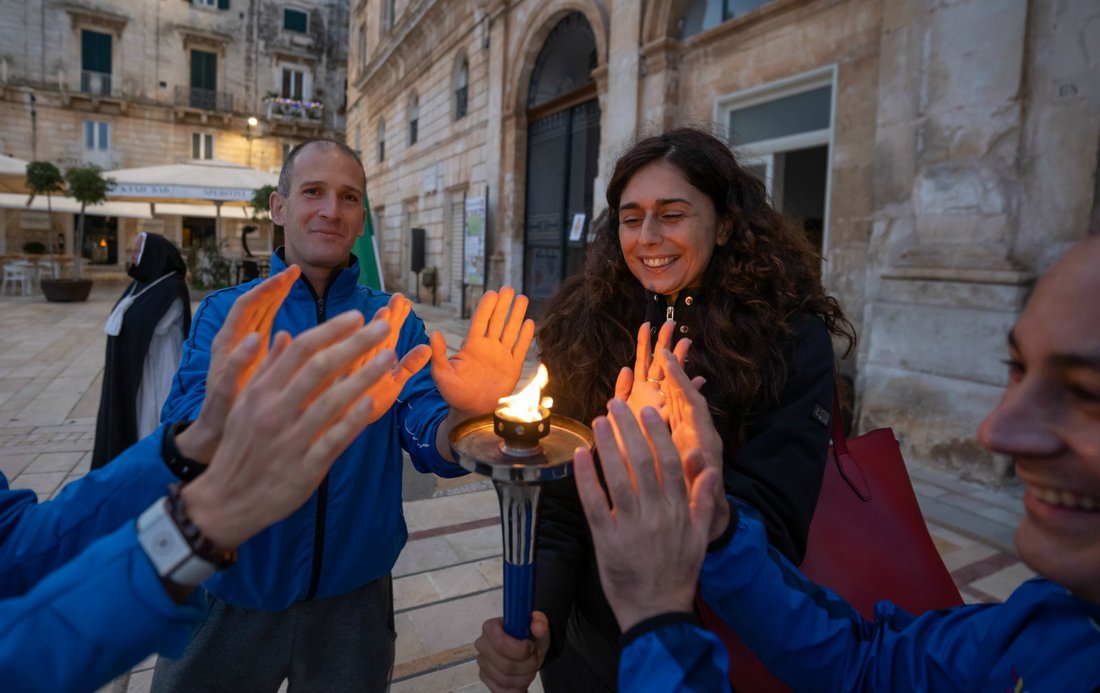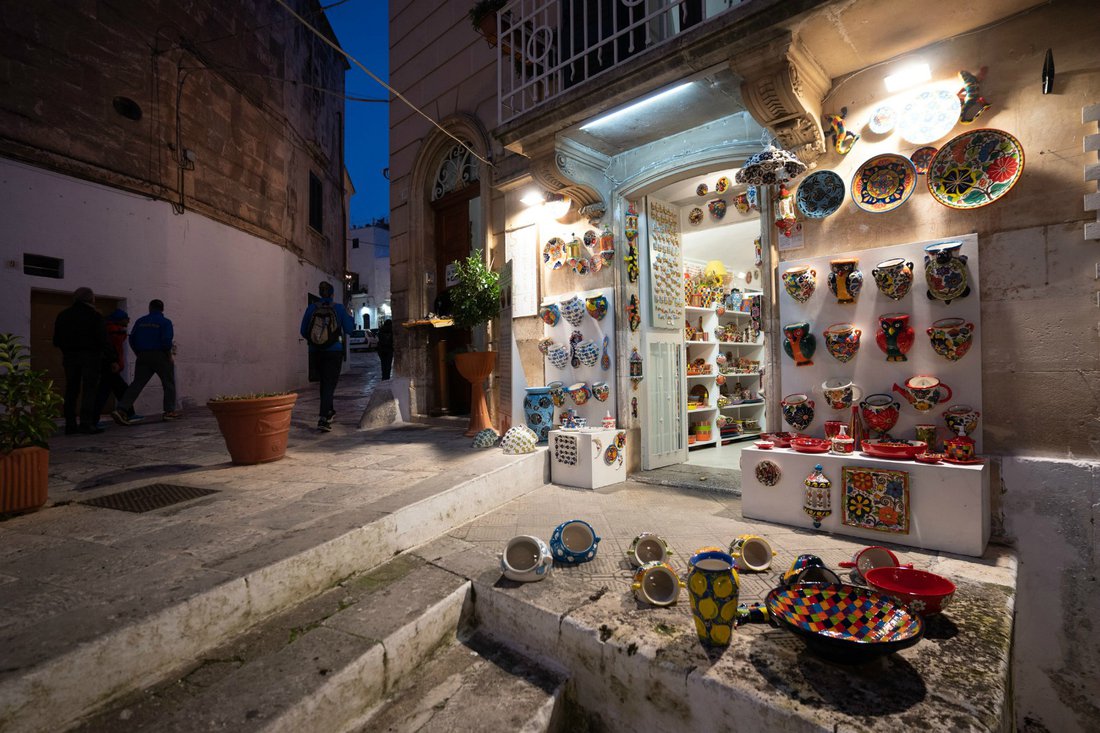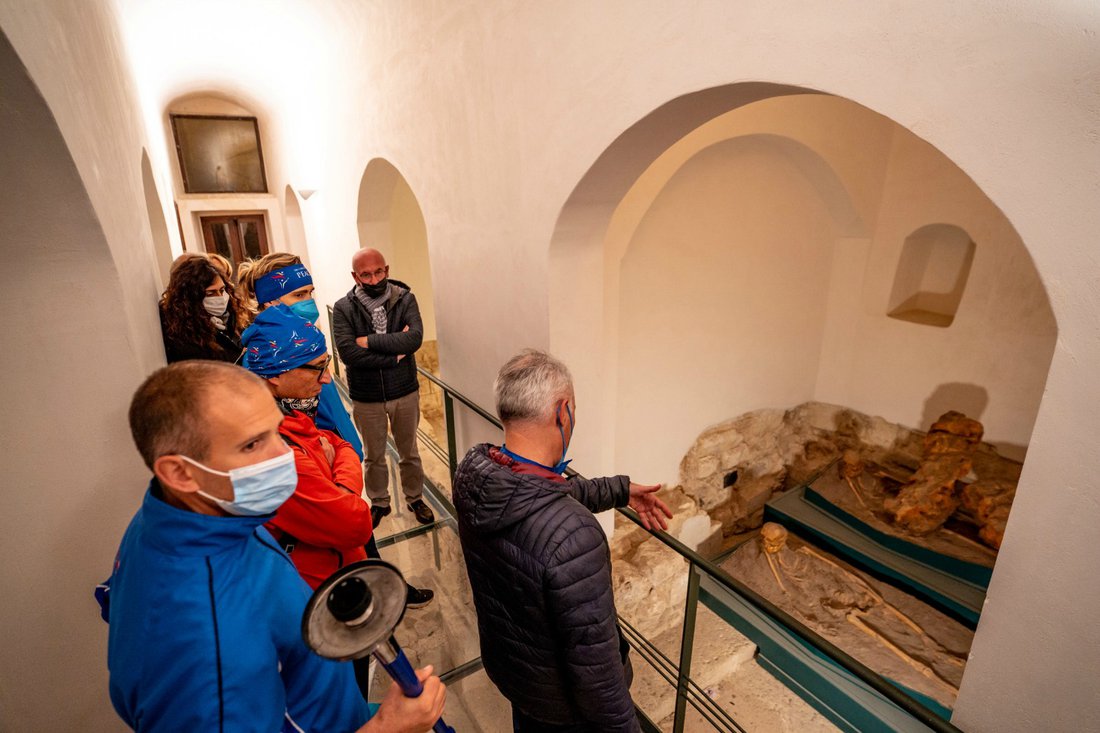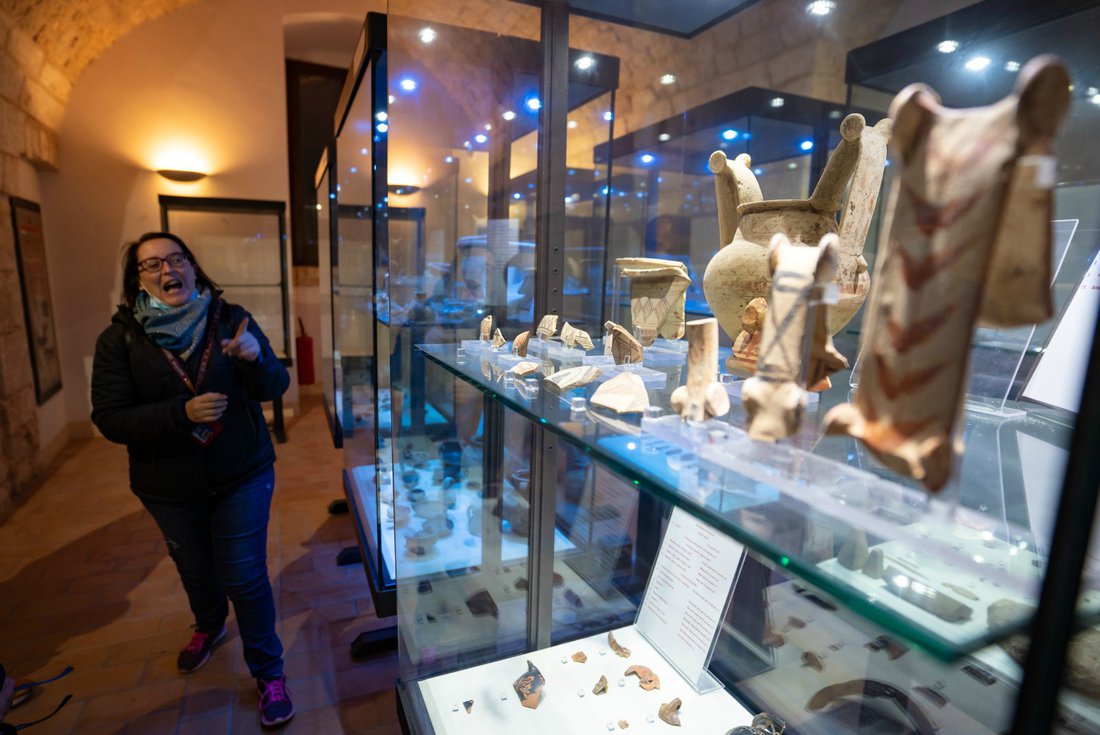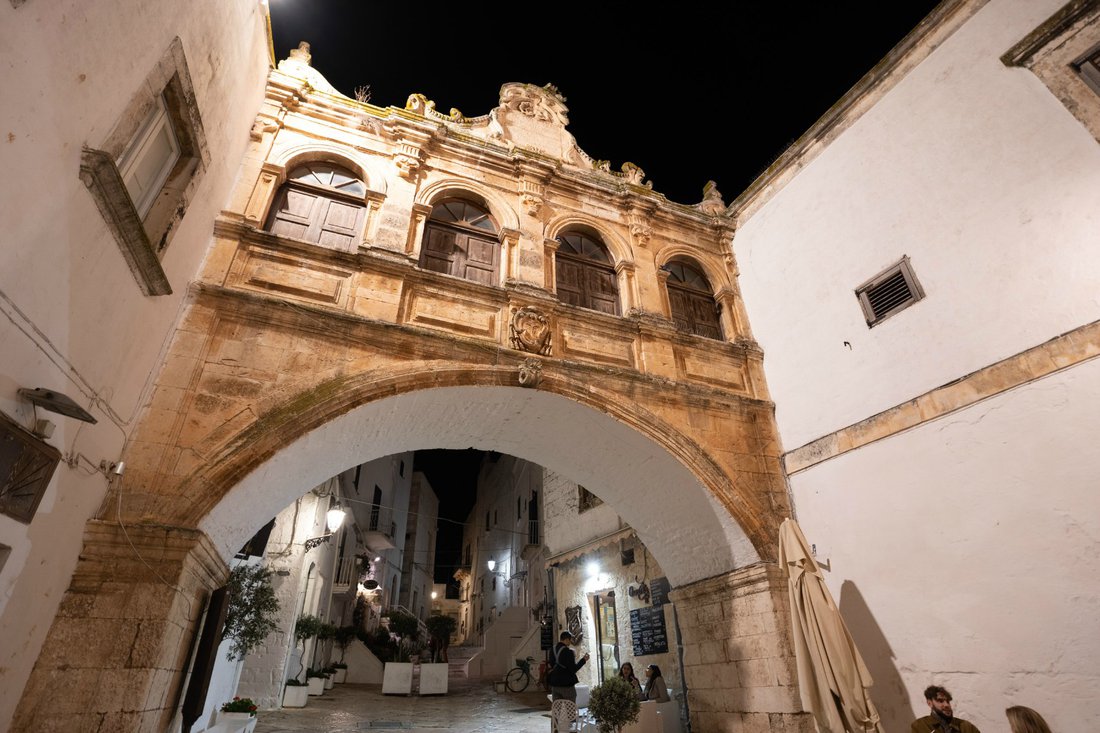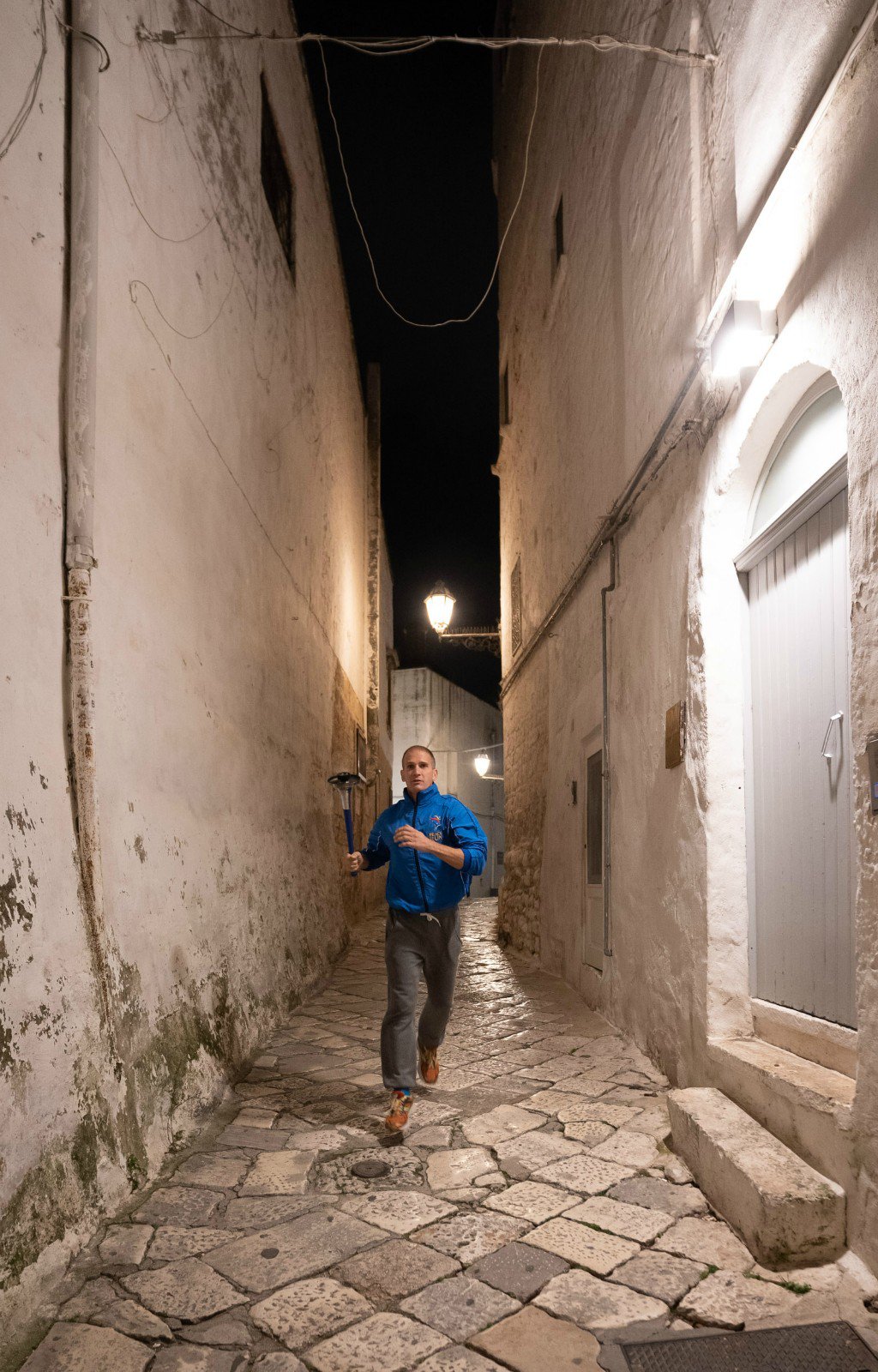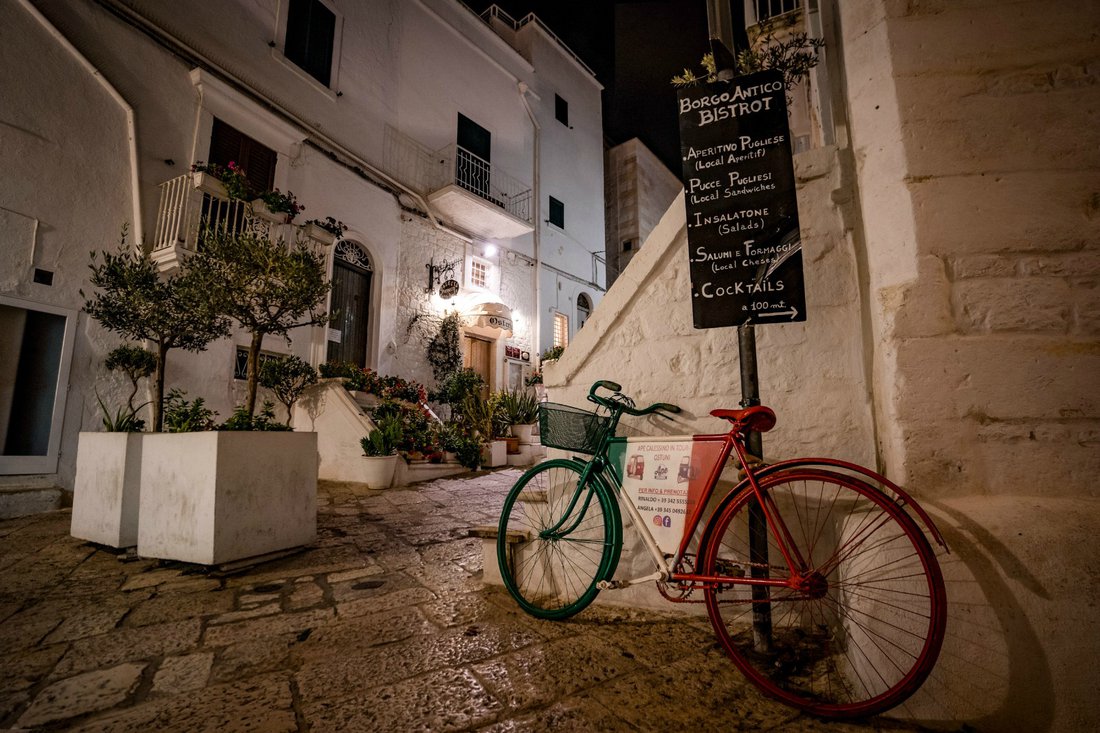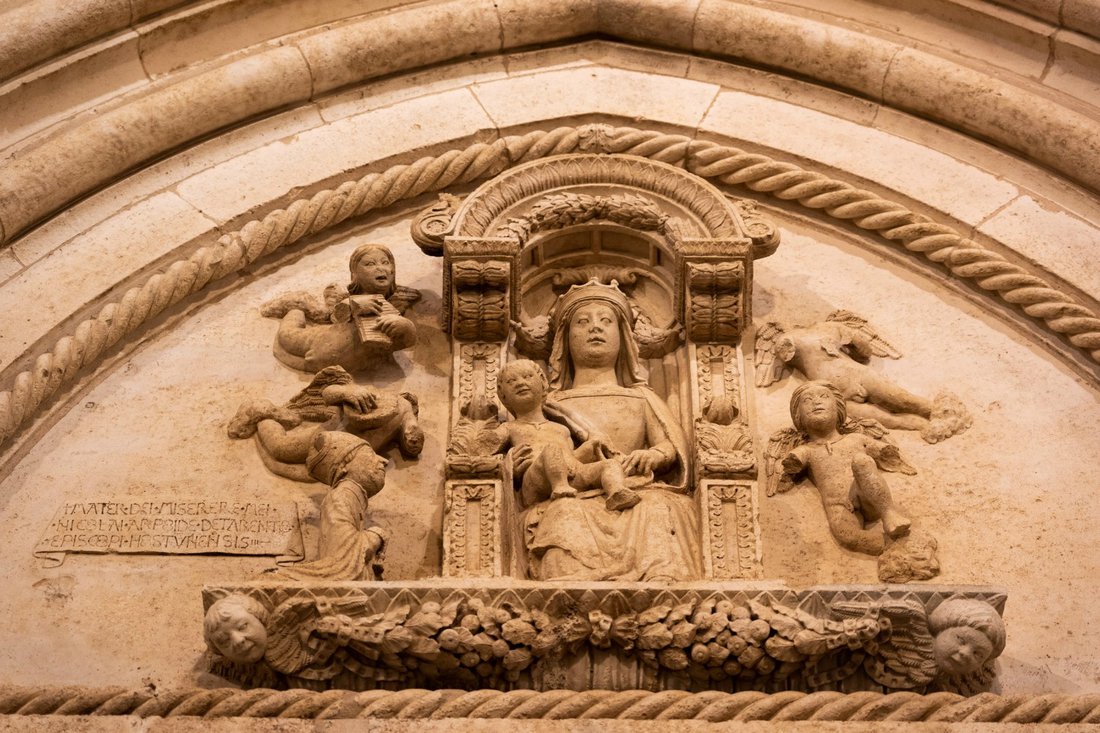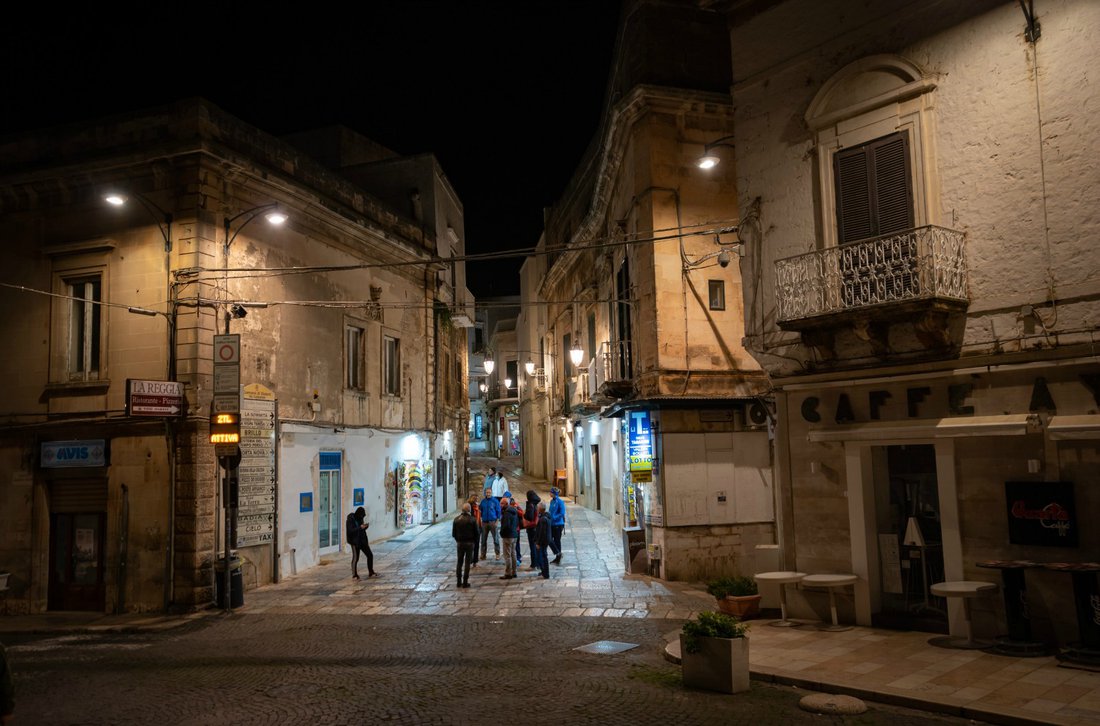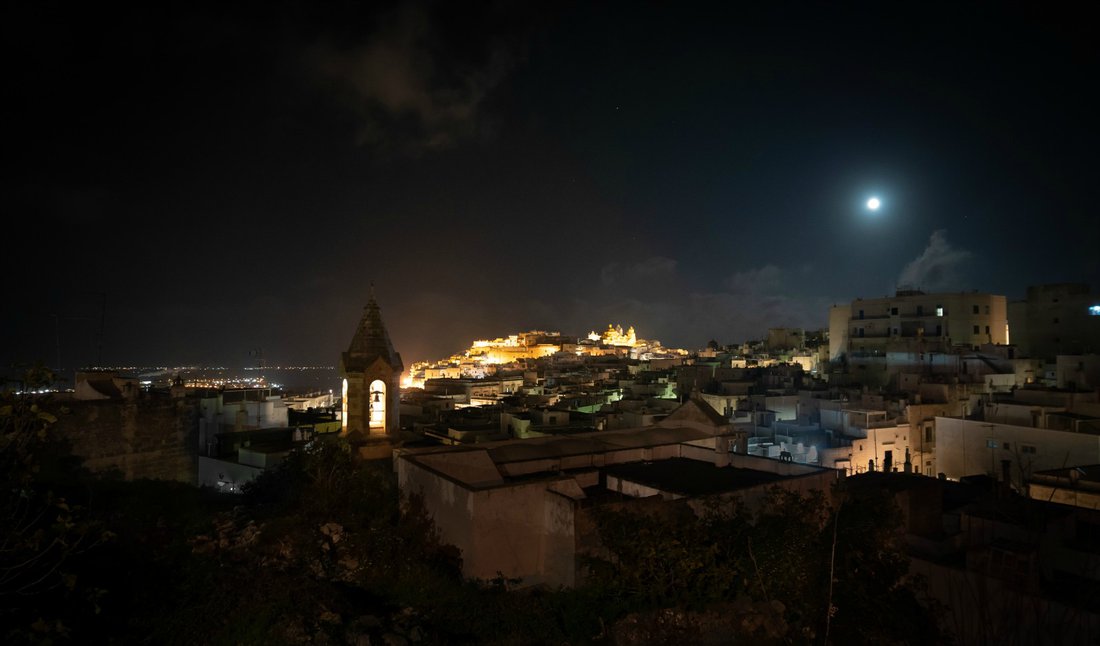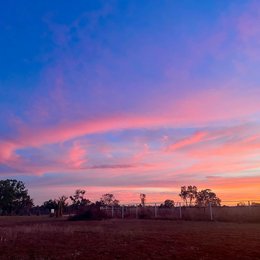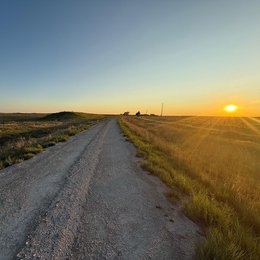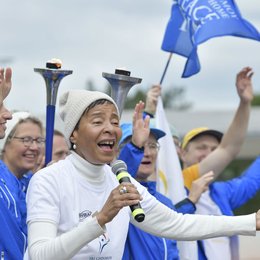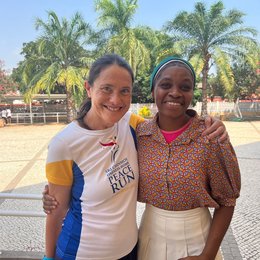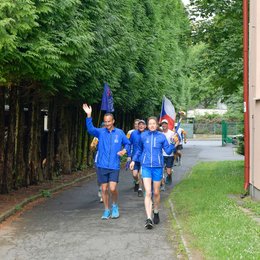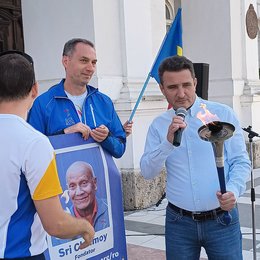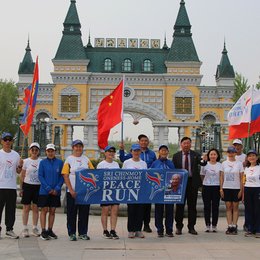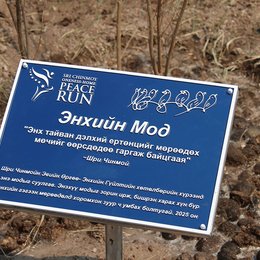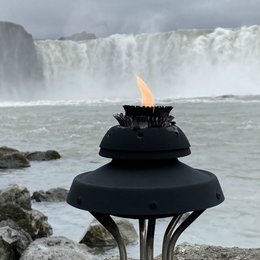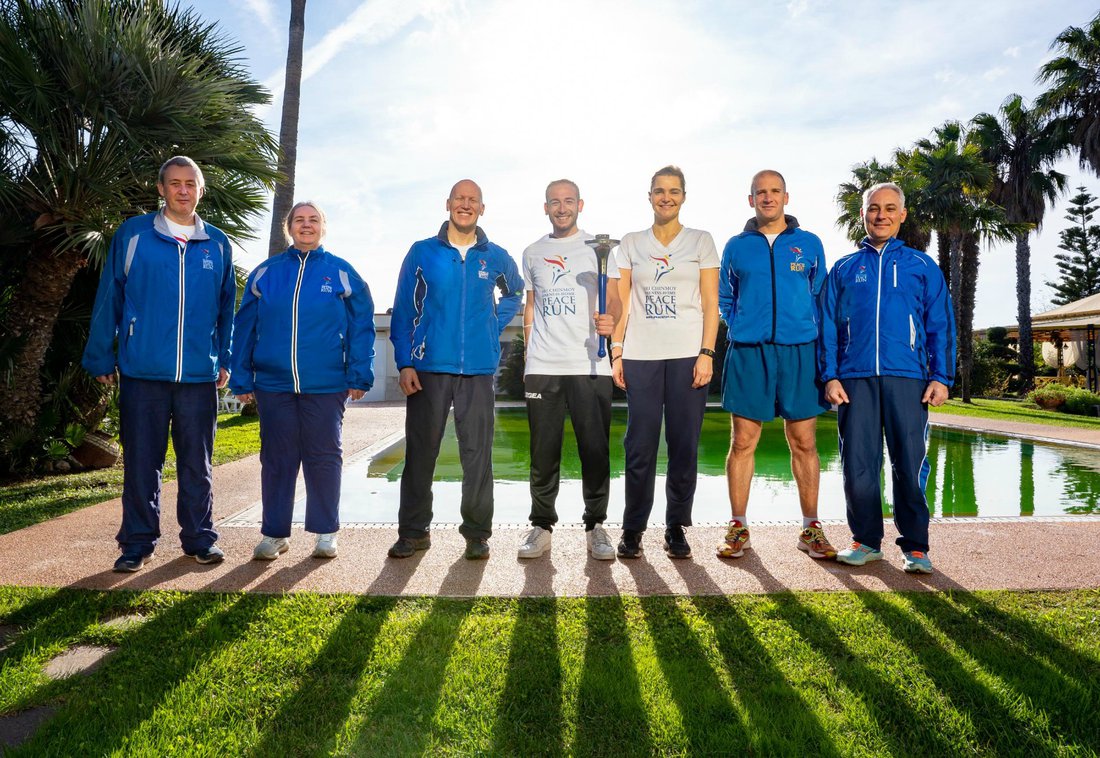
The golden morning light in Crispiano. The team with Peace Run's friend Dale, the artist that created the longest artwork of the world you van see the report of the guinness record here.
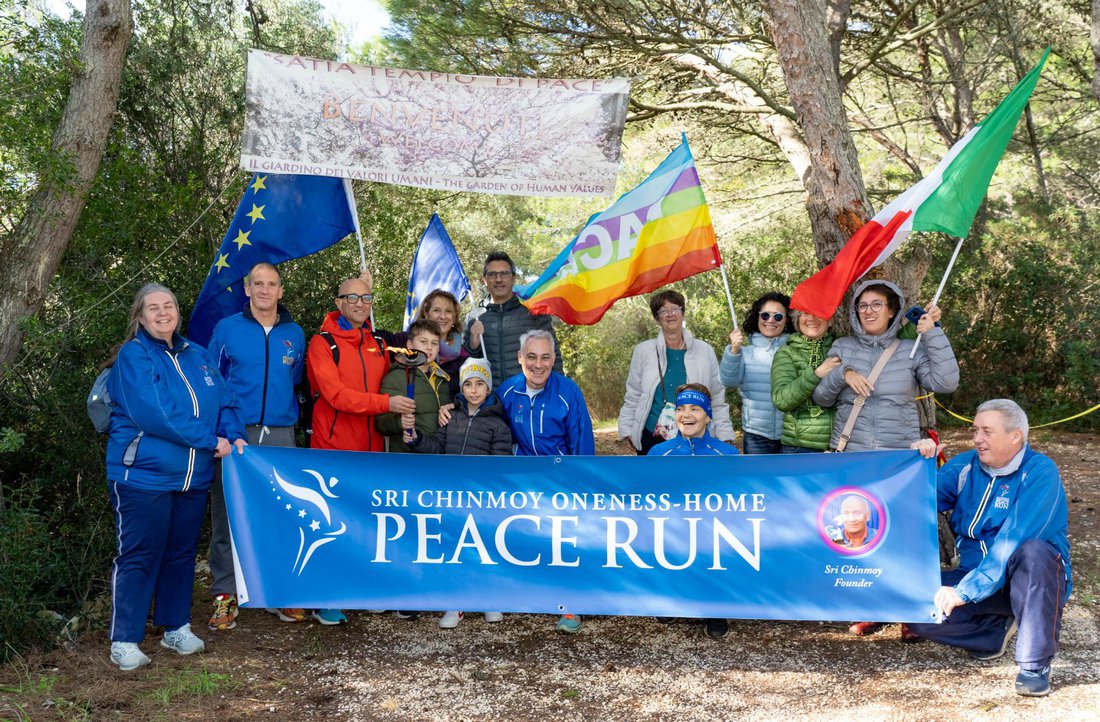
At the entrance of the Temple of Peace in Pascarosa village. The temple is a project of Fondazione Università della Pace Mondi di Luce. Peace Run visited the association already in the past, last time was in 2016.
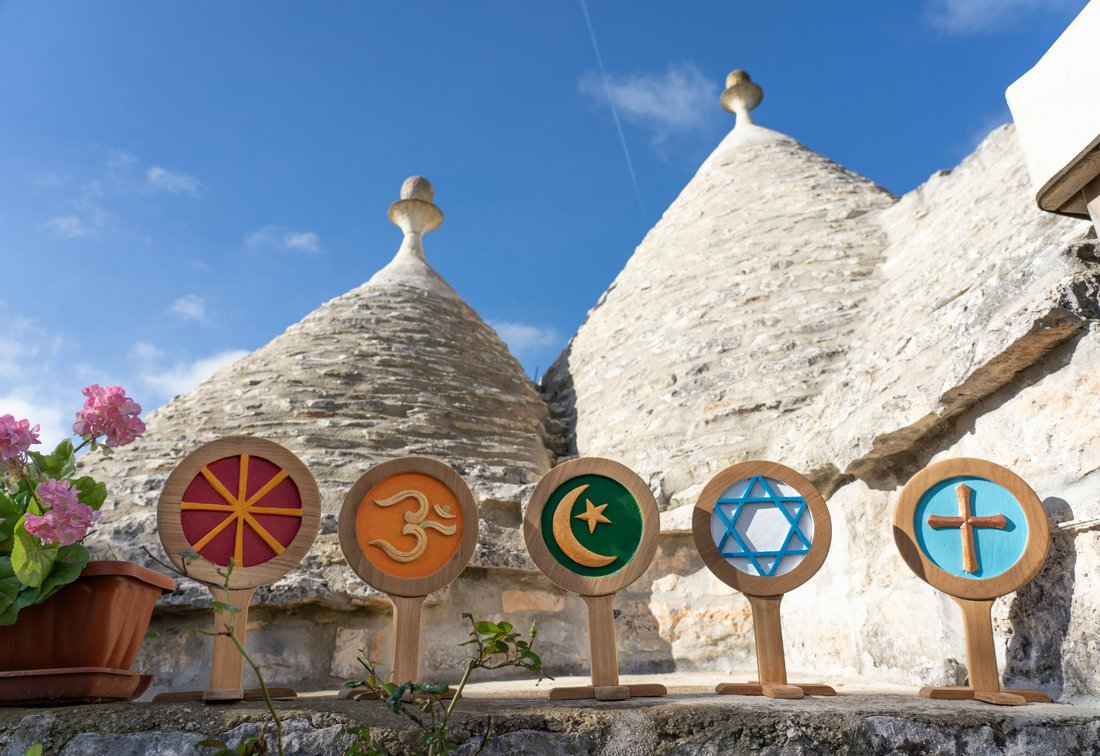
All religions should walk together on the road of peace. Detail of the buildin of the Satìa Temple of Peace of Pascarosa
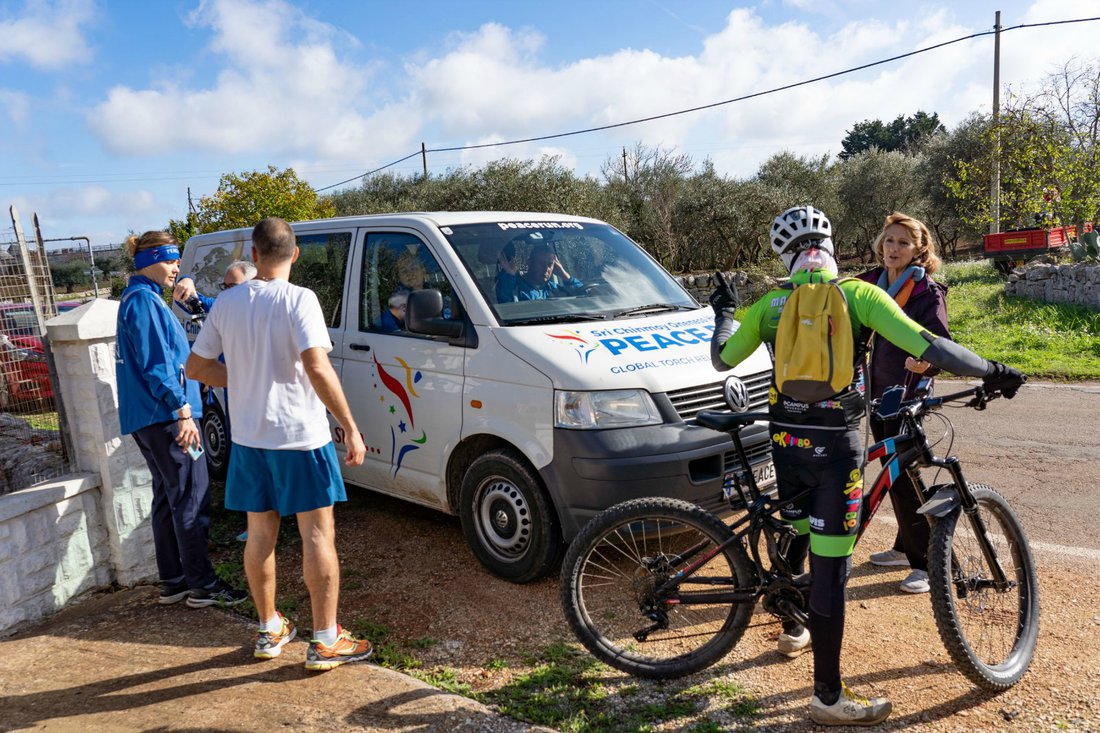
The start of the run outside Pascarosa on the way to Martina Franca. We will run with local cycling children.
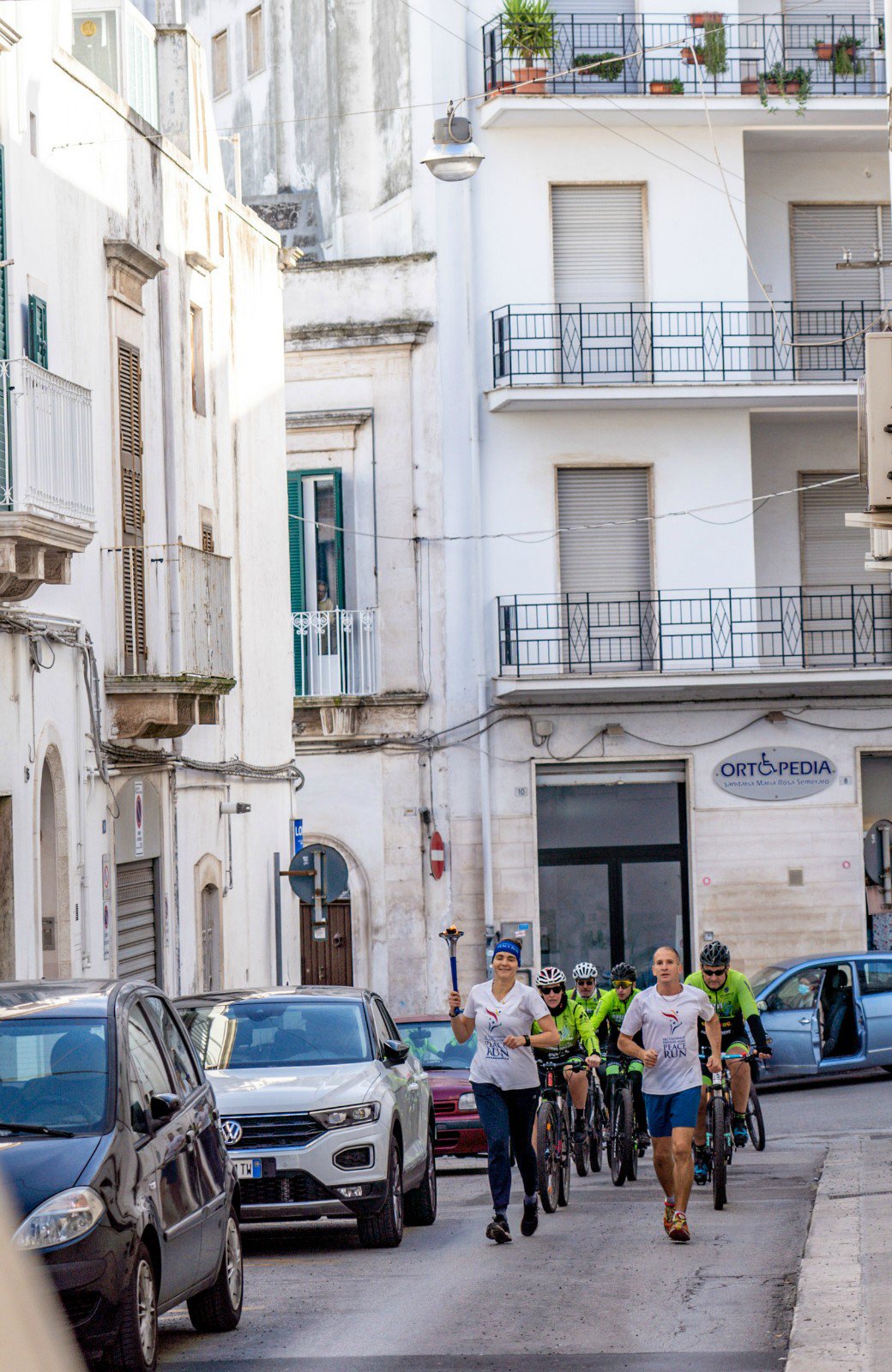
Arriving in Martina Franca.
Martina Franca is a fourteenth-century town located in the middle of the Itria Valley and which falls within the municipal area of the Bosco delle Pianelle.
Frequented since the Neolithic, it was founded by the Prince of Taranto Philip I of Anjou. The city is known for its Baroque architecture and for the Valle d'Itria music festival.
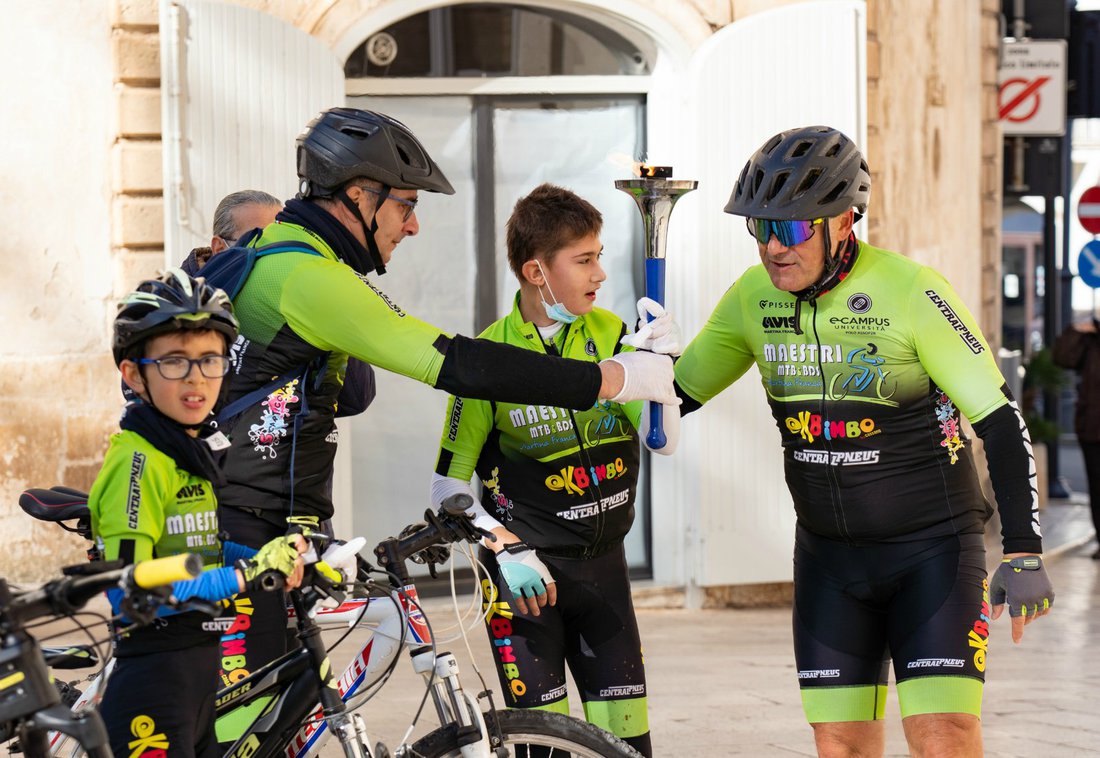
The torch is passed to Francesco Basile president of Association “Maestri Mtb-Bds” (mountain bike and road bike)
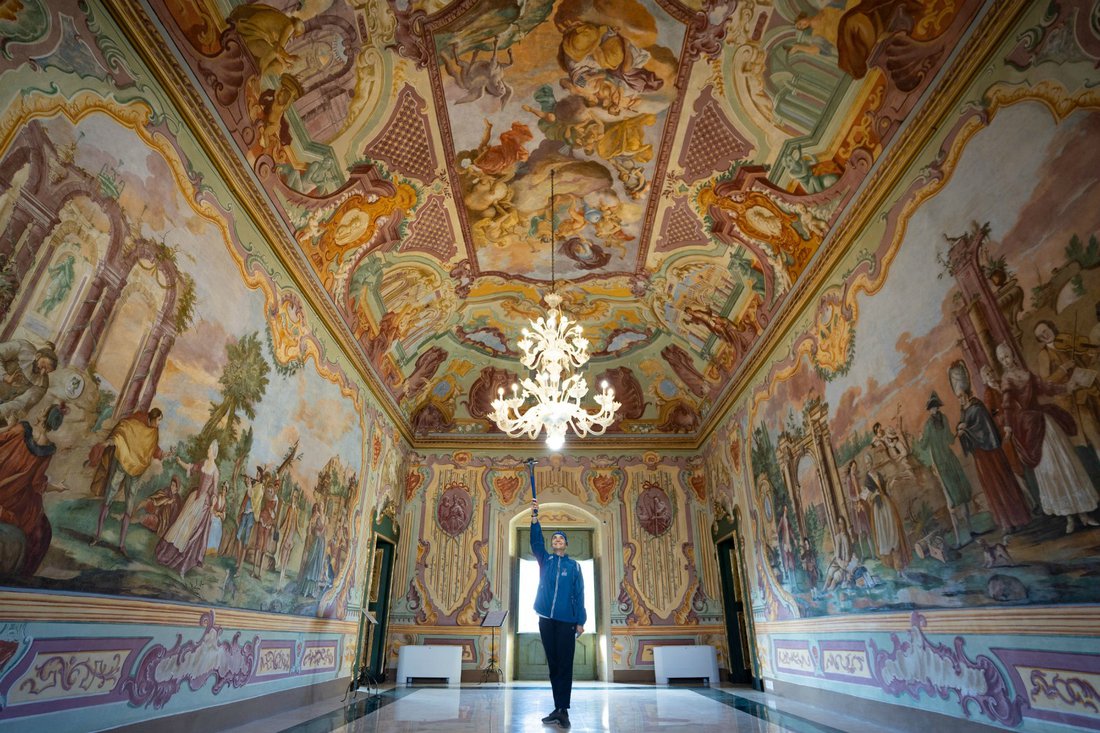
Out tall member Varunavi with the Peace Torch surrounded by the beauty of the decorations of the astonishing Palazzo Ducale of Martina Franca.
In the prestigious place where the castle of Raimondello Orsini was built in 1388, the Ducal Palace of Martina Franca was built in 1668, the work of the Bergamo architect Giovanni Andrea Carducci, and today the seat of the municipal offices.
Simple and linear in the main façade, the structure summarizes various architectural features typical of Renaissance art, combined with Baroque decorative elements, made by skilled local stonecutters, not far from the typical decorativism of Salento art.
Built between the seventeenth and twentieth centuries, the complex overlooking Piazza Roma was begun in 1668 by Petracone V Caracciolo, who chose that place for his residence. The building not only enhanced the political, economic, and artistic role of the family, but also consecrated its feudal power over the entire dukedom.
Work on the first part of the Doge's Palace began in 1668 at a cost of 60,000 ducats. The project included 300 rooms, chapels, stables, a courtyard, a theater, and a guesthouse. Due to the unsustainability of costs, the building will never be completed. Duke Francesco III in 1773 completed the eastern area of the building. In 1913 the building was sold and the new buyers made substantial changes. However, the complex took on its present appearance in 1929, when radical restoration and completion works were carried out to ensure the functionality of the new municipal seat.
From the triangular Piazza Roma, you can admire the elegant and scenic facade of the building. The accentuated horizontal development is highlighted by the long balcony decorated with finely wrought iron railing and the mezzanine enriched by small square windows with vertical pilasters that interrupt its linearity. The entrance portal has a round arch supported by two semi-columns, with entablature decorated with bas-reliefs, apotropaic masks, and an epigraph that attributes the construction of the building to Petracone V.
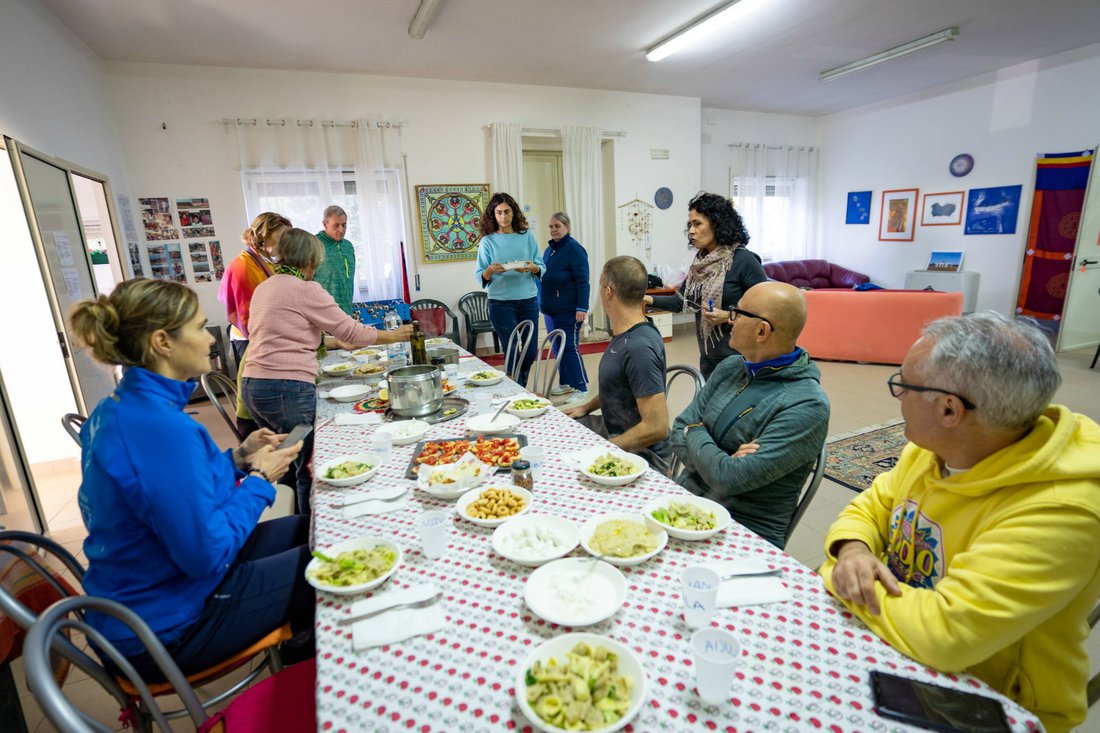
Tasty lunch with local ingredients. Lunch is kindly hosted by our friend of the
Fondazione Università della Pace Mondi di Luce.
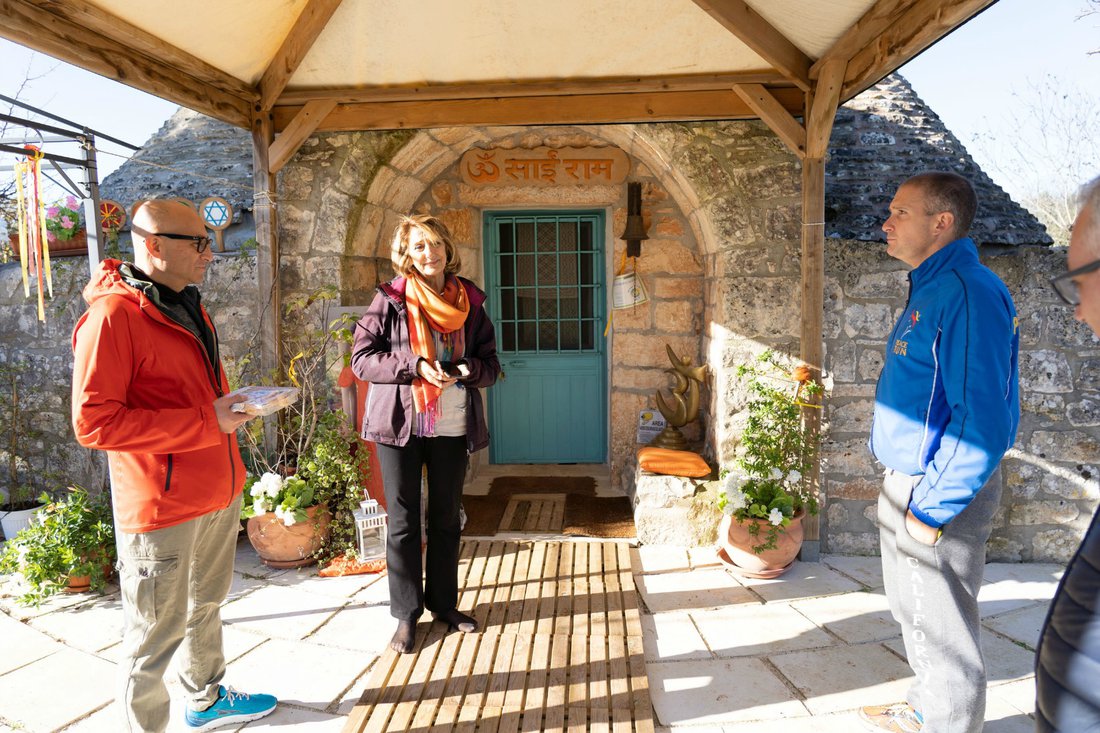
Lucia Albanese, a longtime friend of Peace Run is the President of the Fondazione Università della Pace Mondi di Luce, in front of the Satìa Temple of Peace.
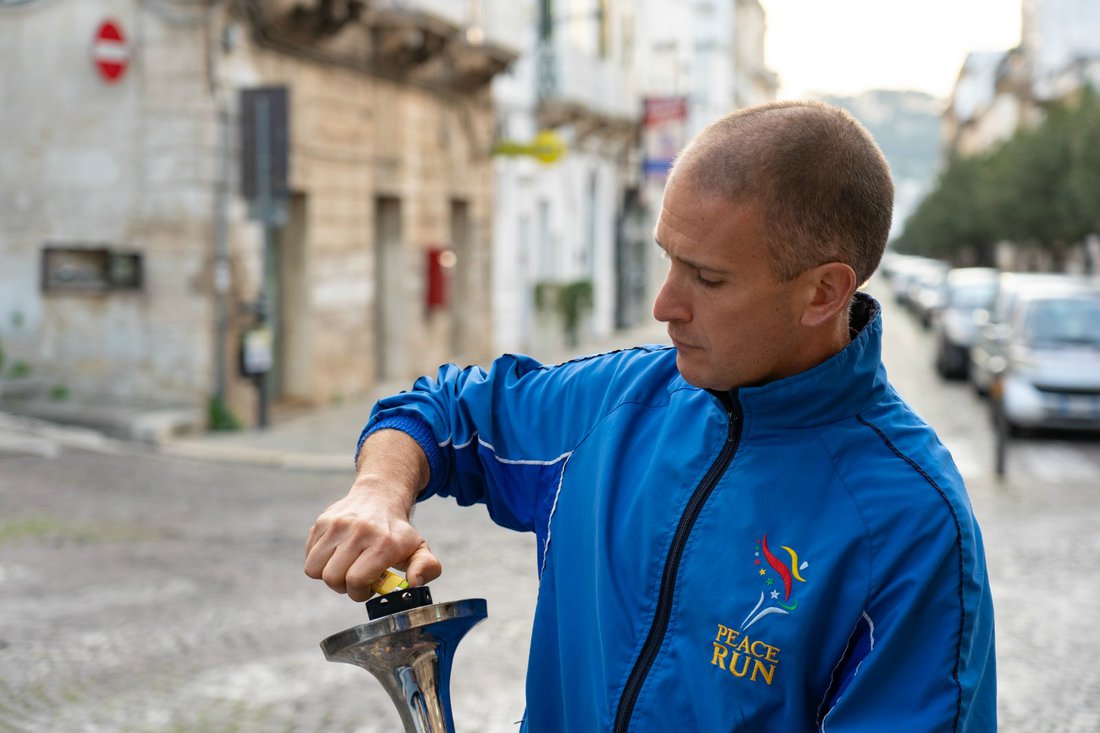
Andra i s lighting the Peace Torch for the meeting with the Mayor of the beautiful Ostuni the "white" city.
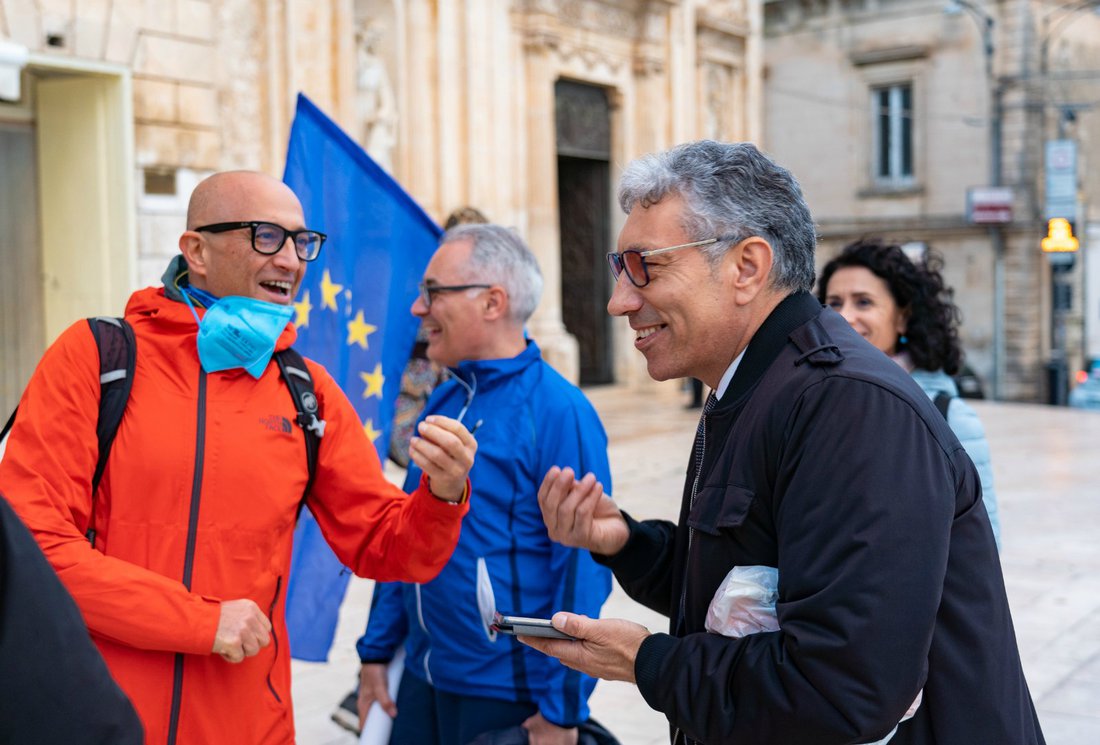
Meeting Pasquale Pignatelli president of CSI Association of Ostuni, an old friend of Peace Run that joined us in our run in Ostuni in 2016.
Notice the famous gestures of the hands of South of Italy, you may call it a traditional non verbal communication.
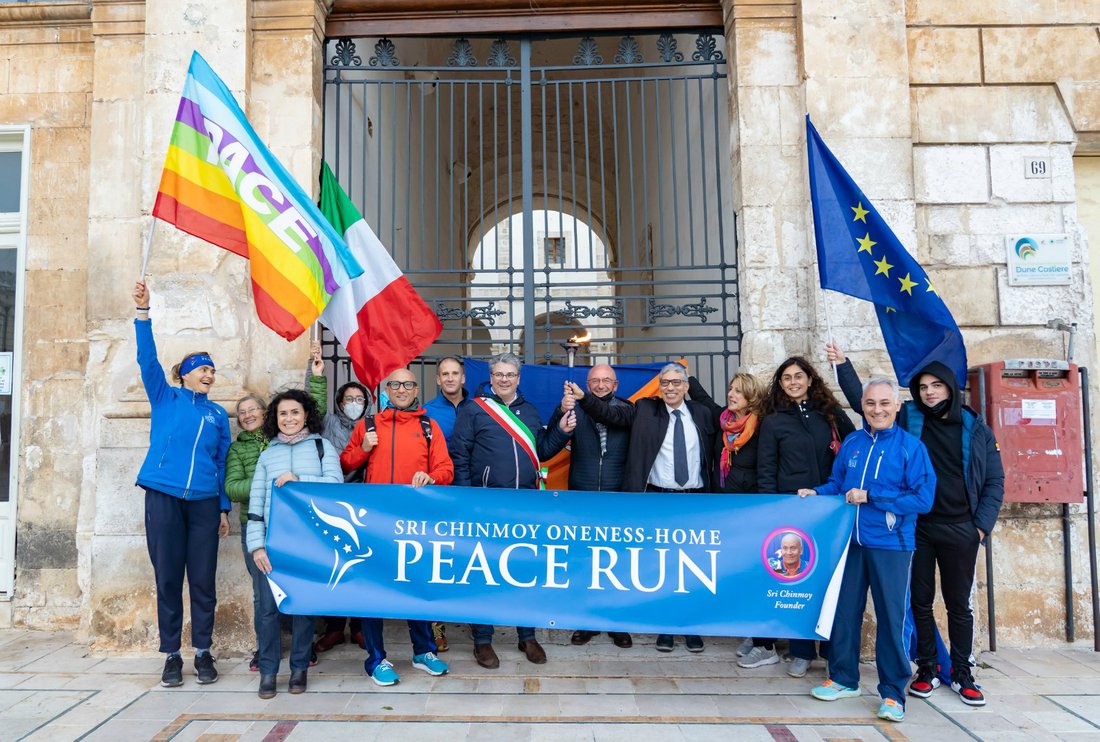
Old friends meet the new Mayor Guglielmo Cavallo. Was a great joy for us to meet again Mario aka "the king of Pascarosa" head of local club of "Bersaglieri".
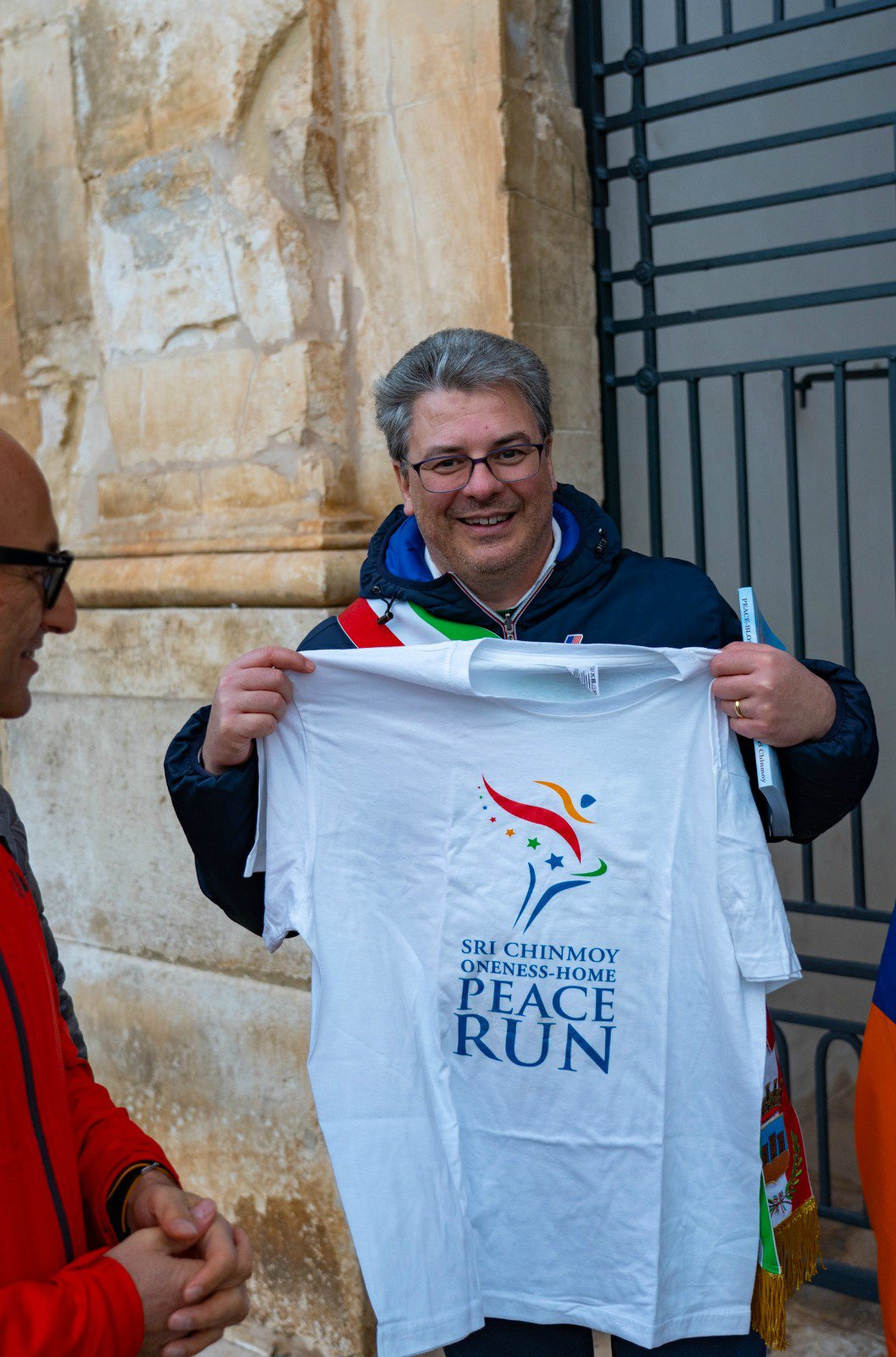
The Mayor posing with Peace Run t-shirt. He promise that he will train so he will run with us for the next visit.
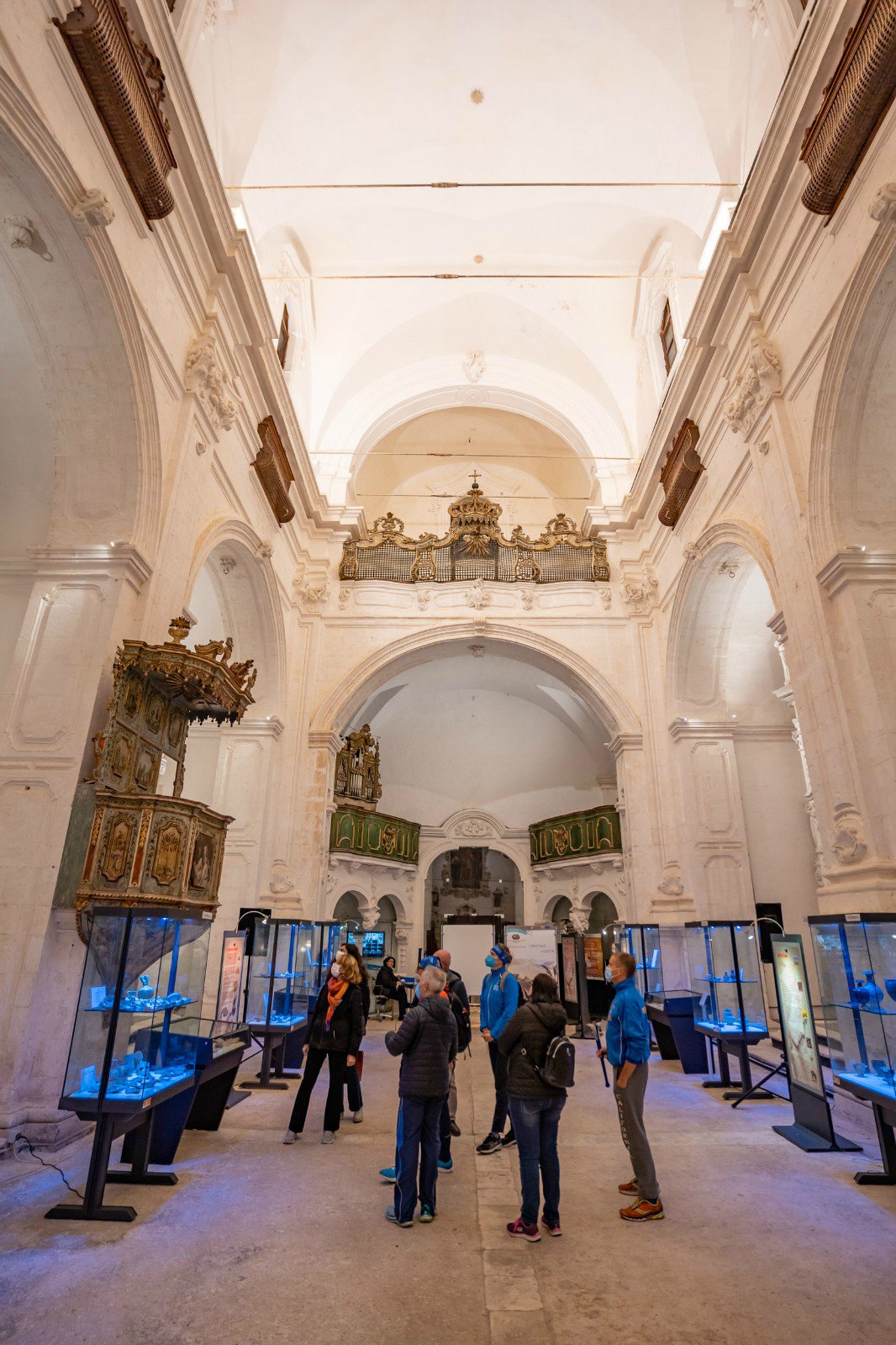
Visiting the Museum of Preclassical Civilizations of Southern Murgia.
The Ostuni Museum, inaugurated on 14 May 1989 in the former Carmelite monastery of Santa Maria Maddalena dei Pazzi, with the adjoining church of San Vito Martire, after a careful restoration, was reopened in 2011 with the temporary exhibition “Ostuni ed il its territory: daily life and the sacred in archaeological evidence ".
The church, known by the name of "Monacelle", was entirely built between 1750 and 1752, based on a project by an anonymous Neapolitan engineer and was built by workers from Ostuni in place of a previous medieval church of San Vito, struck by the earthquake of 1743.
The facade highlights in its lines the beginning of the Rococo season in Ostuni, which will last until the end of the 18th century. The interior, with a single nave, has five stone altars of great artistic value and two choirs, also in stone, supported by two arches with cherub heads. Seven recently restored canvases by Neapolitan and Roman artists adorn the altars. In addition to the canvases and stone altars, the wooden furnishings are also rich, such as the eighteenth-century organ and the pulpit, the internal doors and the entrance door, the windows and the gratings of the women's galleries.
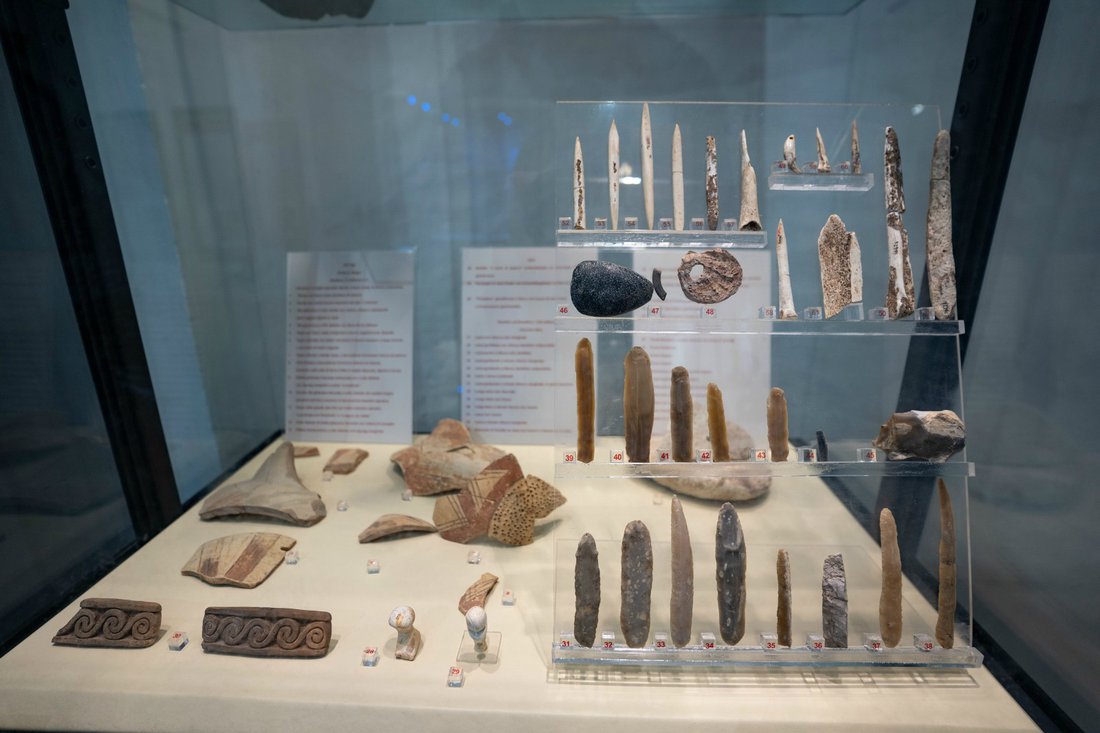
Neolithic settlements
Topographic researches conducted in numerous Neolithic sites on the Adriatic coast are presented. Fontanelle in particular is noted which, in addition to the numerous remains of cereals contained in lumps of hut plaster, such as the complete imprint of an ear of Triticum dicoccum, preserves archaic impressed ceramics and a small-sized laminar lithic industry (perforated and geometric ). Among the caves frequented in the IV-III millennium, that of S. Biagio is of particular importance, of which the lithic industries and ceramics of Serra d'Alto facies are presented.
Finally, there are the graffitied ceramics with representations of prayers coming from the Grotta di Santa Candida near Francavilla Fontana.
Sant'Angelo cave
The materials found in 1984 in this extensive karst cavity are exhibited, almost certainly a great place of worship in the Neolithic and Eneolithic periods. The top of the Pleistocene deposit (layer III), identified with the excavations of 1984, was used for the construction of a hearth surrounded by stones (layer II), with an adjoining area strewn with charred remains of Triticum dicoccum (6890 ± 70 BP - Gif 6724). Subsequently, a stone floor was created on which hearths and real holes containing charred cereals (6530 ± 70 BP - Gif 6722) were planted with evolved impressed ceramics, geometric graffiti with linear motifs, lithic industry and the remains of domestic animals. Among the materials there is a singular anthropomorphic representation with raised arms in the typical pose of the praying person.
Grotto of Santa Maria di Agnano
The last three rooms of the museum itinerary are entirely dedicated to the Grotto of Santa Maria di Agnano.
The first section is dedicated to the life of the cave in medieval and modern times, which collects archaeological evidence referring to the chapel of the Virgin Mary, with architectural fragments, frescoes and ceramics.
The second room is dedicated to the frequentation of the site in the Messapian age, when the cave and the surrounding terraces were probably the site of a sanctuary perhaps dedicated to the goddess Demeter. The fragments of local and imported pottery, the inscriptions in the Messapian language, the weapons and the terracotta belong to the period between the end of the V and the III-II century BC.
Finally, the prehistoric section presents the casts of the two Paleolithic burials, Ostuni 1 (the Woman of Ostuni, pregnant with fetus of 26.461-26115 BC) and Ostuni 2 (28.200-27.568 BC), in addition to the original remains of Ostuni 1 and equipment that accompanied the depositions.
The display cases collect a significant choice of Paleolithic and Neolithic materials.
The museum itinerary ends with a suggestive reconstructive diorama of the cave and the burial of the Woman of Ostuni.
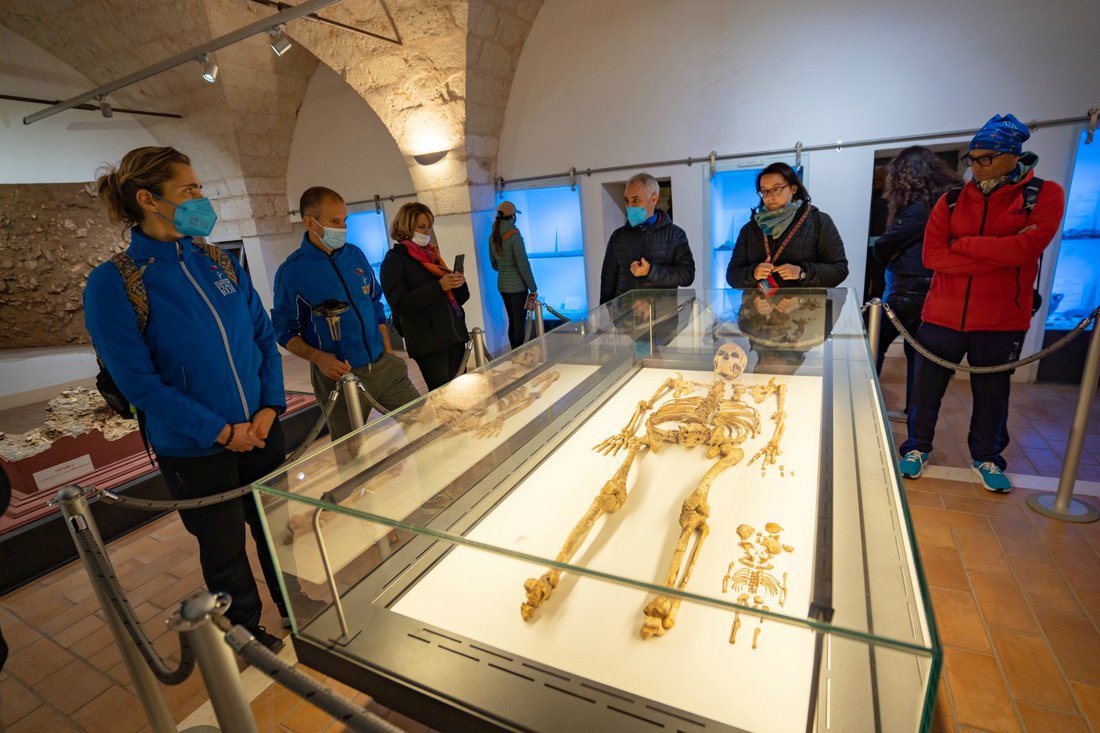
Our guide Antonella explain us that the Woman of Ostuni is older than what was imagined.
The mother of all mothers, the only example in the world of a pregnant female figure belonging to the Upper Paleolithic and buried in the hollows of a karst gorge on the Ostuni hill of Agnano, she never ceases to amaze the White City.
20 years after her discovery (which took place in 1991 by the Ostuni archaeologist Donato Coppola), we learn that her years are quite different. It has not rested there for 24,410 years as revealed by studies made on the basis of the coals contained in the burial pit, but for about 28,000 years as claimed in December 2010 by the University of Leipzig (Saxony), specialized in the study of age starting from the analysis of bone.
It is the testimony that Puglia was not a borderland, but had a primary importance, inhabited 30 thousand years ago by tribes of hunters that this site had chosen as strategic for defense and hunting. Next to the woman, the visitor can also admire the cast of the Ostuni Man, an adult hunter, also buried in the same cave in a fetal position next to and with his back to the pregnant woman. The latest carbon 14 studies would date his burial to 30,000 years ago and this would make him larger than the Woman of Ostuni.
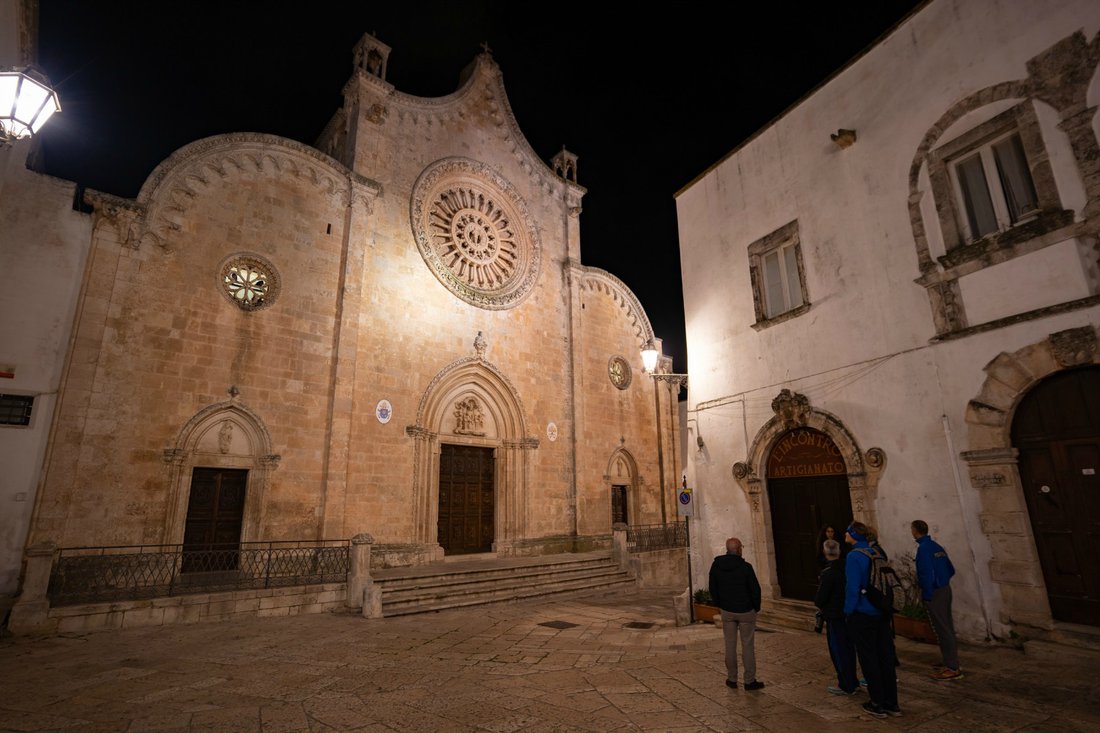
Admiring the cathedral of Ostuni. Located at the top of the highest hill in the city and dedicated to Santa Maria dell'Assumption, the cathedral was begun in 1435 and completed between 1470 and 1495.
It has a characteristic late Gothic facade, divided into three parts by pilasters. The central part ends with a tympanum formed by two inflected arches, the wings with two half lunettes; tympanum and lunettes have a crowning of trefoil arches with a serrated profile on carved corbels, which extends along the sides and around the transept. The façade is opened by three elegant ogival portals (in the lunette of the median one a bas-relief depicts the Madonna and Child in glory) each surmounted by a rose window, of which the central one, considerably larger, has 24 rays. Other rose windows are in the heads of the transept.
The interior, in the form of a Latin cross with three naves on columns, was rebuilt in the eighteenth century, with a flat painted ceiling and baroque chapels (a column of the original construction remains at the entrance). At the end of the left aisle, there is a wooden altar from 1734 with busts of saints Oronzo, Biagio, and Agostino. In the apse, there is a richly carved walnut choir (17th century). In the right aisle, the sepulcher of Bishop Filo (1720); in the last chapel, there was a Madonna with Child and Saints, by Jacopo Palma il Giovane (stolen).
The chapter archive has over 200 parchments since 1137. Thanks to the historian Carmelo Greco who guided us through the history and beauties of Ostuni by night.

